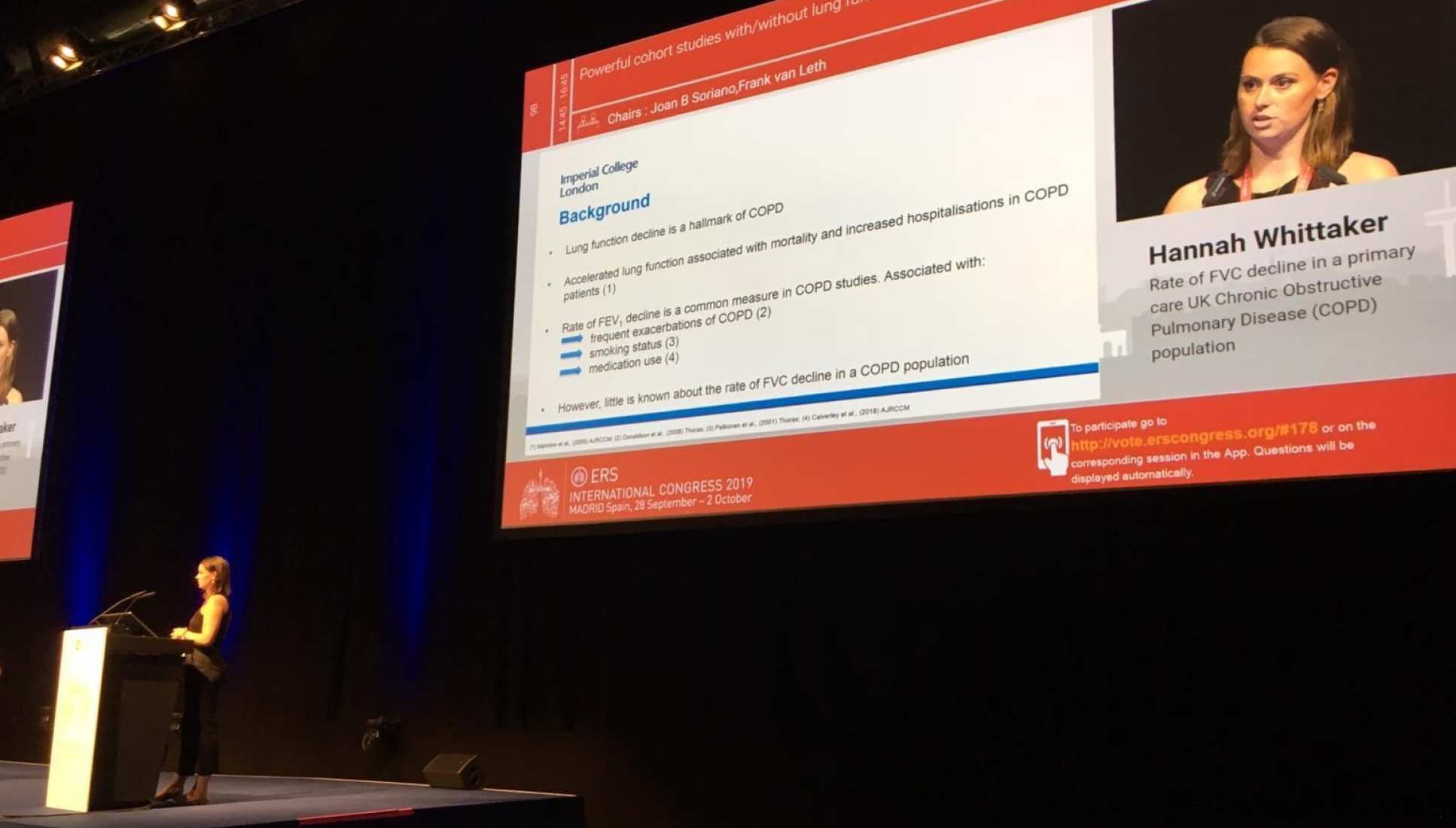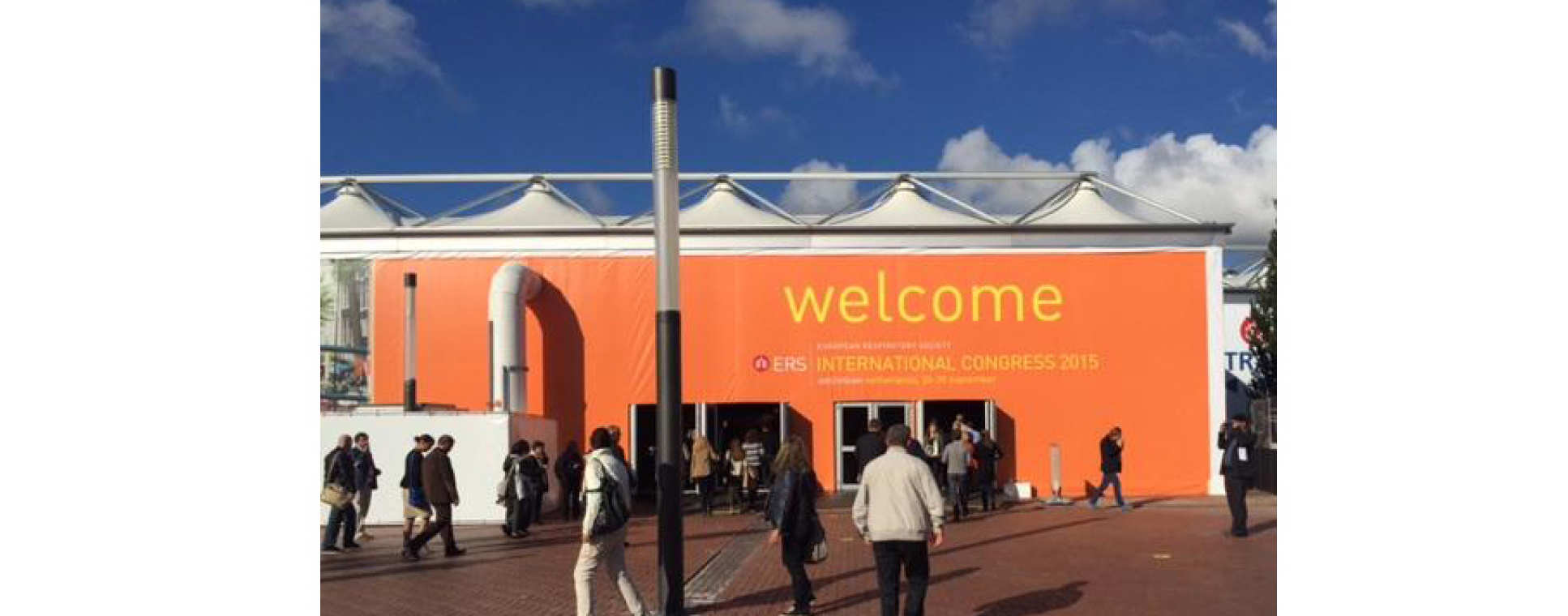Noelle Pisacano
ACR Convergence 2022
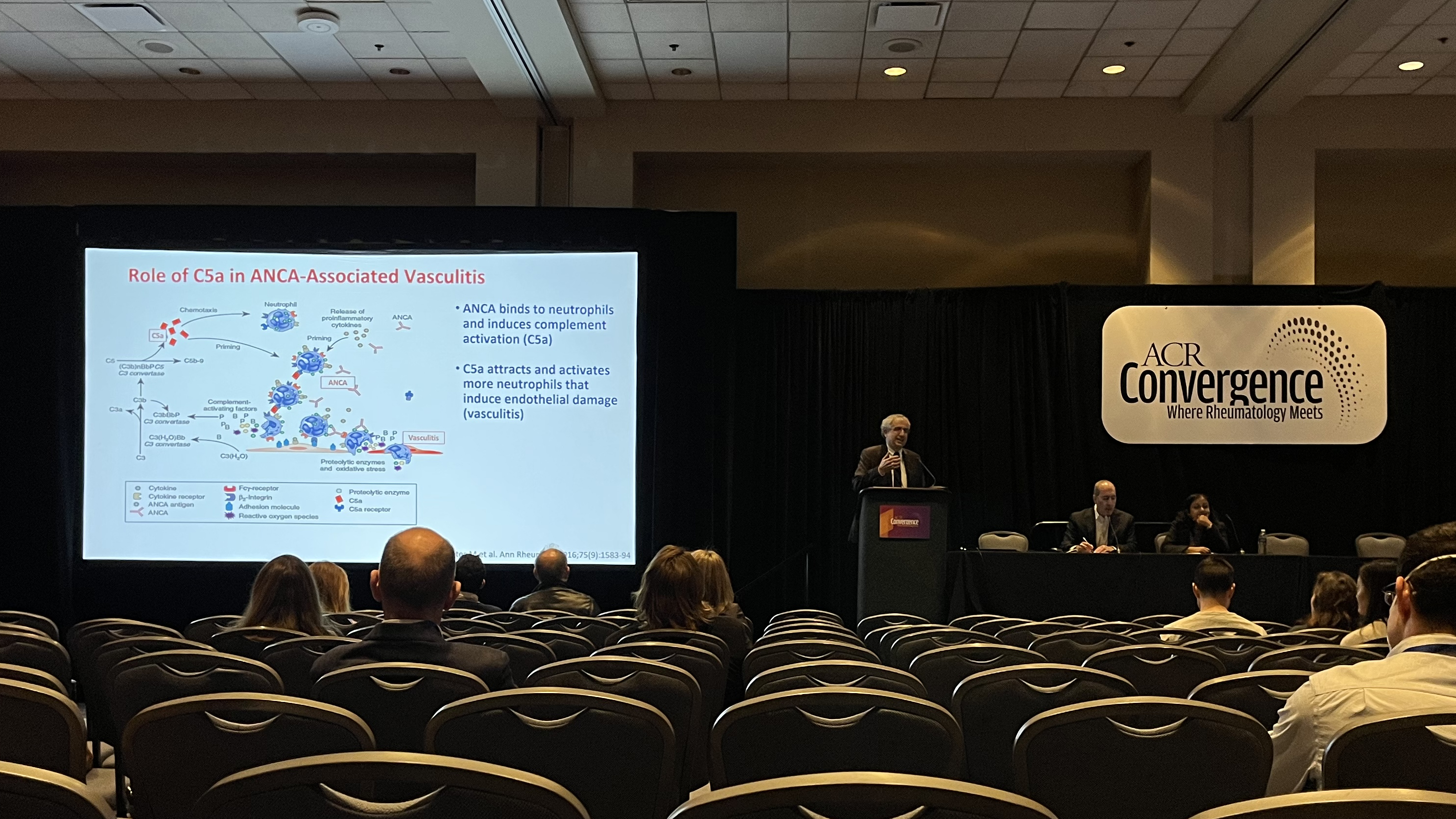 The NHLI Foundation Travel Award allowed me to attend and present my work at my first in person international conference at the ACR Convergence 2022. For this experience, I am extremely grateful.
The NHLI Foundation Travel Award allowed me to attend and present my work at my first in person international conference at the ACR Convergence 2022. For this experience, I am extremely grateful.
The American College of Rheumatology (ACR) encompasses members, including scientists and healthcare professionals, specialising in education, patient care, and research in rheumatic disease. With just under 15,000 attendees from over 100 countries, the ACR holds an annual international meeting, ACR Convergence, in the US for in-training and certified clinicians and scientists of all levels of experience.
While Philadelphia is an international transportation hub, this conference brought together scientists and clinicians worldwide to focus on their passion for rheumatology and highlight their research. The conference was held in the heart of Philadelphia at the Philadelphia Convention Centre, located right next to the busy Reading Terminal Market where conference attendees could be found getting their midday Philly cheesesteaks, or afternoon coffee pick-me-ups. We made sure to dress smart, yet comfortable as we sped walked to navigate the packed schedule of presentations spanning the large venue.
I was excited to be a part of the packed schedule encompassing the whole spectrum of rheumatic disease. It was refreshing to see plenty of work being showcased on the rarer diseases, including my PhD area of study, ANCA vasculitis. Coming from a background in translational research, the integrated overlap of clinical and basic science at the ACR was a perfect balance. Between updates of ongoing clinical trials, seeing progression of research from presenters whom I have watched at other conferences, and proudly attending my NHLI colleagues’ oral presentations, I was exposed to an impressive group of international scientists and clinicians.
I was excited to present my work on biomechanical phenotyping of neutrophils in ANCA associated vasculitis The ACR had set up a virtual interface allowing viewers and forum attendees to ask questions and converse with the presenter of the poster. I received a clever query regarding investigating a specific cell type relevant to my area of work, and reassuringly this is included in one of the current ongoing aims in my PhD. Additionally, it was interesting to see similar routes of investigation being newly applied to other rheumatic diseases, which will inform my future work, particularly with regard to potential overlapping biomarkers, as well as enabling me to learn how to optimise my methodology and technique from experts in the field.
Having the opportunity to participate in forums including important discussions in specific areas directly relevant to my research, see presentations from inspirational scientists and clinicians, present my own work and witness my colleagues present to a wider audience was an invaluable experience. I truly owe my many thanks to the NHLI Foundation for this funding as it exposed me to such a vast range of research, allowing me to engage in interesting discussion, receive constructive feedback, and absorb as much knowledge as possible to bring back home with me to London.
Alice Collins
The 7th Molecular Microbiology and 8th M4 Conference 2022
 The combined 7th Molecular Microbiology and 8th M4 conference took place in Birmingham University on 15th and 16th of September, having been postponed since 2020 due to the coronavirus pandemic. Originally organised by Jörg Vogel (University of Würzburg) and John Helmann (Cornell University) eleven years ago, it is directly linked to the journal Molecular Microbiology (Molecular Microbiology - Wiley Online Library). The conference aims to line up speakers that have recent publications with the journal as well as early career researchers in the field like myself. This year attendees represented a diverse range of research on both the microbes and molecular mechanisms underpinning bacterial behaviour. I submitted an abstract pertaining to my PhD project which was successful, and I was selected for oral presentation- my first at an external conference. My attendance was made possible through my successful application to the NHLI Travel Foundation for a travel award, for which I am extremely thankful as it was a great experience. It was my first opportunity to present some of the work I have conducted as part of my PhD and introduced me to other areas of molecular microbiology from researchers both in this country and abroad. This was also the first in-person conference I have attended during my PhD due to the Covid-19 pandemic and it made me realise that there really is no substitute for in-person meetings for sharing work with others!
The combined 7th Molecular Microbiology and 8th M4 conference took place in Birmingham University on 15th and 16th of September, having been postponed since 2020 due to the coronavirus pandemic. Originally organised by Jörg Vogel (University of Würzburg) and John Helmann (Cornell University) eleven years ago, it is directly linked to the journal Molecular Microbiology (Molecular Microbiology - Wiley Online Library). The conference aims to line up speakers that have recent publications with the journal as well as early career researchers in the field like myself. This year attendees represented a diverse range of research on both the microbes and molecular mechanisms underpinning bacterial behaviour. I submitted an abstract pertaining to my PhD project which was successful, and I was selected for oral presentation- my first at an external conference. My attendance was made possible through my successful application to the NHLI Travel Foundation for a travel award, for which I am extremely thankful as it was a great experience. It was my first opportunity to present some of the work I have conducted as part of my PhD and introduced me to other areas of molecular microbiology from researchers both in this country and abroad. This was also the first in-person conference I have attended during my PhD due to the Covid-19 pandemic and it made me realise that there really is no substitute for in-person meetings for sharing work with others!
This was a focussed international conference with approximately 100 attendees which brought together leading researchers from all over the world to discuss many key molecular mechanisms employed by microbes. Talks ranged from PI level to first year PhD, as well as well-rounded research stories on unpublished data and the use of new cutting-edge techniques. This built a friendly and inclusive environment for everyone to discuss their science. It provided a great opportunity for networking and asking questions of all the researchers present, particularly those whose research was similar to my own. This conference enabled me to attend talks by researchers from the UK, Europe and America which ranged from topics such as; transcriptional regulation of archaea (Tom Santangelo, Colorado University), how bacteria form their cell walls to create their ‘rod’ shape (Séamus Holden, University of Warwick), and even microbes that make magnets (Dirk Schüler, University of Bayreuth)!
My research focusses on the opportunistic pathogen Pseudomonas aeruginosa, a Gram-negative bacteria which creates a major problem for people with Cystic Fibrosis. Due to the impaired mucus clearance in their lungs, infections by P. aeruginosa are common in CF. P. aeruginosa is particularly associated with poorer health outcomes in these patients, but the mechanisms leading to colonisation and declining patient health remain unknown. My project is focused on the molecular understanding of Gram-negative secretion systems that P. aeruginosa uses, both for exporting proteins to interact with its environment as well as fighting with other bacteria and (perhaps) fungi. For me it was very exciting to see so many researchers presenting on other classical and non-classical secretion systems in different bacterial model systems, as well as being able to talk to them about their work. I was extremely excited to present my own work during my oral presentation in the molecular biology of human pathogens session and felt that I got a lot out of the experience. Presenting in front of an audience which was diverse in their research interests, whilst still understanding the basic molecular mechanisms underpinning these processes and having some great discussions on my work during question time and throughout the rest of the conference was invaluable. I feel that this experience was extremely beneficial for my professional development in science communication, as well as learning about other techniques being employed by researchers in the field and how they could relate to my work.
I would again like to thank the NHLI Foundation for supporting my attendance at the Molecular Microbiology and M4 conference through the NHLI Travel Award scheme which I not only enjoyed but has enabled me to disseminate my research so widely as a result. I am looking forward to what the future of molecular microbiology holds!
Lucia Labeur-lurman
British Society for Immunology Congress 2021
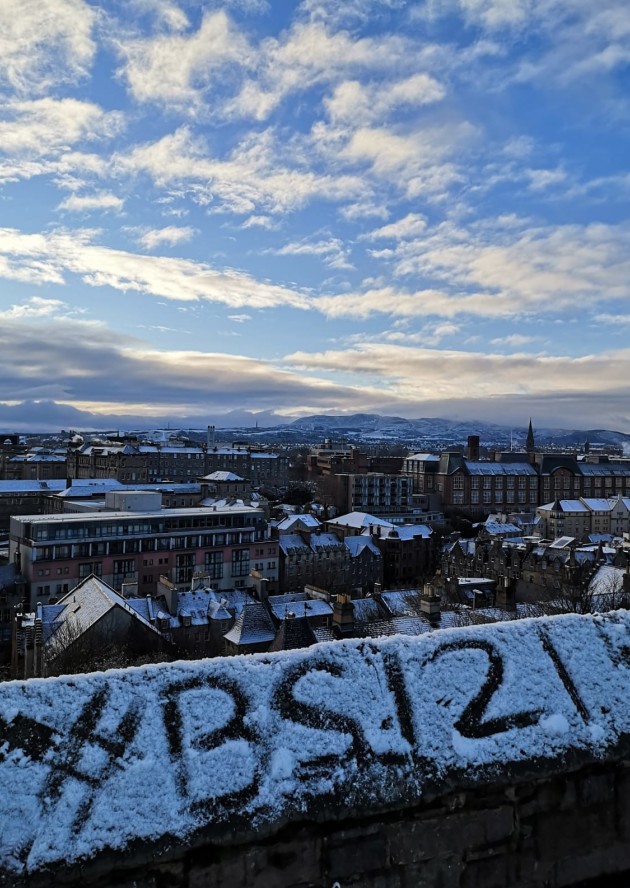 I would like to thank the NHLI foundation and the BSI for supporting my attendance at the British Society for Immunology (BSI) Conference 2021 in Edinburgh. As the first hybrid meeting of the society, this represents the largest annual meeting of immunologists in the UK, with over 1,500 attendees, over 1,400 of whom attended in person. We were all able to enjoy a 4-day congress with a programme full of cutting-edge research from leading UK and international researchers. With plenary sessions as well as over 20 parallel sessions this was a great opportunity to engage with talks from world leaders in the immunology field, network as well as be able to present my own work.
I would like to thank the NHLI foundation and the BSI for supporting my attendance at the British Society for Immunology (BSI) Conference 2021 in Edinburgh. As the first hybrid meeting of the society, this represents the largest annual meeting of immunologists in the UK, with over 1,500 attendees, over 1,400 of whom attended in person. We were all able to enjoy a 4-day congress with a programme full of cutting-edge research from leading UK and international researchers. With plenary sessions as well as over 20 parallel sessions this was a great opportunity to engage with talks from world leaders in the immunology field, network as well as be able to present my own work.
With session topics ranging from “Unique immunological landscape of the tumour microenvironment”, “T cells and infection”, “Induction of immune tolerance”, “B-T interactions in health and disease”, “Immunology at the interference: Understanding barrier immunity” and many more, this meeting allowed us to experience a bast spectrum of the immunology field from basic research to clinical translation. One example of an inspiring talk from the “Induction of immune tolerance” session was given by Prof. Graham Anderson from Birmingham University. The talk was about how failures in the thymus medulla regeneration during immune recovery can cause tolerance loss and lead to autoimmunity due to an impairment in the generation of T regulatory cells, while maintaining all other CD4+ T cell development intact. Another stimulating pair of talks were given by Prof Frits Koning from Leiden University Medical Center in the Netherlands and Prof Florent Ginhoux from the A*STAR institute in Singapore in the “Immune development and function from fetal to neonatal life” session. Prof Koning showed that the in-utero environment is not immunologically naive, as previously believed, but how antigens can penetrate it and are needed to develop the fetal intestinal immune system and even establish immunological memory before being born. Prof Ginhoux went on to show evidence of microbial colonization as early at week 15 of gestation in the fetal intestine. Finally, at the end of the conference, we were given the opportunity to hear first-hand how the ChAdOX1 vectored vaccine (Oxford AstraZeneca vaccine) against SARS-CoV-2 was developed by no other than DBE. Prof. Sarah Gilbert herself, from the University of Oxford.
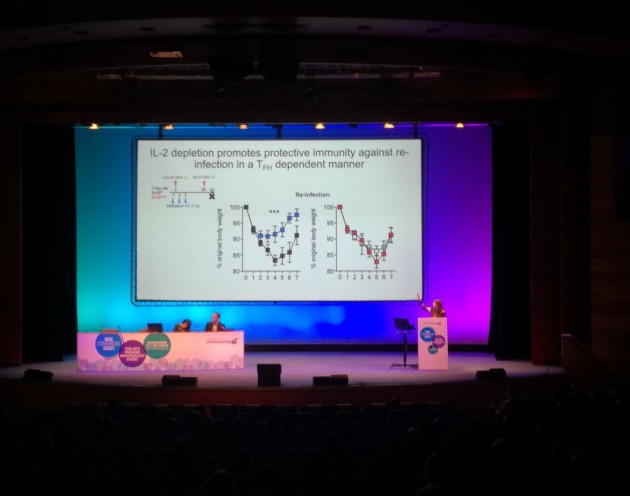 Apart from hearing from these and other great speakers, I also got the opportunity to present my work on how an enriched IL-2 environment in early life limits T follicular helper cell development and protective immunity after respiratory virus infection. I not only give a talk at the “Immune development and function from fetal to neonatal life” session, but was also selected to speak in the “Bright Sparks” session which highlights the best PhD and postdoctoral researchers abstract speakers. Sharing the stage with such an array of young talent from around the UK and Europe was truly exciting, and I was delighted to be awarded the first prize for the PhD category. This being my first conference as a PhD student (partly because of the COVID-19 pandemic), it was a great opportunity to present my work and myself to fellow immunologists, network and learn a lot from other talks and posters.
Apart from hearing from these and other great speakers, I also got the opportunity to present my work on how an enriched IL-2 environment in early life limits T follicular helper cell development and protective immunity after respiratory virus infection. I not only give a talk at the “Immune development and function from fetal to neonatal life” session, but was also selected to speak in the “Bright Sparks” session which highlights the best PhD and postdoctoral researchers abstract speakers. Sharing the stage with such an array of young talent from around the UK and Europe was truly exciting, and I was delighted to be awarded the first prize for the PhD category. This being my first conference as a PhD student (partly because of the COVID-19 pandemic), it was a great opportunity to present my work and myself to fellow immunologists, network and learn a lot from other talks and posters.
I had a fantastic time in Edinburgh! As an early career researcher this conference was an inspiring and extremely valuable opportunity both professionally and personally that I will never forget. Once again, I would like to thank the NHLI and BSI for their travel awards that allow me to attend and talk about my research. I do look forward to future events from this and other societies and what the future research will bring!
Kyle Mincham
British Society for Immunology Congress 2021
I would like to thank the NHLI Foundation for providing generous travel support which allowed me to attend and present my poster at the British Society for Immunology (BSI) Congress 2021 in Edinburgh, Scotland. The BSI Congress is the UK’s premier immunology event and the 2021 Congress was the largest to date, with over 1,600 delegates.
During the Congress I had the opportunity to attend a host of inspiring presentations from invited speakers including Associate Professor Florent Ginhoux, Professor Sejal Saglani, Dr Tim Halim and Professor Kazuyo Moro, and importantly the keynote presentation by Professor Rafi Ahmed from Emory University. A particularly memorable moment from BSI 2021 was the opportunity to also hear both Professor Sarah Gilbert and Professor Paul Moss present their immense research programmes involving the initial development and rapid global implementation of the ChAdOx1-SARS-COV-2 Oxford-AstraZeneca COVID-19 vaccine. In parallel with these invited presentations, this exciting Congress hosted a range of dedicated sessions, including a session on the “Emerging function of the Innate Lymphoid Cell (ILC) family”, which is directly relevant to my area of research at the NHLI.
My early postdoctoral research investigates the role of ILCs in the pathogenesis of chronic lung disease, primarily using advanced flow cytometry and bioinformatics analysis pipelines. Since my relocation to the NHLI from the Telethon Kids Institute in Western Australia in 2021, I have developed 2 advanced full spectrum flow cytometry panels for the analysis of ILCs in a range of biological samples. These multi-parameter spectral cytometry panels are the first of their kind to be developed within the NHLI and were the basis for my poster presentation at the BSI Congress 2021. Presenting my poster at the BSI Congress 2021 provided me with a unique platform to showcase the cutting-edge research being performed at the NHLI, and generated discussion with numerous early and mid-career researchers interested in the application of full spectrum flow cytometry for the analysis of rare cell populations. Importantly, my poster demonstrated the dramatic phenotypic heterogeneity and subset-specific population dynamics that exist between ILCs at different tissue locations within the body, and highlighted the need for considering this cellular plasticity in the context of chronic lung disease pathogenesis.
In addition to the broad range of scientific presentations, I was also able to attend the “Immunology funding opportunities: meet the funders” and “How to accelerate your career through engaging with journals – a panel discussion for ECRs” workshop sessions, which provided valuable first-hand information for the progression of my research career.
Overall, BSI Congress 2021 allowed me to engage with researchers from a variety of immunology disciplines, fostered discussions that will enhance my postdoctoral research, and provided resources crucial for my academic progression at the NHLI. I would once again like to thank the NHLI Foundation for supporting my attendance at BSI Congress 2021, and I look forward to attending once again in 2022.
Rachele Invernizzi
Miami Winter Symposium Molecular Mechanisms Linking the Microbiome and Human Health

I am very grateful to have received a NHLI Foundation Travel Award which allowed me to attend the Miami Winter Symposium on Molecular Mechanisms Linking the Microbiome and Human Health. The conference took place in the heart of Miami (Florida, USA) at the Hyatt Regency conference centre. This meeting brought together world-leading researchers and clinicians from across the globe to discuss novel findings in the microbiome field and to promote a better understanding of the cross-talk between the microbiome, metabolites and the host.
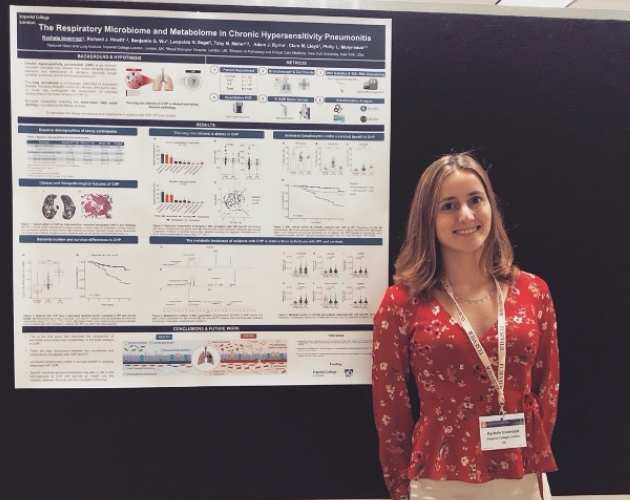 The NHLI award enabled me to showcase my research during the poster session. My PhD research focuses on investigating the role of the microbiome and metabolome in the development of idiopathic pulmonary fibrosis (IPF), a fatal respiratory condition, with a very poor prognosis. I have characterised the airway microbiome in patients with IPF and chronic hypersensitivity pneumonitis (CHP) and, for the first time, we have described the composition of the lung microbiome in CHP. The work undertaken throughout this PhD will hopefully advance our mechanistic understanding of the involvement of the microbiome in both CHP and IPF and, in the long term, may potentially facilitate the development of novel metabolically targeted therapies. I was pleased to present some of my most recent findings and received invaluable feedback from leading experts in the field, particularly as I am in the final year of my studies.
The NHLI award enabled me to showcase my research during the poster session. My PhD research focuses on investigating the role of the microbiome and metabolome in the development of idiopathic pulmonary fibrosis (IPF), a fatal respiratory condition, with a very poor prognosis. I have characterised the airway microbiome in patients with IPF and chronic hypersensitivity pneumonitis (CHP) and, for the first time, we have described the composition of the lung microbiome in CHP. The work undertaken throughout this PhD will hopefully advance our mechanistic understanding of the involvement of the microbiome in both CHP and IPF and, in the long term, may potentially facilitate the development of novel metabolically targeted therapies. I was pleased to present some of my most recent findings and received invaluable feedback from leading experts in the field, particularly as I am in the final year of my studies.
The list of invited speakers featured an extensive selection of renowned speakers and early career researchers in the microbiome/metabolism field, some of whom I have met at previous conferences, and others responsible for highly relevant research in my specific subject area. The meeting offered daily workshops also comprising networking sessions between students and experienced academics. The breadth of research spanned a vast array of topics including the biochemical and genetic characterisation of the microbiome, the ecology of the human microbiome, dysbiosis and human diseases and the impact of the environment on the microbiome. The conference provided a great opportunity not only to discuss my findings with international researchers in the field but also to connect with other research groups and enquire regarding future postdoctoral positions.
Overall, this conference was extremely beneficial for my research, both in terms of current projects as well as future avenues for my work. The meeting was well organised and an unrivalled opportunity to be immersed in the field of the microbiome. It was also a great experience to visit Miami. I would like to express my sincere thanks to the NHLI Foundation for supporting my attendance and dissemination of my research findings at the Miami Winter Symposium 2020. I really do look forward to what future research will bring.
Find out more about Rachele on the Lloyd Lab webpage
Oisín King
Biophysical Society Annual Meeting
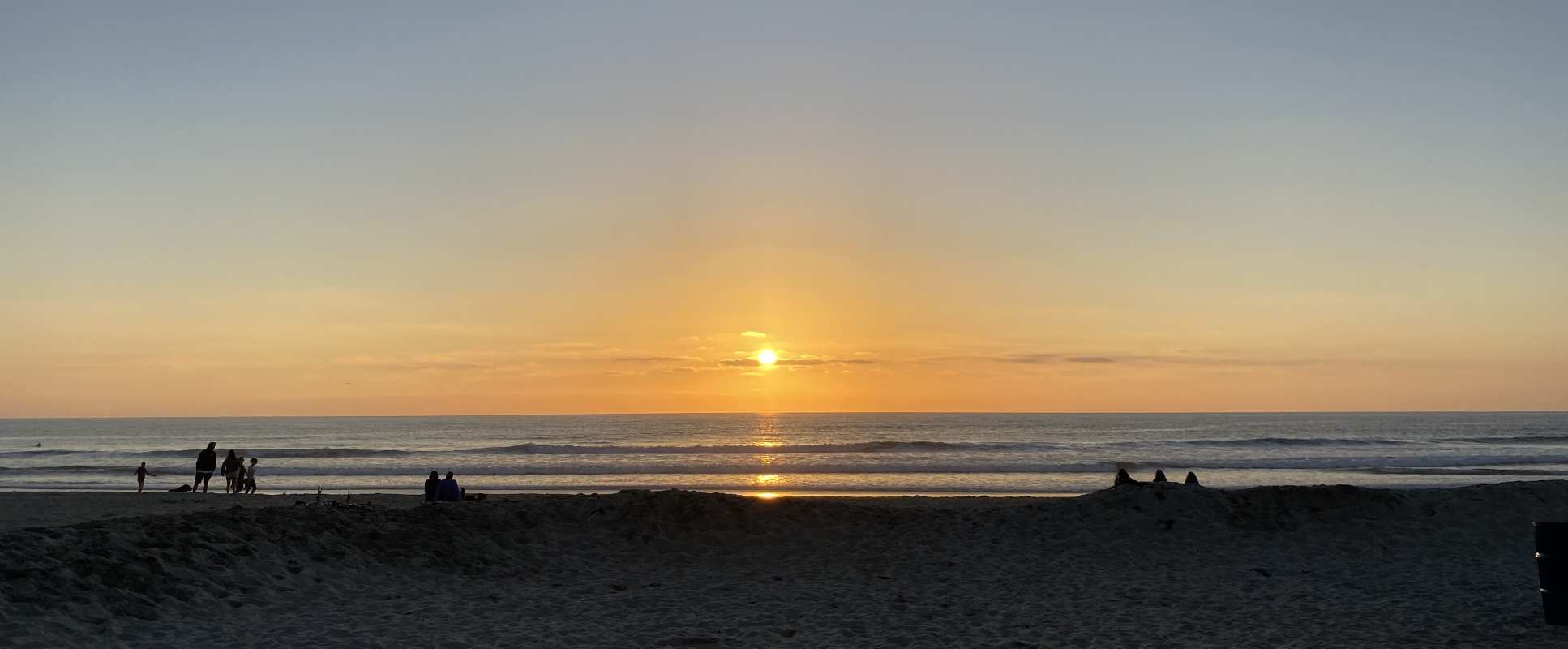
I would like to thank the NHLI for giving me the opportunity to attend the 64th Biophysical Society Annual Meeting in sunny San Diego. This five day meeting of 6,500 scientists represents a highly interdisciplinary congregation of researchers from the life, physical, and computational sciences.
With session topics ranging from 'Biophysical Underpinnings of the Origin of Life', 'Single-Molecule Visualization of Transcription, Translation and Splicing' to 'Engineering Next-Generation T Cells for Cancer Immunotherapy', this meeting was an exciting opportunity to see the whole spectrum of biological research; from novel theoretical concepts and molecular mechanisms, to clinical translation. An example of a particularly interesting talk was Professor Ken Dill’s (Stony Brook University) impassioned defence of proteins and peptides as initiators of complex life, as opposed to RNA. His controversial claim that “the RNA hypothesis cannot account for self replication”, while his “peptide foldamer” theory can, triggered lively criticism from RNA champions in the audience. Another talk of note came from Vanderbilt’s Professor of Bioengineering, John P. Wikswo (Vanderbilt University), in which he described his groups “microclinical analyser”, a chaotic looking collection of pumps, valves and sensors. This high throughput, automated cell culture device aims to provide next generation drug testing capacity with integrated metabolomic, proteomic and transcriptomic detection, allowing fully automated analysis of multi-scale biochemistry in physiologically relevant cellular environments.
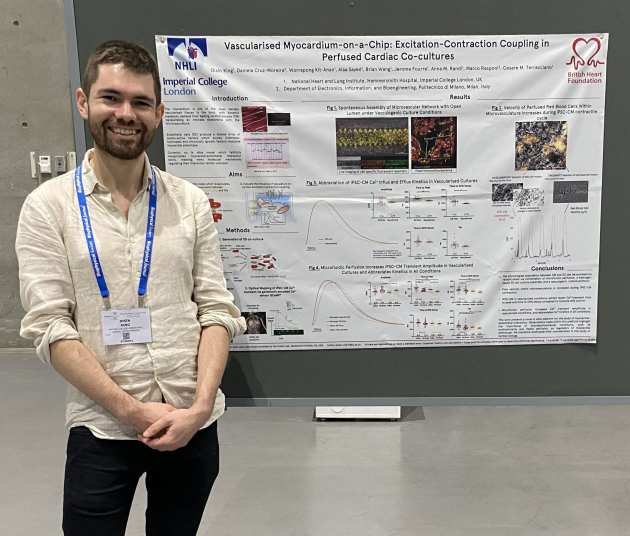 However, long-time attendees of the Biophysical Society Annual meeting will tell you that at it’s core, Biophysics is a poster conference. Many people attend primarily for the valuable discussion and networking opportunities that occur in its 900 daily poster presentations. In this meeting it is not uncommon to see senior PI’s presenting posters, and scientific debate occurs indiscriminately and casually between researchers of all levels. I attended this conference to present my work in cardiac electrophysiology in the 'Excitation-Contraction Coupling' session. I presented a poster titled 'Vascularised Myocardium-on-a-Chip: Excitation-Contraction Coupling in Perfused Cardiac Co-cultures'. During my PhD I have been investigating the role of non-muscle cells in the human heart, and how they can influence cardiac function. In order to investigate this, we used microfluidics, 3D biomaterials, stem cell biology and genetically encoded biosensors to develop a multicellular model of the human myocardium. This novel model allows high resolution investigation of electrophysiology in beating cardiomyocytes in the presence of microvasculature, something that has been difficult to achieve in the past. I received much valuable feedback, interest and ideas from many researchers, including Professor Donald Bers (University of California, Davis), one of the fathers of the field of Excitation-Contraction Coupling. Presenting in this environment was very useful for putting my work into context within the wider cardiac community, giving valuable perspective which will help guide the remainder of this project.
However, long-time attendees of the Biophysical Society Annual meeting will tell you that at it’s core, Biophysics is a poster conference. Many people attend primarily for the valuable discussion and networking opportunities that occur in its 900 daily poster presentations. In this meeting it is not uncommon to see senior PI’s presenting posters, and scientific debate occurs indiscriminately and casually between researchers of all levels. I attended this conference to present my work in cardiac electrophysiology in the 'Excitation-Contraction Coupling' session. I presented a poster titled 'Vascularised Myocardium-on-a-Chip: Excitation-Contraction Coupling in Perfused Cardiac Co-cultures'. During my PhD I have been investigating the role of non-muscle cells in the human heart, and how they can influence cardiac function. In order to investigate this, we used microfluidics, 3D biomaterials, stem cell biology and genetically encoded biosensors to develop a multicellular model of the human myocardium. This novel model allows high resolution investigation of electrophysiology in beating cardiomyocytes in the presence of microvasculature, something that has been difficult to achieve in the past. I received much valuable feedback, interest and ideas from many researchers, including Professor Donald Bers (University of California, Davis), one of the fathers of the field of Excitation-Contraction Coupling. Presenting in this environment was very useful for putting my work into context within the wider cardiac community, giving valuable perspective which will help guide the remainder of this project.
Ultimately, I found these five days to be an inspiring and valuable experience, for my PhD project and for me personally. It didn’t hurt spending some time in sunny California either! Having a beach nearby to decompress after a long conference was a great bonus. Many thanks to the NHLI for supporting this opportunity.
Dr Jonathan Baker
European Respiratory Society Conference

I would like to thank the NHLI foundation for supporting my attendance to the European Respiratory Society (ERS) Conference 2019 in Madrid. The ERS Congress is the largest annual meeting of respiratory physicians and academics in Europe, with over 20,000 delegates attending the congress over five days, with more than 420 different scientific session to choose from. Therefore, over the 5 days, there was great opportunity to hear talks from world leaders within the respiratory field, as well as network and meet with collaborators from Europe and the rest of the world.
I am extremely grateful to the NHLI for funding my attendance as this conference was slightly different for myself as I was away from Imperial at the time of the conference, working at Weill Cornell in New York on a ERS short term fellowship. The funding therefore allowed me to travel from New York to Madrid, something I would not have been able to do without this award. It was a strange feeling being jetlagged at a European meeting!
 During the conference there were many fantastic talks, posters and symposia. One such symposia was titled ‘Metabolic alterations as a driver of chronicity in lung disease’ with a particularly stimulating talk from Professor Silke Meiners (München, Germany) titled ‘Mitochondria in health, ageing and disease’. Also, of great interest was the symposia ‘The Human Lung Cell Atlas’, which proved great insight into single cell sequencing and how it is being used to map cells within the lung and their changes in chronic disease.
During the conference there were many fantastic talks, posters and symposia. One such symposia was titled ‘Metabolic alterations as a driver of chronicity in lung disease’ with a particularly stimulating talk from Professor Silke Meiners (München, Germany) titled ‘Mitochondria in health, ageing and disease’. Also, of great interest was the symposia ‘The Human Lung Cell Atlas’, which proved great insight into single cell sequencing and how it is being used to map cells within the lung and their changes in chronic disease.
Away from the main sessions, I also had the opportunity to catch up with colleagues from Imperial and collaborators. At the time of the conference I had been in New York for about one and half months and therefore the conference was the perfect opportunity to catch up with my colleagues at Imperial and update them on the research I had undertaken at Weill Cornell. As well as this we had a half day meeting with collaborators from Boehringer Ingelheim in relation to our current work we are undertaking together; with new exciting in vivo data being discussed and the finalisation of experiments to complete a manuscript.
This year I was more involved in the ERS conference than when I previously attended. I presented my own poster titled ‘Diesel particle induces an ageing phenotype of bronchial epithelial cells via disruption of anti-ageing molecules’. This work is a side project of mine, examining the effect of pollution on the induction of cellular senescence in airway epithelial cells, which is quite topical in our current climate. As well as presenting within this session I also chaired the session, enabling me to interact with all the poster presenters and learn more about their research. I also chaired a poster discussion session on the final day of the conference titled ‘Crosstalk in chronic pulmonary disease’. Again, this was a great opportunity to chair a session at an international conference and my first time chairing a poster discussion. I am also an early career member of Assembly 3, one of the assemblies which make up the ERS, and was therefore invited to help in the writing of a review article about the sessions which were put forward by the assembly; this was recently accepted in ERJ Open Research.
I had a fantastic time in Madrid, enjoying being back on European soil, and exploring the wonderful and vibrant city of Madrid. Again, I would like to thank the NHLI Foundation for giving me the opportunity to attend the ERS conference.
(Banner photo by Jorge Fernández Salas on Unsplash)
Read more about Jonathan and his research
Ashley Hoffland
European Academy of Allergy and Clinical Immunology Winter School

The 18th European Academy of Allergy and Clinical Immunology (EAACI) Winter School 'Basic Immunology Research in Allergy and Clinical Immunology' was held in January 2020 in the picturesque Chamonix, France. Famous for Mount Blanc and the surrounding mountains for winter sports enthusiasts.
The location provided the perfect winter backdrop for the conference, as during breaks we were able to go exploring in Chamonix, eat a lot of cheese and fit in a little skiing too! I was honoured to attend this conference with the full support of an NHLI Foundation Travel Award which helped support my registration fees, flights and food, so thank you!
I was invited to attend this close-knit conference of 70 early career PhD students and post-docs after submitting an abstract based off data generated in the first year of my PhD. This was an excellent opportunity for me as it was the first conference I have been invited to, and gave me an excellent platform to showcase the work I have been doing here at the NHLI. This meeting gave me much needed exposure to the wider scientific community to expand my network in the field and also gain some useful feedback on my work from the attendees. I was honoured to be one of 20 early career researchers invited to present their research in an oral presentation alongside keynote speakers in the field of allergy and clinical immunology.
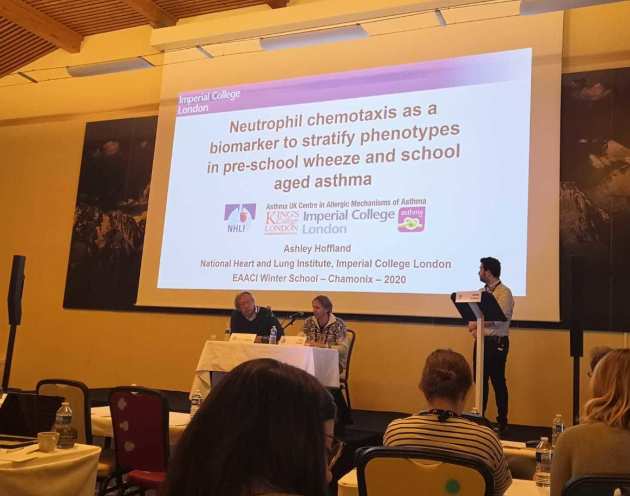 My research looks at how innate immune cells such as neutrophils function in respiratory diseases in young children such as pre-school wheeze and school aged asthma. During my PhD I have found that peripheral blood neutrophil function is compromised in these patients and could potentially relate to their clinical phenotype. The work I presented at conference illustrated that peripheral blood neutrophil chemotaxis, a key function of neutrophils, was impaired in some pre-school wheezers and school aged asthmatics. This could potentially be used as a biomarker to relate to objective clinical characteristics such as whether they have a lower airway infection or track their response to steroid treatment whist patients are clinically well. This is an important finding as currently there are no non-invasive biomarkers which can be used to relate to clinical features in the airways of these children.
My research looks at how innate immune cells such as neutrophils function in respiratory diseases in young children such as pre-school wheeze and school aged asthma. During my PhD I have found that peripheral blood neutrophil function is compromised in these patients and could potentially relate to their clinical phenotype. The work I presented at conference illustrated that peripheral blood neutrophil chemotaxis, a key function of neutrophils, was impaired in some pre-school wheezers and school aged asthmatics. This could potentially be used as a biomarker to relate to objective clinical characteristics such as whether they have a lower airway infection or track their response to steroid treatment whist patients are clinically well. This is an important finding as currently there are no non-invasive biomarkers which can be used to relate to clinical features in the airways of these children.
The conference itself had a diverse range of talks, with researchers presenting oral abstracts and posters of novel and cutting-edge science across basic science and clinical research projects. Whilst my interests lie firmly in respiratory research within the asthma and allergy field, all participants and invited keynote speakers covered a vast array of topics spanning from food allergy, allergic sensitization, and asthma and injury induced lung inflammation - all highly relevant to the work I am doing now.
My favourite keynote speaker at the conference was Adrian Hayday from the Francis Crick Institute who introduced his fascinating work on gamma-delta T-cells, his concept of ‘adaptate’ immunity and his views on these cells within an asthma and allergy setting. In addition to the talks, EAACI also organised useful workshops for the analysis of ‘Big Data’ focusing on key techniques relevant in the field such as transcriptomics, proteomics and CyTOF and multi-colour flow cytometry. This was extremely useful as I hope to use some transcriptomic techniques both later in my PhD and in my future career.
Overall, this conference provided a unique opportunity to learn some fantastic science in the field of allergy and clinical immunology, present my work for the first time to an international audience and network with brilliant researchers within the respiratory field. I thoroughly enjoyed my time at this meeting both on and off the slopes!
Read more about Ashley and his research
Dr Brian Halliday
The American Heart Association Annual Scientific Sessions
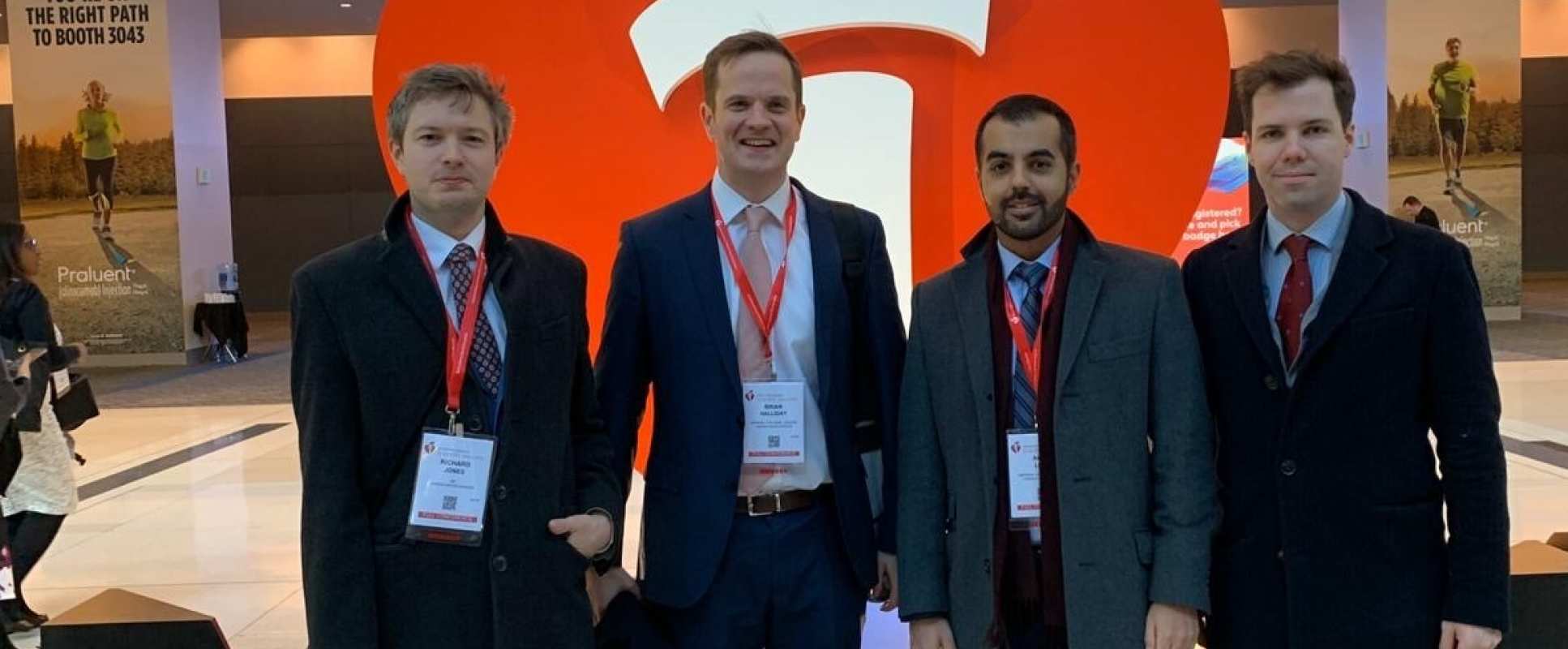
The American Heart Association Annual Scientific Sessions were held in Philadelphia between the 16 - 18 November 2019. I was able to attend the meeting with support from an NHLI Foundation Travel Grant. This is one of the three largest cardiovascular meetings worldwide, attracting a huge attendance from around the globe, including basic and clinical scientists.
This meeting gave me the opportunity to keep up to date with cutting-edge developments in the field, gain feedback on current research and form and maintain collaborations"
I travelled with three other members of Professor Prasad’s group; each of us presenting recent work from the group. This gave us the opportunity to get feedback on our work from experts around the world, allowing us to build towards publication of the data. I presented cardiovascular magnetic resonance (CMR) data from the TRED-HF trial in a rapid-fire format. We presented the top-line results of the trial at the Late-Breaking Clinical Trial Sessions of the same meeting in 2018. The TRED-HF trial investigated the safety and feasibility of gradually stopping medications for heart failure in patients with a previous diagnosis of dilated cardiomyopathy who had ‘recovered’. The results showed that many patients had a relapse of their dilated cardiomyopathy after stopping medications and that we should therefore not routinely recommend this in clinical practice. I also presented some work from a collaboration with Bioengineers at King’s College London, investigating novel features from CMR which may be used to predict the risk of major arrhythmic events. This provided the perfect platform to network with other investigators with similar interests, gain feedback on the work and form potential collaborations for future work.
My colleagues presented some excellent work in other sessions; Amrit Lota talked about his exciting work on the epidemiology of myocarditis in the UK, Daniel Hammersley presented interesting data on the association between impaired myocardial perfusion reserve and adverse outcomes in dilated cardiomyopathy and Richard Jones spoke about his work on myocardial perfusion imaging in ischaemic heart disease. Other highlights included a plenary lecture by Dr Eric Olson (UT Southwestern in Dallas) on his ground-breaking work investigating gene-editing in cardiomyopathies associated with muscular dystrophy, presentation of late-breaking clinical trials investigating the benefit of ischaemia-guided revascularisation, the use of SGLT inhibitors in heart failure and colchicine following myocardial infarction.
I also got a chance to meet with collaborators from the US to talk about current and future studies and attend an early-career researcher reception. Along with all of the work, we also managed some time to explore the city and enjoy the local culture.
This meeting gave me the opportunity to keep up to date with cutting-edge developments in the field, gain feedback on current research and form and maintain collaborations. Overall, it provides a platform for future research and ensures the maintenance of a healthy degree of motivation and enthusiasm.
Read more about Brian and his research.
Dr Aarash Saleh
North American Cystic Fibrosis Conference

I am hugely grateful for the NHLI travel grant which made it possible for me to travel to Nashville, Tennessee for the 2019 North American Cystic Fibrosis Conference. As the world’s largest Cystic Fibrosis (CF) conference, this is a highlight in the calendar of CF researchers and clinicians worldwide. I saw this as a fantastic opportunity to network with others, particularly in my own field of CF gene therapy, as well as to hear from and meet the groups behind huge recent successes in CF modulator therapies.
 After a difficult start with our flight being delayed and the Airbnb booking falling through (fear not – my colleagues and I found a last minute hotel!) we were up bright and early for a session on innovative processes for clinical research. This featured exciting and relevant ideas on utilising new database technologies to maximise enrolment whilst minimising wasted time and repeated studies in this highly researched group of patients. A later session entitled ‘Fixing what modulators won’t’ focused on technologies like gene therapy and editing which are going to be vital in tackling disease caused by CF mutations which result in little or no functional protein. John Clancy from Cincinnati gave an excellent run down of changes in the field over the last 10 years including the need for new outcome measures like RNAscope which I later presented my work on.
After a difficult start with our flight being delayed and the Airbnb booking falling through (fear not – my colleagues and I found a last minute hotel!) we were up bright and early for a session on innovative processes for clinical research. This featured exciting and relevant ideas on utilising new database technologies to maximise enrolment whilst minimising wasted time and repeated studies in this highly researched group of patients. A later session entitled ‘Fixing what modulators won’t’ focused on technologies like gene therapy and editing which are going to be vital in tackling disease caused by CF mutations which result in little or no functional protein. John Clancy from Cincinnati gave an excellent run down of changes in the field over the last 10 years including the need for new outcome measures like RNAscope which I later presented my work on.
The 08:30 plenary session the following morning was extremely well-attended as Professor Jane Davies from the National Heart and Lung Institute (NHLI) gave a keynote speech outlining the breakthroughs in the field of CFTR modulators over the last seven years since the approval of Ivacaftor for gating mutations. This gave a proof of principle that the basic defect in CF – a faulty epithelial ion channel – could be targeted resulting in improvements in lung function, sweat chloride and weight. The culmination of this work has been the recent success of the triple modulator combinations which have seen much larger lung function improvements and a treatment for most patients with CF.
I presented a poster outlining part of my PhD work analysing a new technology, RNAscope, to detect successful targeting of diseased epithelial cells using our gene therapy vector. This overcomes a barrier to early trials – the fact that small trials often struggle to detect efficacy of new therapeutics because the numbers of participants is necessarily small. In our case, the protein of interest, CFTR, is expressed at low levels and changes have been hard to quantify even following clinically successful treatment. By detecting the delivered mRNA using in situ hybridisation we can determine the fate and duration of our treatment with high sensitivity. I was encouraged by the level of interest in the field of potentially curative therapies for CF and my poster received a lot of attention from clinicians and researchers from worldwide centres. This helped me to target future work and think through how I will present this work for publication and in my thesis.
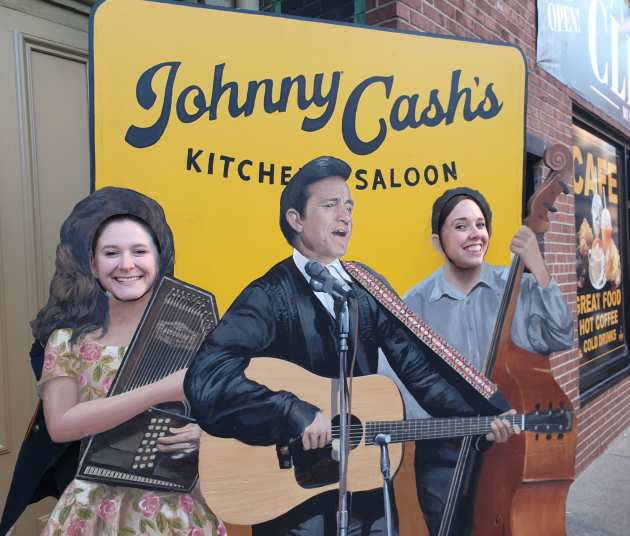 As always, discussion of interesting clinical cases were a favourite of many attendees and we enjoyed discussing the cases of the novel technique, navigation bronchoscopy being used to target an endobronchial lesions; a discussion of cannabinoids as possible therapeutics for CF lung disease and a successful use of ECMO (Extra Corporeal Membrane Oxygenation) in a life-threatening exacerbation of CF.
As always, discussion of interesting clinical cases were a favourite of many attendees and we enjoyed discussing the cases of the novel technique, navigation bronchoscopy being used to target an endobronchial lesions; a discussion of cannabinoids as possible therapeutics for CF lung disease and a successful use of ECMO (Extra Corporeal Membrane Oxygenation) in a life-threatening exacerbation of CF.
Nashville is an incredible venue with an unparalleled cultural heritage. Nashville is the home of country music but the live music blaring out from every honky tonk bar is much more eclectic than just Johnny Cash, Willie Nelson and Patsy Cline. We had a great time connecting with this cultural heritage at the Grand Ole Opry – a country music show with a history streaching back nearly a century. Sadly my vegetarianism had to take a temporary hiatus during this trip to avoid starvation and spice chicken tenders were the order of the day!
All in all it was an unforgettable trip in terms of experiences both inside and outside the conference and I have gained a huge amount in terms of my work and a greater understanding of the field.
Chrystalla Constantinou
American Heart Association Scientific Sessions
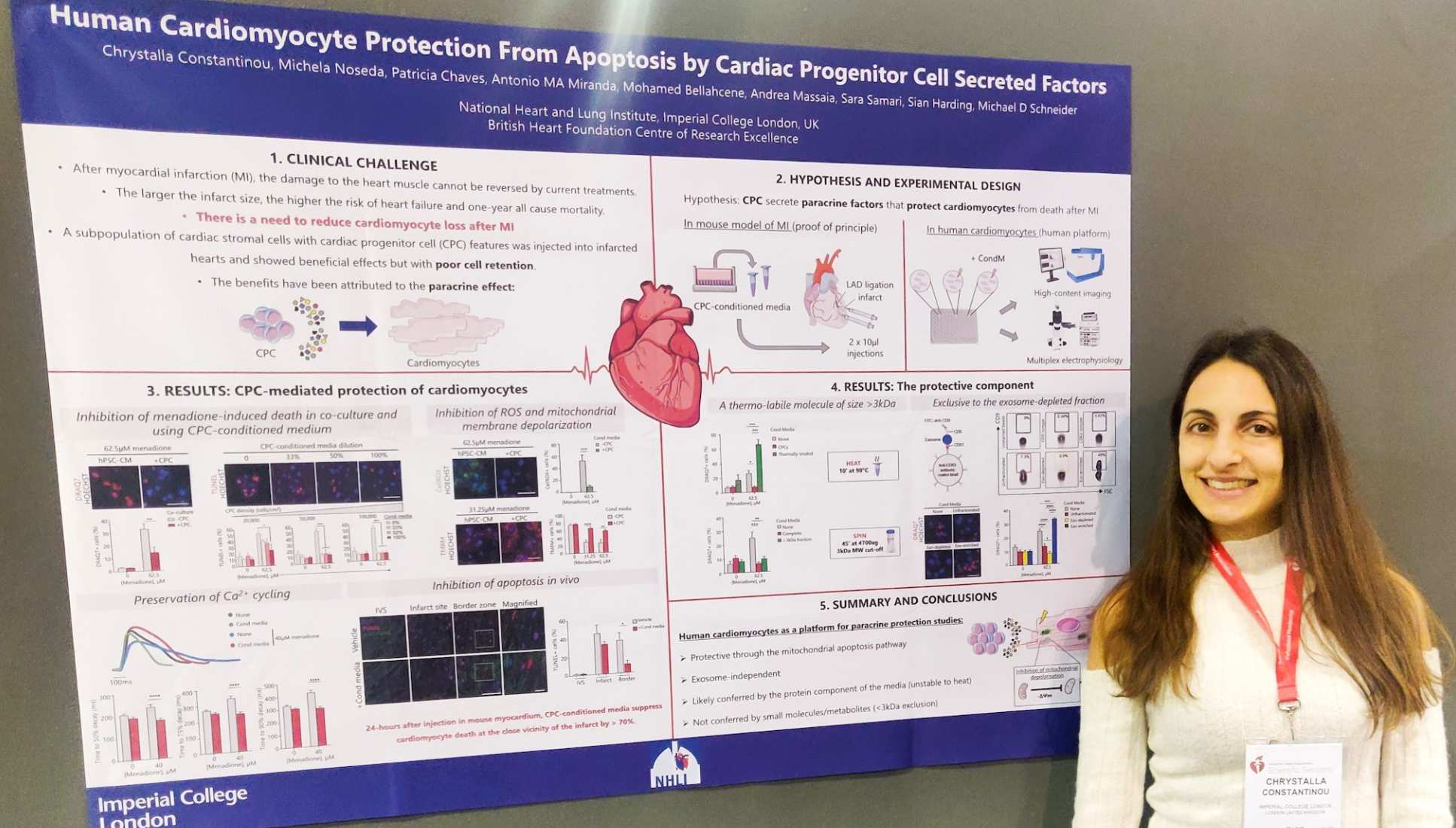
The American Heart Association (AHA) Scientific Sessions 2019 conference was held this November at the Pennsylvania Convention Centre in Philadelphia, home to the world-famous ‘cheesesteak sandwich’ and of course the ‘Rocky Steps’. I was honoured to attend after being granted an NHLI Foundation Travel Award.
It was an incredible experience to directly witness how ideas that might affect our future come to life"
Chrystalla Constantinou
The AHA is a great cardiovascular association and funds a vast array of research into understanding and treating cardiovascular disease. Their annual scientific sessions conference is a hotspot that gathers together clinical and basic scientists from around the world. The available exhibits cover global cutting-edge research in the broader field of heart science, including more specialised sessions such as cardiac regeneration and cell-therapy, which are of direct relevance to my work.
The conference consisted of three full days which encompassed everything from stimulating scientific presentations and career-progression panel discussions to basics of CPR training, a live concert and even a stress-relief puppy snuggle and adoption zone! Events spanned a range of hot topics, with one of the highlights being a session on the impact of climate change in the development of cardiovascular disease and how to address it, which raised ground-breaking points of discussion among the attending scientists, healthcare providers and regulatory body representatives. It was an incredible experience to directly witness how ideas that might affect our future come to life.
This was the first time I attended a conference of this amplitude and getting the opportunity to present my PhD work to such a large and diverse audience was a unique experience. My slot was on the first day of the conference which also happened to be the busiest. My poster on human cardiomyocyte protection from apoptotic death using cardiac progenitor-secreted factors received a lot of attention, both from researchers working on the same topic, interested in our methodologies, as well as from more senior scientists who were intrigued by our results.
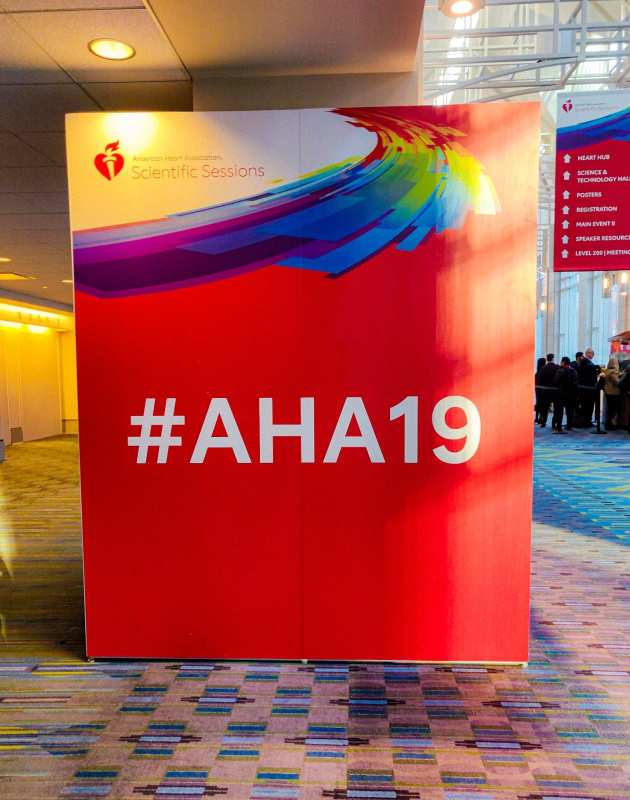 Due to space limitations it is impossible to report on every science talk I enjoyed. However one of my personal favourites was a presentation by the accomplished cardiovascular surgeon and researcher Professor Philippe Menasché (University of Paris Descartes) as part of the session on ‘The future of cell-based therapies’. Professor Menasché gave an update of his latest work; the use of pluripotent stem cells in cardiac therapies. The advantage of these cells is simply that investigators can have full control over their development/maturation pathway and collect them at any point during their differentiation process for use in transplantation procedures. This feature overcomes some of the limitations associated with more mature cardiomyocytes used in previous transplantations. Professor Menasché has used human embryonic stem cell-derived cardiac progenitor cells, in combination with a fibrin scaffold to treat six patients, obtaining an encouraging trend toward improvement of systolic function. Despite admitting that this sample size was small, and more work is required to demonstrate effective use of his approach, I believe that this is a huge step towards overcoming logistical, regulatory and ethical barriers associated with human embryonic stem cell-based therapies.
Due to space limitations it is impossible to report on every science talk I enjoyed. However one of my personal favourites was a presentation by the accomplished cardiovascular surgeon and researcher Professor Philippe Menasché (University of Paris Descartes) as part of the session on ‘The future of cell-based therapies’. Professor Menasché gave an update of his latest work; the use of pluripotent stem cells in cardiac therapies. The advantage of these cells is simply that investigators can have full control over their development/maturation pathway and collect them at any point during their differentiation process for use in transplantation procedures. This feature overcomes some of the limitations associated with more mature cardiomyocytes used in previous transplantations. Professor Menasché has used human embryonic stem cell-derived cardiac progenitor cells, in combination with a fibrin scaffold to treat six patients, obtaining an encouraging trend toward improvement of systolic function. Despite admitting that this sample size was small, and more work is required to demonstrate effective use of his approach, I believe that this is a huge step towards overcoming logistical, regulatory and ethical barriers associated with human embryonic stem cell-based therapies.
As a final year PhD student I was pleased to find out that the Scientific Sessions were rich in early-career development courses, panel-discussions and support talks. One of the most informative sessions I attended was ‘Publish or Perish? Tips for early-career people to live by’. The truth is, nobody teaches young students or researchers about the process of publication and paper reviewal and it is in fact a world that we have to discover on our own, usually the hard way (after numerous rejections and frustration). This session explained the importance of publishing your research, gave tips on how to choose the right journal, how to use impact factors, H-index and other publication metrics I hadn’t even heard of before, as well as tips on the review and re-submission process for a smoother publication experience. Attendants were equipped with key tips and the motivation to persist, even if at first success seems hard to achieve.
In between exciting scientific talks and other educational activities, I attended a two hour boot-camp on single cell RNASeq analysis, a state-of-the-art approach to compare whole transcriptional profiles and separate thousands of single cells into distinct populations. The workshop started with an introduction to single cell RNA sequencing, covering the main sequencing options and their applications (SmartSeq, SplitSeq or Microfluidic-based). The trainers then went on to outline the considerations when designing an experiment followed by a hands-on session, where we practiced analysing a data-set from mouse heart, to understand the different types of data-outputs that can be obtained using this versatile tool. Although short, the session was very useful in enhancing my awareness of available tools, especially because I will soon have to analyse my own RNASeq data, as part of my PhD.
Attending this meeting has been one of the best experiences of my PhD life and not only an opportunity to present my work to a wider audience, but also to expose myself to cutting-edge research happening world-wide, both in the field of cardiac regeneration and in the broader field of cardiovascular medicine. I definitely recommend AHA Scientific Sessions to any final-year PhD student or post-doc that would benefit from communicating their research and forming a global network of contacts. Finally, I am truly grateful to NHLI for covering the expenses of this trip through the NHLI Foundation Travel Award.
Dr Claire Peghaire
European Congress of Thrombosis and Haemostasis
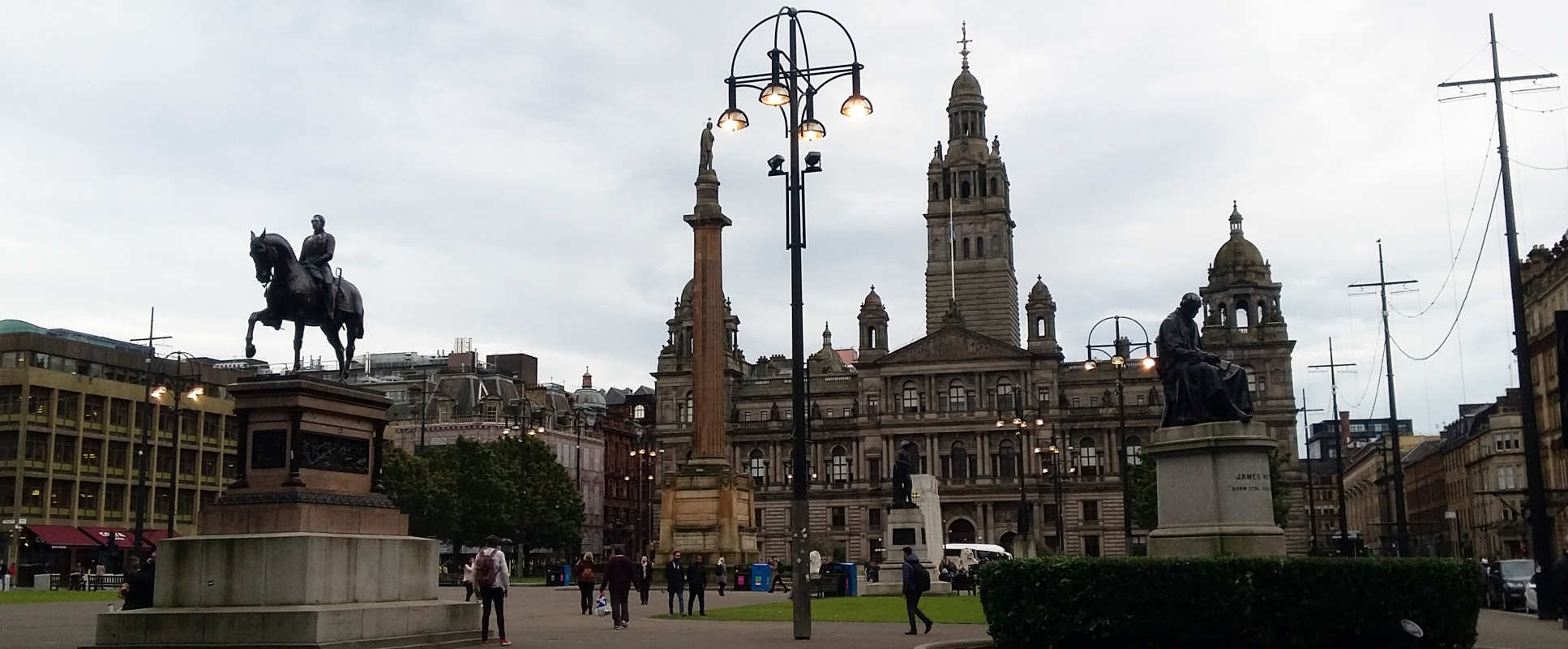
The third European Congress of Thrombosis and Haemostasis (ECTH) 2019 was held in vibrant Glasgow in the Scottish Event Campus. It was the perfect location to bring together researchers and clinicians from across Europe in the spirit of discussion and the translation of science in the haematology research field. This meeting was an important event for the advancement of Thrombosis and Haemostasis in Europe and the conference had some great speakers presenting cutting-edge science. In addition to state-of-the-art lectures, plenaries and poster sessions, it also had ‘TEDx-style’ science showcases during the “Science, Fast and Furious” sessions.
The NHLI Foundation Travel Award enabled me to attend and present my latest research in Glasgow which I am very grateful for. My abstract was selected for an oral presentation in this exciting and pioneer “Science, Fast and Furious” session on the first day of the conference, just before the opening ceremony and in front of a large audience. It was the first time for me using this type of special presentation technique. In order to prepare this talk, I received a useful personal training from a coach, which was an interesting experience. It was also my pleasure to receive a Prix D’honneur De La Jeunesse/ Young Investigators Award from the ECTH board for this talk.
Overall, it gave me a wonderful opportunity to share in a very unique format our story which will be published very soon (Peghaire et al, Nature Communications, 2019, in press). In this paper, we identified a new low shear stress-specific anti-thrombotic pathway in the endothelial regulated by the transcription factor ERG and introducing the concept that endothelial cells are able to use distinct transcriptional pathways in different vascular beds to prevent thrombus formation and the development of thrombotic diseases.
This congress was a fantastic opportunity to be immersed in the field of haematology and thrombosis research and gave me a lot of inspiration for the direction of my future work and potential collaborations.
Read more about Claire and her research.
Pauline Flajolet
ERS International Congress
 I am extremely grateful to the NHLI Foundation for their award of a travel grant, which enabled me to attend the European Respiratory Society (ERS) International Congress 2019 held in Madrid. The ERS Congress is the largest annual meeting of respiratory experts in Europe. It is a very informative meeting as it gathers a diverse range of presentations where key experts share their views on the latest respiratory insights.
I am extremely grateful to the NHLI Foundation for their award of a travel grant, which enabled me to attend the European Respiratory Society (ERS) International Congress 2019 held in Madrid. The ERS Congress is the largest annual meeting of respiratory experts in Europe. It is a very informative meeting as it gathers a diverse range of presentations where key experts share their views on the latest respiratory insights.
I attended the ERS as part of my PhD based on basic asthma research. This congress was exactly what I needed to acquire a global view of how asthma is encountered by clinicians, thus better understanding the implications of my preclinical work. Numerous clinical presentations highlighted the challenges of evaluating and targeting small airway disease in asthma, with Professor Salman Siddiqui (University of Leicester) showcasing the results of the first large-scale multinational study ATLANTIS investigating how physiological parameters capture small airway disease. The ERS congress was also the ideal place to understand how biologics fit into the clinic, with a state of the art session where Professor Ian Pavord (University of Oxford) presented a clear review of the role of oral corticosteroids in the era of biologics in asthma. With a well-suited title for Madrid - “It takes two to tango” - another original session combined the opinion of one scientist and one clinician, in a clever way, on translating scientific findings on mast cells, eosinophils and T cells into clinical applications. During which Professor Peter Bradding (University of Leicester) shared insights on why mast cell targeted therapies have been disappointing so far.
Not only was this ERS congress beneficial because of its clinical insights, but also for its presentation of the latest cutting-edge basic respiratory research. To name one, a whole session was dedicated to the Human Lung Cell Atlas, a unique international initiative that is using single-cell technologies to characterise all cell types and their dynamics in healthy and disease lungs.
 As a third-year PhD student, I presented my work “Investigating Transient Receptor Potential V4 channel induced bronchospasm” as part of a poster discussion session entitled “Advances in asthma pharmacology”. I was lucky to take part in this excellent session, with peers presenting high quality pharmacology research on new targets in bronchospasm, notably Dr Jane Bourke (Monash University) explaining the role of relaxin in potentiating β2 receptor-mediated relaxation. This session was a fantastic opportunity to receive feedback from leading experts in the field and spark potential collaborations. Furthermore, as my PhD focuses on how TRPV4 activates airway nerves via P2X receptors, the ERS was perfectly suited to my scientific interests. This congress shined a light on the role of nerves in airway disease, with a cough-focused symposium and numerous presentations on cough and P2X3 antagonist clinical trials by Professor Lorcan McGarvey (Queen’s University Belfast) and Professor Surinder Birring (King’s College London).
As a third-year PhD student, I presented my work “Investigating Transient Receptor Potential V4 channel induced bronchospasm” as part of a poster discussion session entitled “Advances in asthma pharmacology”. I was lucky to take part in this excellent session, with peers presenting high quality pharmacology research on new targets in bronchospasm, notably Dr Jane Bourke (Monash University) explaining the role of relaxin in potentiating β2 receptor-mediated relaxation. This session was a fantastic opportunity to receive feedback from leading experts in the field and spark potential collaborations. Furthermore, as my PhD focuses on how TRPV4 activates airway nerves via P2X receptors, the ERS was perfectly suited to my scientific interests. This congress shined a light on the role of nerves in airway disease, with a cough-focused symposium and numerous presentations on cough and P2X3 antagonist clinical trials by Professor Lorcan McGarvey (Queen’s University Belfast) and Professor Surinder Birring (King’s College London).
Most importantly, this conference was an incredible opportunity to network with peers and seek out career advice. As I am now coming to the end of my PhD, this was important to me in order to prepare my next career steps. This congress has a great format encouraging networking, especially for early career members with an Early Career Members Committee and a dedicated networking event.
In a nutshell, I would highly recommend anyone involved in airway disease research to attend the ERS congress. I would like to thank again the NHLI Foundation for giving me the chance to attend this meeting. ¡Muchas gracias!
Hannah Whittaker
ERS International Congress
I am extremely grateful to the NHLI foundation for the opportunity to attend and present at the European Respiratory Society (ERS) International annual congress held in Madrid, Spain. The ERS congress is the largest respiratory conference in the world and welcomes over 22,000 attendees each year providing over 500 exciting sessions. The sessions cater to a variety of disciplines within the respiratory field including clinical sessions and case reports, sessions on respiratory pathophysiology, and epidemiological sessions.
I had the opportunity to present work on my PhD in a session on “Powerful Cohort Studies With/Without Lung function”. This session was chaired by some of the top respiratory researchers in the field, Professor Joan Soriano (Autonomous University of Madrid) and Professor Frank Van Leth (University of Amsterdam). The discussions and feedback around my work were extremely valuable for my PhD and I returned with beneficial additions to add strength to my work.
During my time at the ERS I was able to attend other sessions and wander around the thematic posters. There were a number of interesting research topics including lung function, eosinophils, and inhaled corticosteroids which directly relate to my PhD. Attending these sessions help to keep my knowledge on the different aspects of my work up to date with the current research and gave me the opportunity to talk to other researchers about these topics. There were several additional interesting sessions beyond those relating to my research including a “Hot Topic” session on the public health epidemic of e-cigarettes and their negative impact on respiratory health by one of the leading respiratory epidemiologists Professor Jorgen Vestbo (University of Manchester). Another “Hot Topic” session was on air pollution and its impact on the health and possible death of patients was intriguing and a clear issue to all those who live and work in cities, like London. It is inspiring to see that the current situation with climate change and pollution has made its way into the forefront of respiratory science and had a prominent spot at ERS. One of the final large symposia that I attended was on the importance of classical epidemiology and big data for research. This session was directly related to my project, as I use a large primary care UK database to perform epidemiological research for my PhD, and is important to broader medicine as the collection of healthcare data increases rapidly in both quantity and quality.
I thoroughly enjoyed attending the ERS in Madrid. The conference provided an opportunity for me to explore and better understand my work through discussions and sessions with leaders in the field. The opportunity to meet and talk to these leaders and other members of the field is integral to developing a strong network of clinical epidemiologists that are dedicated to studying the most important respiratory issues. I have come back feeling more inspired and determined to complete my PhD. I am thankful to NHLI for awarding me this travel grant and getting the opportunity to attend ERS and see the beautiful city of Madrid.
Read more about Hannah and her research.
Fotios Pitoulis
European Society of Cardiology

The ESC congress is a conference held each year in a European country (until now, UK included). This year, the ESC took place in Paris, France. I was given the opportunity to present a poster and was in the privileged position to receive an NHLI Travel Grant to support my expenses.
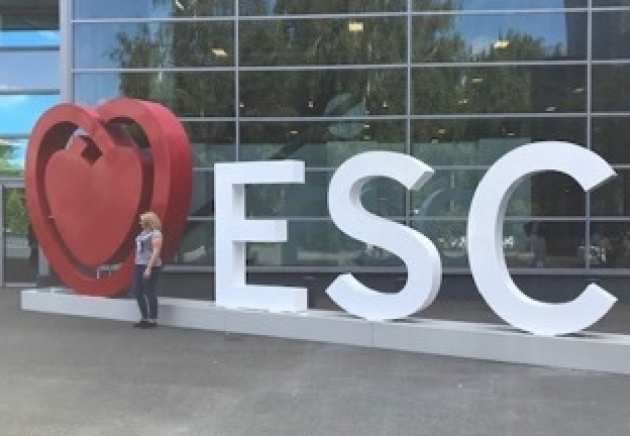 Upon arriving at the exhibition centre, I was struck by the mere colossal size of the conference. I had attended annual conferences in the past, but this surpassed my imagination. This year the conference attracted more than 30,000 delegates including MDs, MD-PhDs, and PhDs from industry and academia alike. The scientific programme spanned an enormous array from basic science, to translational and clinical research, as well as clinical case scenarios tailored for cardiologists. The latest on cardiovascular research was showcased by pioneering investigators.
Upon arriving at the exhibition centre, I was struck by the mere colossal size of the conference. I had attended annual conferences in the past, but this surpassed my imagination. This year the conference attracted more than 30,000 delegates including MDs, MD-PhDs, and PhDs from industry and academia alike. The scientific programme spanned an enormous array from basic science, to translational and clinical research, as well as clinical case scenarios tailored for cardiologists. The latest on cardiovascular research was showcased by pioneering investigators.
I attended multiple talks on the burden of cardiovascular disease at population level, and interventions that prove beneficial. The discussion revolved around the four main pillars of cardiovascular health and disease; obesity and physical activity, blood pressure, cholesterol, glucose control.
Carl Lavie (from the John Ochsner Heart and Vascular Institute, New Orleans) discussed the latest discoveries on physical activity and obesity including the dose-dependent effects of exercise on cardiovascular morbidity (i.e. increasing intensity of exercise correlates with reduced morbidity), as well as the interesting finding that it is better to be overweight and exercise than the other way around! Borja Ibanez (from the National Cardiovascular Research Centre, Madrid) followed with talks on cholesterol and low-density lipoproteins (LDL), suggesting that current guidelines are probably overestimating the pathological thresholds for circulating LDL, which has costly and unhealthy implications for future health. These talks were of particular relevance to me as I am working towards the combined MD-PhD degree. They offered me the opportunity to connect with like-minded physician-scientists while exploring the possibility for collaborations.
Perhaps the highlight of the conference was the talk by Professor Eric Olson (from the University of Texas Southewestern Medical Center) on translational research. Eric is an internationally acclaimed basic scientist interested in muscle diseases. In his 50 minute talk he opened up on his career-wide research on Duchenne Muscular Dystrophy (DMD), an X-linked muscle disease currently lacking a cure, and affecting over 300,000 men worldwide. The Olson lab has managed to develop a genetic therapy for this devastating disease, with extraordinary early results on mice, and dogs. It was to my pleasant surprise when Olson mentioned he was collaborating with Professor Richard Piercy and showed us videos of before (struggling to walk) and after-genetic therapy (running like crazy) treated dogs. As part of my PhD, I have been extensively involved with Professor Piercy’s lab in characterising the heart phenotype of DMD-control and DMD-treated dogs. It was amazing to see how our research here at NHLI would play its part into this massive multidimensional puzzle in understanding and solving DMD.
The poster presentation allowed me to showcase my research on basic science. The poster was concerned with differences in the function and structure of different layers of the heart wall, explored using myocardial slices. I was approached by multiple researchers some of which offered valuable insight and suggested potential avenues of future research. Others were excited about the model we are using (myocardial slices) to study this heterogeneity in the properties of the different heart layers and were interested in collaborating with us. Previously, we have held seminars on the preparation and methodology of myocardial slices, and the conference facilitated direct exposure of interested individuals to this.
The ESC has been one of the best conferences I have attended. It was a truly unique experience merging basic, translational, and clinical research and the interaction of these. I am grateful to NHLI for funding me. Thank you!
Liliana Brito
Gordon Research Seminar and Conference in Biomaterials and Tissue Engineering
 As a second year PhD student, it was a pleasure to be awarded an NHLI Foundation Travel Award to attend the Gordon Research Seminar and Conference in Biomaterials and Tissue Engineering, held in Castelldefels, Spain. This conference is held every two years, therefore this was the only opportunity I will have to attend as a PhD student and I am glad that the NHLI Foundation made it possible.
As a second year PhD student, it was a pleasure to be awarded an NHLI Foundation Travel Award to attend the Gordon Research Seminar and Conference in Biomaterials and Tissue Engineering, held in Castelldefels, Spain. This conference is held every two years, therefore this was the only opportunity I will have to attend as a PhD student and I am glad that the NHLI Foundation made it possible.
The conference started with the GRC Seminar over the weekend, followed by the GRC Conference during the rest of the week. The seminar was particularly interesting because only graduate students and post-docs present their work. Therefore, trainee's participation during discussion sessions was highly encouraged and it was easier to network because we all had comparable levels of experience and education. The keynote session of the seminar was led by Dr Amar Sawhney (Ocular Theraupetix) about MedTech Entrepreneurship and how to direct our research to be translational. From his talk I gathered important pieces of advice that are applicable to all research fields; before starting a research project, the problem to solve must be well defined and the research must always be directed towards that target; data quality is more relevant than data quantity; it is important to be part of collaborative projects to learn how to work in a team; it is important to know the team members, who are the team experts for different subjects and who can we talk with if there is a challenge that needs to be surpassed; and every scientist should learn how to communicate their science effectively and to be able to sell it to non-scientists.
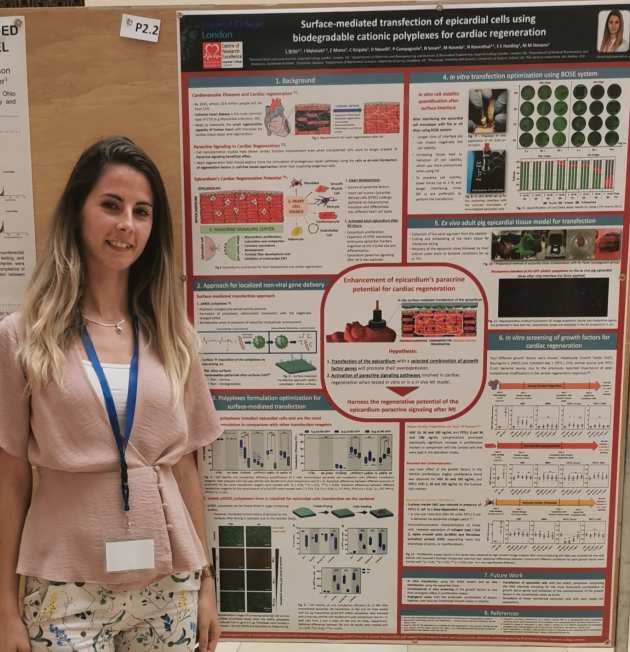 The GRC Conference had roughly 200 participants, including professionals in different levels of their careers (professors, lecturers, post-docs and PhD students). As in the GRC Seminar, this conference was multidisciplinary, highly focused on unpublished data and it covered topics such as disease modelling, implants for tissue regeneration and microenvironments for controlling cellular fate. My supervisor, Professor Molly Stevens, was one of the presenters and my research was mentioned during her presentation, giving more visibility to my poster presentation afterwards.
The GRC Conference had roughly 200 participants, including professionals in different levels of their careers (professors, lecturers, post-docs and PhD students). As in the GRC Seminar, this conference was multidisciplinary, highly focused on unpublished data and it covered topics such as disease modelling, implants for tissue regeneration and microenvironments for controlling cellular fate. My supervisor, Professor Molly Stevens, was one of the presenters and my research was mentioned during her presentation, giving more visibility to my poster presentation afterwards.
Directly related with my PhD project in cardiovascular research, Professor Beth Pruitt (University of California, Santa Barbara) presented the influence of mechanobiology in cardiomyocytes differentiation, maturity and functionality. Also, Professor Adam Feinberg (Carnegie Mellon University, Pittsburgh) presented his high-resolution 3D bioprinting method (freeform reversible embedding of suspended hydrogels - FRESH) that allows the formation of collagen scaffolds to create different heart structures including ventricle, tri-leaflet heart valve, vasculature and ultimately an organ-scale heart based on MRI scans from patients. Excitingly these results were just published in Science while we were at the conference.
Finally, during the poster sessions, I had the opportunity to share my PhD results about the enhancement of the epicardium paracrine potential for cardiac regeneration. People were excited by the novelty of my project and I could feel their support. Moreover, I also discussed with the other poster presenters important aspects of their own research that are related to my project or involve techniques that I will need to use in my PhD, e.g. optimization of non-viral transfection efficiency of primary cells by pre-incubation of cells with an anti-inflammatory drug, transwell assays conditions and optimization, differences in apical and basal expression in epithelial cells.
Overall, my involvement in this conference was very fruitful and motivational. Moreover, I would recommend PhD Students to participate in one of the several available Gordon Research Conferences. The cutting-edge science topics, together with adequate time to discuss and network, make these conferences highly appealing.
Dr Luke Allsopp
Congress of the Federation of European Microbiological Societies 2019
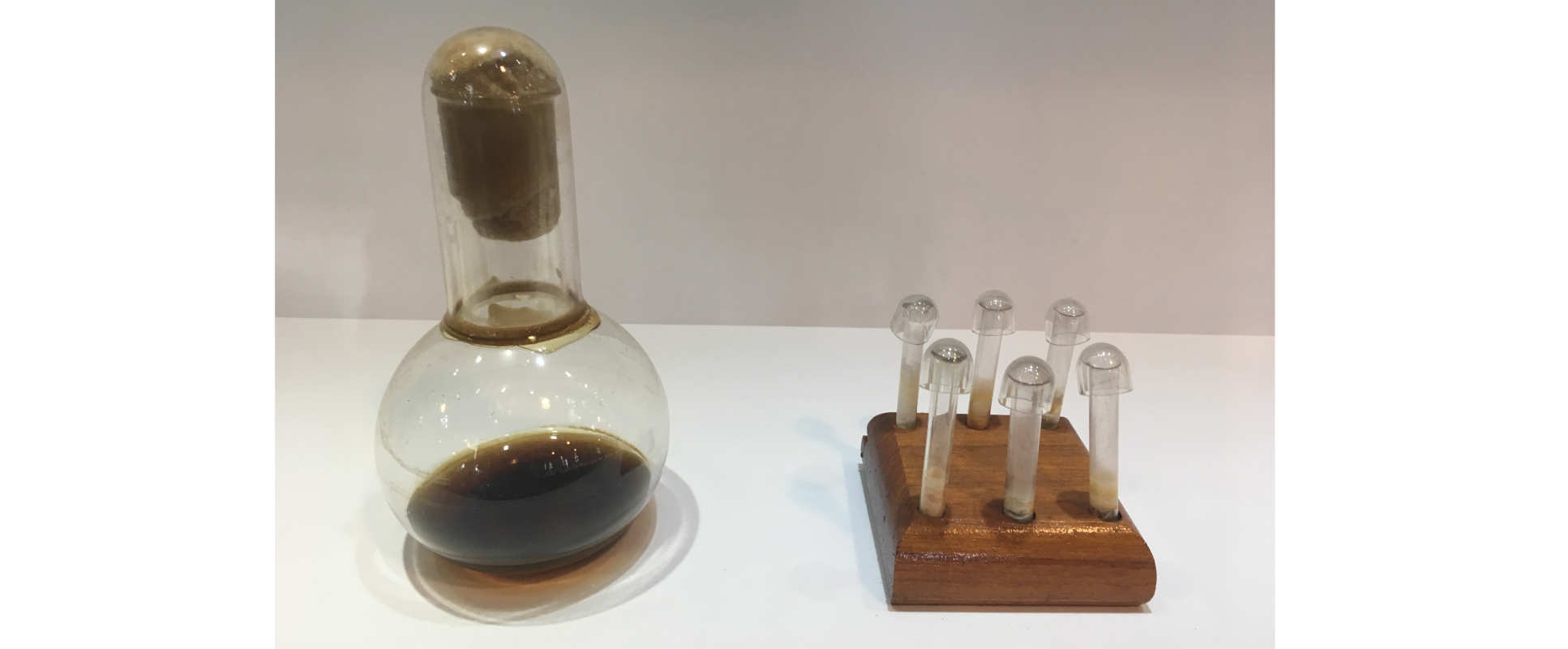
My trip to Glasgow was a great microbial experience. I was exposed to everything from early microbiology and aseptic technique by the godfather of sterile surgery, Joseph Lister, to unpublished cutting-edge science at the conference. I managed to visit the Hunterian Museum housed on the University of Glasgow campus on the morning prior to the start of the conference. This small museum has an amazing collection including tools and still sterile urine from Joseph Lister’s circa 1868 who was the Pioneer of antiseptic surgery.
The FEMS Congress is held every two years and covers the breadth of microbiological research. This is one of the largest microbiology meeting in the world and attracts many high-profile attendees. This year there was over 1900 delegates from 43 countries. The NHLI Foundation Travel Award enabled me to attend and present my latest research in Glasgow which I am very grateful for.

The conference was held in Glasgow in the Scottish Event Campus. The conference had some great speakers and some fantastic plenary seminars and prize lecturers on everything from cutting edge research into bacterial immune systems to developing beneficial microbiota inoculums for premature babies, to designer metabolic reprograming of bacteria. This five-day meeting was awesome and jam-packed with some great science. I particularly enjoyed some of the more focused sessions on the bacterial cell surface, evolution and genome plasticity, the microbiome and the microscopy revolution.
My work focuses on Gram-negative bacteria. I am particularly interested in how bacteria export proteins and deliver toxins into competing cells to kill them or halt their growth. At FEMS2019 I had an oral presentation in the protein turnover and secretion section which was the ideal session to disseminate my work in. This session was quite interactive and good questions were asked.
It was great to catch up with some old acquaintances and colleges. In addition, I had many opportunities to meet new people to extend my professional network and 'talk science'. I also had a few discussions about potential future collaborations which was great.
Many thanks to the NHLI Foundation for generously providing a travel award to support my attendance at FEMS2019. I thoroughly enjoy my time and feel that it was well spent. I am currently brimming with enthusiasm for microbiology and look forward to what future research will bring.
Read more about Luke and his research
Dr Helena Lund-Palau
ASGCT Annual Meeting
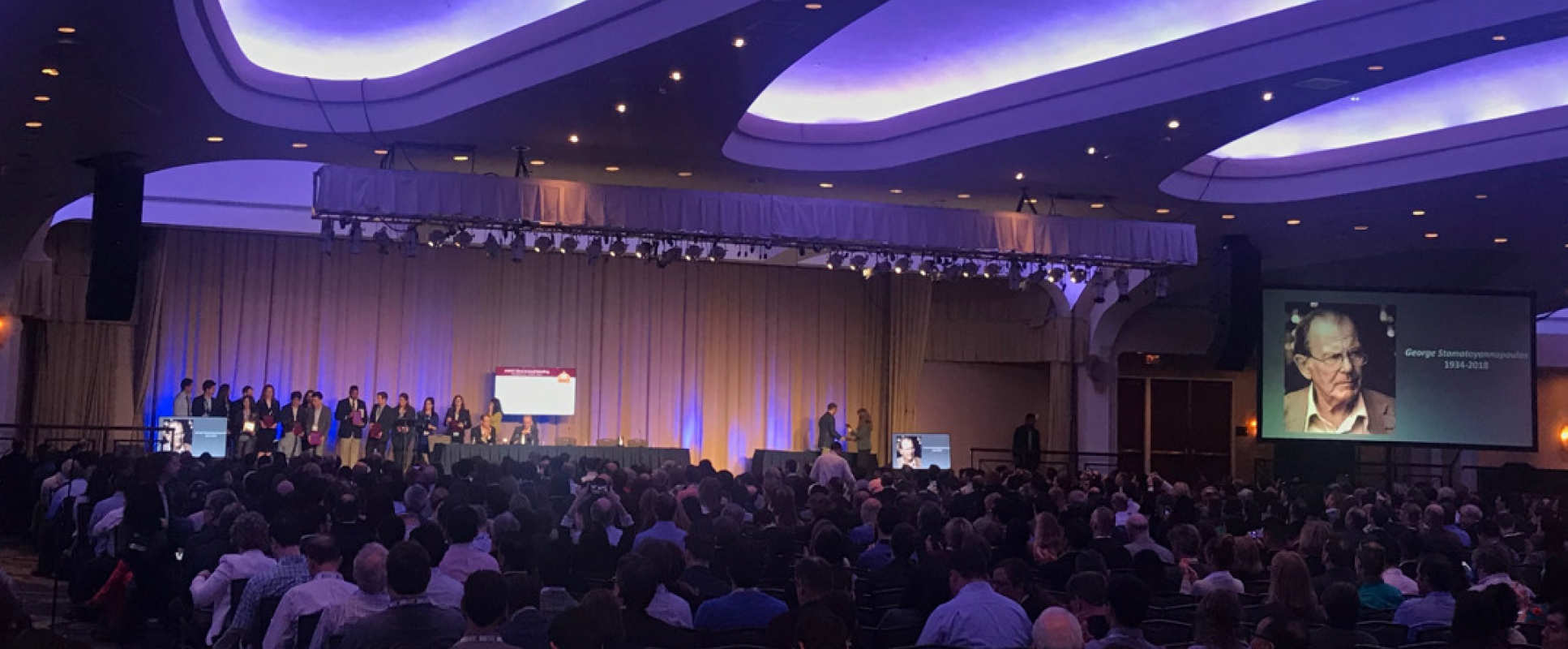
From 29 April to 2 May, experts in gene and cell therapy met at the American Society of Gene and Cell Therapy Annual Meeting, in Washington DC, to discuss some of the most relevant advances in gene and cell therapy. This conference is not to be missed. Many abstracts are submitted and only a few of high relevance and quality are presented. It is not uncommon to find attendees standing by the door or live-streaming during popular talks. I am very grateful I could present my research as an oral presentation thanks to an NHLI Foundation Travel Award.
Monday 29 April
I was very lucky because my presentation was during one of the very first sessions on Monday, about Pulmonary Gene Therapy. Most of the talks during this session where about cystic fibrosis, which our Institute specializes in, however, I had the opportunity to discuss a gene therapy for a different disease, pulmonary alveolar proteinosis. Other than respiratory diseases, there were a number of sessions on oncolytic viruses for cancer therapy. Oncolytic viruses have the ability to directly destroy tumour cells by promoting cell death and enhance the immune response of the host against cancer cells. A key factor for the success of this therapy is the tropism of the virus. In other words, the ability of the oncolytic virus to solely destroy the tumour cells but to preserve the healthy cells. If this is achieved, these viruses have an advantage over other conventional treatments like chemotherapy, which are active to both tumour and healthy cells. The immunogenicity of the virus, however, depends on its capacity to recruit immune cells, such as lymphocytes, and to induce the expression of cytokines, such as the granulocyte macrophages colony stimulating factor (GM-CSF). Both the tropism and the immunogenicity can be modified by altering various parts of the virus. An example of an oncolytic virus that is being trialled at the moment is the molecule Talimogene laherparepvec (T-VEC), which induces the expression of the cytokine GM-CSF and, as a result, activates the recruitment of T-cells that can destroy tumour cells.
Some clinical trials have shown that T-VEC in combination with ipilimumab or pembrolizumab may be useful against melanoma. Some of the publications that support this include the phase 2 trial by Chesney et al. (PMID 28981385). Some groups are also studying how to bring theranostic-guided oncolytic virotherapy to the clinic. Theranostics is a form of personalised medicine that combines a diagnostic result with a specific therapy. In the context of oncology, it can combine a drug that can detect tumour cells (i.e. radioiodine) and a second drug that is only delivered to the positive cells. It is believed that, in the future, theranostic-guided viruses may be able to react to specific tumour cell membrane proteins and include immune modulation drugs that could improve on-target effects and reduce toxicity.
Regenerative medicine was also featured at ASGCT2019. Nikolai Sopko showed impressive results of skin regeneration experiments after close burns, acute traumatic injuries or chronic wounds like in the case of diabetes. This group has developed genetically modified skin constructs created from a full-thickness skin biopsy. These cells maintain the normal polarity of the skin and form functional units that can engraft in poorly vascularised wounds. Also, unlike previous regenerated skin grafts, these develop follicles and subcutaneous adipose tissue after transplantation to the wound bed. Hematopoietic stem cell and progenitor cell (HSPC) transplantation has also been proposed for the regeneration of tissues, such as the cardiac tissue in Danon disease, which is characterised by the weakening of the heart muscle (cardiomyopathy) leading to premature death unless a successful heart transplant is performed. It is caused by mutations in the lysosomal-associated membrane protein 2 (LAMP2).
Tuesday 30 April
One of the biggest highlights of the second day were the George Stamatoyannopoulos Memorial Lecture and the presentation of excellence in research awards. Professor Stamatoyannopoulos was the founder of ASGCT and one of the most revered geneticists of all time. He was a clinician and a scientist who contributed greatly to the field of haematology with his studies on the genetic basis of hemoglobinopathies. He was also the first scientist to link thalassemia mutations and malaria resistance. Later on during this session, Michel Sadelain talked about how T-cell engineering offers a new paradigm for cancer treatment. T-cells are part of the normal adaptive immune response and can confer long-lasting protection against certain antigens. The gene transfer and genome editing techniques used for chimeric antigen receptor (CAR) T-cell therapies maintain the normal function of these immune cells, but change their tropism to recognise and destroy cancer cells while allowing healthy cells to live. Since specificity is one of the most important factors for successful cancer therapy, T-cells have a number of advantages over other methods that target a wider range of cells like chemotherapy. A number of positive phase 1 clinical trials using T-cell therapies have been published to date. An example is the Park et al. (PMID 29385376) trial using CD19 CAR therapy in B-cell acute lymphoblastic leukaemia (ALL) in which complete remission was observed in 83% of the treated patients and the median overall survival was 12.9 months. However, some side-effects, especially the cytokine release syndrome (CRS), or limitations, such as T-cell exhaustion, were also described. CRS is a life-threatening inflammatory condition that in this study occurred in 26% of the patients. The CRS is not well understood and there are not yet good models to study it. Currently, CRS is thought to be caused by the activation of host macrophages as a reaction to the therapy rather than directly by the transplanted T-cells. Another concern with T-cell therapies is the progressive loss of functional T-cells which can be due to T-cell exhaustion, antigen scape, diminished function, and others. These obstacles are currently being addressed with different genetic and molecular approaches that may be able to modify the exhaustion times, overcome the antigen scape process and improve the CAR T-cell function. Despite these limitations, CAR T-cell revolutionised cancer treatment and captured the attention of the public. An example of this is the quote from the media describing CAR T-cells as “living drugs that exceed natural boundaries”.
During the outstanding new investigator symposium, adeno-associated viruses (AAV) were discussed. These are widely used vectors that can be customised by changing their capsid to improve their tropism and specificity. The adeno-associated virus serotype 9 (AAV9) has been used with encouraging results for the inherited paediatric neurological disease giant axonal neuropathy (GAN), an autosomal recessive disorder caused by mutations in the GAN gene causing the deposition of neurofilaments and, consequently, swelling and degeneration of the axons. It affects both the central and peripheral nervous system. Some of the clinical manifestations are intellectual disability, muscle weakness and low muscle tone (hypotonia), impaired muscle coordination (ataxia), lack of reflexes, amongst others. Dimah Saade reported results of the first-in-human phase 1 clinical trial (NCT 02362438) using an AAV9 vector coding for the GAN gene (scAAV9-JeT-GAN virus), which was delivered intrathecally at increasing doses from 3.5e13vg to 1.8e14vg and compared to placebo. The natural history of the disease was monitored with various motor function tests, electrophysiology and neuroimaging. When compared to the placebo group, the patients treated with the two higher doses (1.2e14vg and 1.8e14vg) had a slower progression of the disease, with a difference of 4 and 8 points respectively on the Motor Function Measure 32 (MFM32) clinical scores. The intrathecal delivery method was also well tolerated but neutralising antibodies against AAV9 was detected in serum and in the cerebrospinal fluid after treatment – meaning that repeated doses may not be feasible. Later in this session, Anna Kajaste-Rudnitski presented strategies to overcome the immune barriers when performing gene therapy in human hematopoietic stem cells (HSC). These cells have great potential for sustained gene correction. However, to date, their genetic manipulation is not very efficient. In order to overcome this, various groups are studying novel gene transfer techniques and gene-editing technologies to improve the crosstalk between the HSC cells and the viral vectors. For example, cyclosporine H (CsH) can induce the interferon-induced transmembrane protein 3 (IFITM3), enhance cell engraftment and improve gene transfer to HSC cells. Therefore, it is believed that the IFITM3 pathway can influence the survival, proliferation and tranfectability of the HSC cells (PMID 6292841).
I would like to close the second day with the highlights of the preclinical studies of non-viral gene therapy and the progress towards translation. In this session, mRNA lipid nanoparticles for the treatment of haemophilia A in mice were presented by Chun-Yu Chen. Clinically, the current standard of care for haemophilia is replacement therapy with the coagulation factor VIII (FVIII). Although this approach is effective, in 30% of recipients it leads to the development of anti-FVIII antibodies that neutralise the therapeutic protein. When this happens, the therapy is less efficacious or not effective anymore. It seems however that the injection of mRNAs could, at least partially, overcome this limitation since preliminary data in mice revealed that mRNA lipid nanoparticles can induce the expression of high levels of FVIII – high levels of the protein could outcompete the number of antibodies. In addition, further development of their formulation, such as the encapsulation of lipid nanoparticles encoding anti-CD3 monoclonal antibodies, can lead to delayed production of anti-FVIII antibodies. Taking these together, gene therapy using mRNA could be an alternative or complement to the current protein replacement therapies. mRNA lipid nanoparticles are also being studied for ornithine transcarbamylase deficiency (OTCD) (PMID 29433939), an inherited disease that causes accumulation of ammonia in the blood (hyperammonemia) leading to premature death. Therapies for this disorder are very limited. Liver transplantation can be curative but it is also associated with high morbidity and mortality. AAV vectors have been trialled but the high prevalence of anti-AAV antibodies in the general population are an important limitation, decreasing efficacy and not allowing for repeated doses. Instead, lipid nanoparticles can be given repeatedly, are stable for 6 hours (which is important for translational research), safe, and have been found efficacious in an animal model of OTCD (Spfash mice). After injection, OTC lipid nanoparticles induce OTC expression in the liver for a week, the ammonia levels are normalised, and the survival of Spfash mice increases from 10 to 30 days.
Wednesday 1 May
I started the day by going to a non-viral gene deliverysession in which base editing techniques were discussed. This is an exciting topic that I am not particularly familiar with, so it was a good opportunity to learn from the experts. The rationale behind base editing techniques is that most genetic diseases are caused by point mutations (SNPs), which are not well corrected with the standard nuclease-based genome editing methods. David Liu et al. developed an approach that can convert a specific base pair mutation without a double-strand break, the need of a donor DNA template or homology-directed repair. Base editing is not a novel technique. It has been used to modify bacteria, fungi, or plants for years but David Liu’s group improved its specificity and efficiency. Some of their pre-clinical work in epidermolysis bullosa (RDEB), was able to correct up to 50% of the fibroblasts, which can regenerate the skin lesions. They also demonstrated that this system is able to edit post-mitotic somatic cells, as compared to homology-directed repair techniques that do not work in non-dividing cells. It may also be safer as it is more specific, decreasing off-target effects, a common limitation of various gene therapy approaches.
The next session was the outstanding achievement award lecture and Sonia Skarlatos public service award presentation. The keynote speaker was John J Rossi and his son, who revised Rossi’s 40-year journey developing RNA based therapies. It all started with Rossi’s fascination with RNA biology and the discovery of the causal agent of AIDS, the human immunodeficiency virus (HIV), an RNA virus of the family retroviridae. The genome of the HIV provirus is synthesized by reverse transcription of the viral RNA genome into DNA. Therefore, he had a vision that RNA biology could be used to design therapies against HIV. The standard treatment for HIV at the moment is a combination of antiretroviral therapy (cART) drugs. These control the viral copy numbers but are not curative. In the best of the situations, cART therapy may lead to controlled viremia (<50 infectious units/mm3). In this situation, the patient is not infectious but still harbours infected cells. Due to different triggers, the latent HIV may start replicating and turn this immunologically healthy individual immunodeficient. Thus, Rossi’s group aim at eradicating HIV at the stage of latency by using functional RNA-based stem cell gene therapy. Broadly, their vectors encode RNA based editors that target both HIV and its receptor without affecting the normal function of haematopoietic cells. This has demonstrated to harbour sustained efficacy and to be safe. This gene therapy approach may not only be successful for HIV but also for liver cancer. In this particular case, small RNAs are used to activate the expression of a master transcriptional regulatory protein that leads to the inhibition of cancer progression. A human clinical trial using this therapy is on its way. Rossi’s concluded his inspirational talk with this quotation: ‘’To those who devote their lives to science, nothing can give more happiness than making discoveries, but their cups of joy are full only when the results of their studies find practical applications’’ - Louis Pasteur. I could not agree more. It must be a wonderful experience to see that your results are helping people cope better with their diseases worldwide.
The Presidential Symposium focused on AAV vectors and some of the results of the AAV-based genetic medicines company Audentes Therapeutics. AAV vectors are widely used gene therapy vectors that offer specific tropisms depending on their serotype. However, when translating pre-clinical work into human clinical trials there are at least two limitations, the presence of pre-existing antibodies against the vector and differences between species in terms of tropism – for instance, an AAV vector can be good at transducing mouse liver cells but may not be able to transduce human liver cells. The presence of antibodies against AAV vectors are really common in the general population and these can significantly reduce the efficacy of the therapy, thus more and more groups are studying the interaction between the AAV vectors and the immune system. In the retina, for instance, it has been shown that AAVs can induce dose-response inflammatory responses that can be controlled with anti-inflammatory drugs. When looking into this in more detail, it seemed that specific inhibition of the toll-like receptor 9 (TLR9) may be sufficient to modulate the immune response against the AAV vector. Later on during this session, the results of the ASPIRO phase 1/2 gene therapy trial in X-linked myotubular myopathy (XLMTM), using AAV8 at three ascending doses were presented. This is a disease caused by mutations on the MTM1 gene, which encodes myotubularin, necessary for muscular differentiation and function. Treatment with the AT132 molecule (AAV8-Des-hMTM1) correlated with increased vector copy numbers, mRNA and MTM1 protein in skeletal muscle biopsies, indicating that the tissue of interest was transduced. Histological improvements were also evident by week 48. All patients showed improved neuromuscular and respiratory function. The Children’s Hospital of Philadelphia Infant Test of Neuromuscular Disorders (CHOP INTEND) scale was improved, in some cases, to the maximum score of 64 points and four patients could breathe without a ventilator after treatment. The results of the ASPIRO phase 1/2 trial were also presented in a longer session in which a few videos demonstrating clinical improvements were also shown. For instance, it was evident how, after AAV8-Des-hMTM1 treatment, some patients were able to reach head control, independence of a ventilator, the capacity to crawl for the first time. In my opinion, the results of this trial are very impressive and I would not be surprised if this therapy gets approval from the regulatory agencies in the near future.
Another presentation that I really enjoyed was the work of Krystof Bankiewicz et al. on the aromatic L-amino acid decarboxylase (AADC) deficiency. The AADC enzyme, also known as DOPA decarboxylase, is necessary for the synthesis of dopamine and serotonin. It is encoded by the DDC gene on chromosome 7 in humans. AADC deficiency is a rare genetic disorder that affects how signals are passed between certain cells in the nervous system. It typically presents in infancy with a motor developmental delay, difficulty in moving (hypokinesia), weak muscle tone (hypotonia), involuntary movements of the limbs (athetosis), muscle stiffness (dystonia), muscle spams, pain, lack of energy (lethargia), abnormal rotation of the eyeballs (oculogyric crises), extreme irritability and agitation, sleep disruption, body temperature dysregulation. Since enzyme replacement therapies cannot cross the blood-brain barrier, AADC deficiency is one of the most difficult paediatric neurotransmitter disorders to treat for which gene therapy may be a good alternative. The results of a dose escalation clinical trial infusing the AAV2 virus carrying the AADC enzyme cDNA (AAV2-hAADC) into the substantia nigra, guided by magnetic resonance imaging, demonstrated increased levels of dopamine (FDOPA) in the brain as demonstrated by PET scans. Initially, patients developed dyskinesia because their nervous system had not been exposed to serotonin before, but 12 months later they presented significant neurological improvements in their Gross Motor Function Measure (GMFM) scores, dystonic symptoms, mood, sleep and motor function
Thursday 2 May
The day started with fantastic talks during the application of gene and cell therapy technologies for metabolic diseases session. The first one was on cystinosis, a multisystem lysosomal storage disorder caused by mutations on the cystinosin lysosomal cysteine transporter (CNTS) gene – and frequently the neighbouring sedoheptulokinase (SHPK) gene – causing multi-organ failure and eventually death due to cysteine accumulation and crystallization. Current therapies only delay the progression of the disease and are not curative. In addition, they need to be taken every 6 hours, have severe side effects and consist of a large number of pills a day. Stephanie Cherqui and her team have pioneered a novel therapeutic approach consisting of the transplantations of haematopoietic stem (HSCs) and progenitor cells (HSPC). These may mediate tissue repair in cystinosis by increasing the expression of the lysosomal membrane protein cysteine. In general, it is necessary to transduce a large number of cells in order to correct disease biomarkers when the defect is on the cell surface proteins whereas, if the defect is on a secreted protein, the transduction of a low number of cells tends to be sufficient to achieve therapeutic levels of the protein. In the context of cystinosis, it is necessary to correct a cell surface protein and, for this reason, the correction of the phenotype would only be expected if a large percentage of cells were transduced, which may imply repeated doses. Surprisingly though, Cherqui et al. observed that a single dose of HSPC cells were able to restore cysteine expression in a large number of tissues such as the kidney, heart, liver, and the skeletal muscles at a much higher rate than expected. When studying transplanted cells further, it was seen that HSPCs differentiated into macrophages that can create tubular protractions (nanotubes) that allowed for the delivery of functional lysosomes to neighbouring cells (PMID25186209), therefore increasing the number of transduced cells. Cherquis’ group will be starting a clinical trial using autologous transplantation of gene-corrected HSPC cells with a lentivirus (pCCL-EFS-CTNS-WPRE) in a cohort of patients with cystinosis. Genetically-modified HSPC cells can also engraft in the central nervous system (CNS) and give rise to microglia-like progeny. Thus, it is believed that they could be used to treat neurometabolic and neurodegenerative conditions. This is relevant for lysosomal storage disorders (LSDs) because in 50% of the cases the CNS is also affected and there are no available treatments. Microglia cells have characteristics such as the ability to (i) secrete therapeutic molecules like lysosomal enzymes, (ii) replace metabolically incompetent cells, and (iii) modulate neuroinflammation and reduce tissue damage that could make them suitable for treating lysosomal storage disorders.
In another talk by Markus Grompe, we heard about how gene therapy could be used to reprogram non-beta pancreatic cells into insulin-producing cells for the treatment of type 1 diabetes, an autoimmune disease in which beta cells are destroyed and insulin can no longer be produced. The standard of care for type 1 diabetes is the injection of insulin to avoid uncontrolled glucose levels in the blood, which would have detrimental effects in many organs. If pancreatic cells could be reprogrammed to produce insulin, these could repopulate the pancreatic islets that may have been destroyed by the disease and reduce the need for insulin injection. For this purpose, extra-hepatic cells, such as the gallbladder and ductal cells, were genetically reprogrammed using different pancreatic endocrine transcription factors – like PDX1, MAFA, NEUROG3 and PAX6 – to turn them into insulin-producing beta-like cells. The first approach, consisting of ex vivo reprogramming, was not very efficient because the cells were not very stable. An in vivo system was then tried, meaning that the transcription factors were directly delivered to the gallbladder (GBCs) to produce reprogrammed gallbladder cells (rGBC2) that could then be transplanted by ductal injection – which would be equivalent to retrograde bile duct injection in humans, a quite standard surgical procedure. Further analysis of the GBC cells showed that they were mono-hormonal beta-like cells capable of producing insulin (determined by RNA levels), albeit in low levels. The next step was to use AAV viruses, which had been proven safe and effective in various human tissues. However, it was necessary to first determine which serotype was able to best transduce pancreatic islets. AAV capsid screening studies selected the serotype AAV-KP1 as the best candidate. It was not only able to transduce pancreatic cells with high efficiency but also showed a very similar profile when tested in human cells – one of the major limitations of some AAV vectors is behaving differently in human cells as opposed to other animal cells. Part of this work was recently published in Nature (PMID 30760930).
I am very thankful I could attend this conference. It was one of many situations in which I am reminded of the great potential of gene therapy and how wonderful is to be in this field of medicine. The advances reported during this meeting also give hope to patients with diseases that are, so far, incurable. Gene therapy also has the potential to overcome some of the limitations of current therapies. At a meeting such as ASGCT, one really gets the sense that gene therapy is going to be life changing for patients. Words cannot express how lucky I feel to be able to contribute to this field. This conference was also an opportunity to re-assess and develop some ideas for my project and other areas of medicine. These were busy, productive and wonderful days. The level of the presentations was really high and I could meet new people and, perhaps, future collaborators. I would like to express my most sincere gratitude to the NHLI for sponsoring my trip. I hope to give back to you with my research and contributions to the field.
Brian Wang
ISHR World Congress 2019
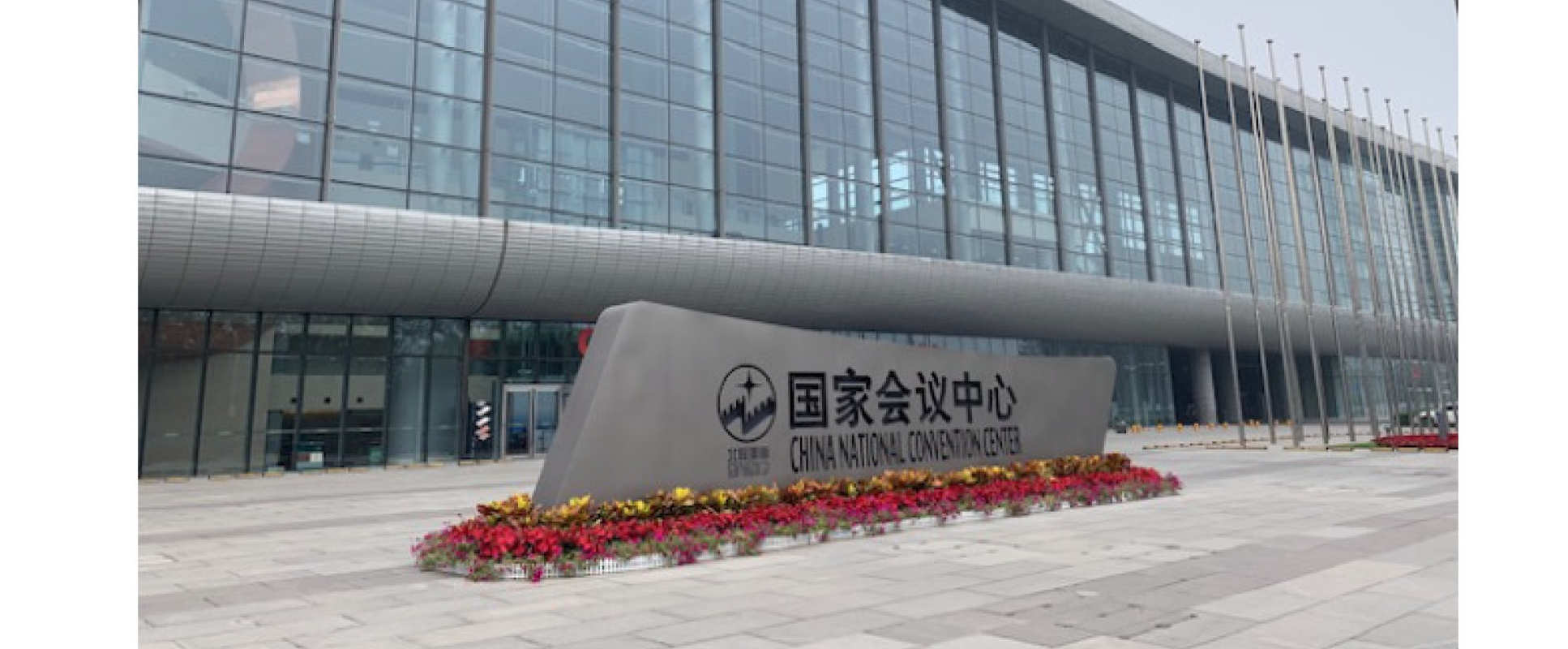
The World Congress 2019 was the 23rd triennial meeting of the International Society of Heart Research (ISHR). As the main event for the ISHR International, the Congress was a major opportunity for renowned researchers all over the world to share important research results, for early researchers to build a reputation within the scientific community, and for all to network amongst an international audience. This year’s Congress was held over three and a half days at the National Convention Centre in Beijing, China.
More than 200 speakers were arranged over 30 symposia. These were spread into seven main topics devoted to Mechanisms of Cardio-protection and Injury, New Insights into Cardiac Dysfunction, Ion Channel Mechanisms and Arrhythmias, Signalling in Cardiac Disease and Therapy, Emerging Concepts for Cardiac Regulation, Cardiac Metabolism and Regenerative Medicine. The oral presentations were split into distinct areas of interest, with internationally distinguished speakers within each area present at the meeting to give presentations as well as witness the talks given by peers.
One of my areas of interest is in fibrosis, so I was very glad to have the opportunity to attend the symposium on Fibrosis in Myocardial Disease. The presentations were all based on the most up-to-date research, including many unpublished studies from well-established research groups. The theme of characterising fibroblast disease phenotype is particularly important at the moment, and it was hugely insightful to witness the discussion of appropriate markers. During this symposium, there was a very well organised presentation on the role of inflammation and the heart scaffold in heart remodelling after injury. This included a study identifying that fibroblasts display distinct profiles at different time points over the first week after cardiac injury, indicating we must investigate temporal changes in their physiology and the implications for healing. This presentation, as well as another presentation on fibrosis and cardiac dysfunction, were particularly interesting and relevant at this stage of my project, as it gave a great overview of the recent work on fibrosis, giving me much to think about as I write the thesis to my project.
Another area of my project is to investigate the role of extracellular vesicles in cell-to-cell interactions. These vesicles were discovered less than 40 years ago, but have attracted much attention due to the role they may have in disease and in cancers. A major aspect of studies into these vesicles is the lack of consensus about their biological activity. The Congress enabled young researchers like myself to be involved in the discussions about the future of studies into extracellular vesicles. The study on the role of extracellular vesicles in cardiac function will form one of my manuscripts to be submitted for publication, and the presentations gave an important insight into the gaps in our research knowledge, including aspects that will be included within the manuscript.
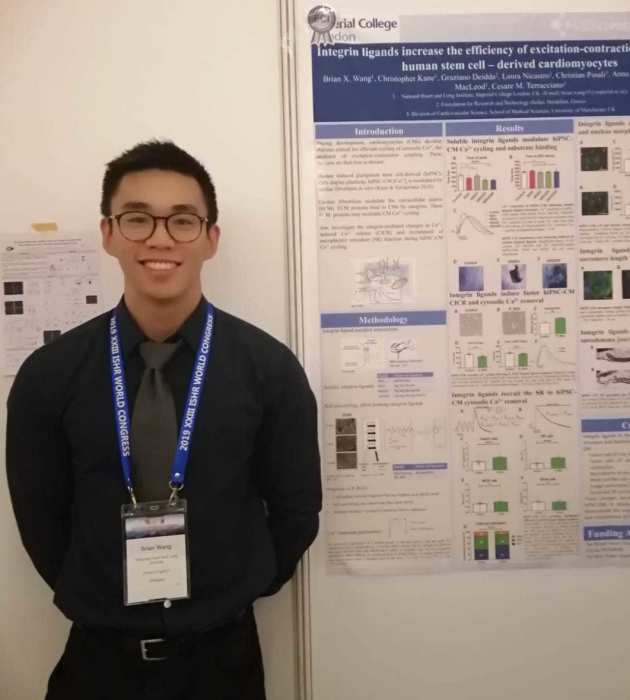 The Congress provided me the opportunity to present a poster on the role of scaffold proteins in regulating cardiac cell function. The poster included the major findings from one of the main studies of my PhD project, and included much of the work that is currently in preparation for publication submission. This project involves collaborations with the University of Manchester and the Foundation for Research and Technology – Hellas, Greece. The relevance of the work both to stem cell maturation and tissue construct engineering enabled my work to draw much attention from the attendees. The input from my peers at the Congress in the form of questions and suggestions about future areas of research were invaluable, as I prepare to submit both my thesis and manuscript. Similar aspects of the work may also need discussing in my viva, and the Congress allowed me to prepare for questions on these areas.
The Congress provided me the opportunity to present a poster on the role of scaffold proteins in regulating cardiac cell function. The poster included the major findings from one of the main studies of my PhD project, and included much of the work that is currently in preparation for publication submission. This project involves collaborations with the University of Manchester and the Foundation for Research and Technology – Hellas, Greece. The relevance of the work both to stem cell maturation and tissue construct engineering enabled my work to draw much attention from the attendees. The input from my peers at the Congress in the form of questions and suggestions about future areas of research were invaluable, as I prepare to submit both my thesis and manuscript. Similar aspects of the work may also need discussing in my viva, and the Congress allowed me to prepare for questions on these areas.
My project is based on using a stem-cell model for investigating the modulators of heart contraction after injury. During this symposium, there was a very thorough presentation on the potential of stem cells and genomics for precision medicine. In this presentation, the speaker highlighted the potential uses for stem cells in disease modelling, drug discovery and in cell therapy. Just as importantly, he also addressed the current issues and limitations in the application of cells derived from stem cells. This presentation, as well as the others within the symposia, provided plenty of food for thought as I prepare the thesis to my project.
Within each section, there was also the opportunity for notable abstracts to be highlighted as an oral presentation. It was hugely encouraging to see the audience engaging with the presentation by Dr Richard Jabbour on the stem cell-based tissue engineering work at the NHLI. During my project, I was heavily involved in producing and providing the contractile cardiac cells for this study, so it was great to see the response from the scientific community.
Overall, I found this Congress hugely beneficial for my research, both in terms of current projects as well as future directions for my work. The Congress was well organised and a fantastic opportunity to be immersed in the field of heart research. Beyond the Congress itself, it was a fantastic experience to visit Beijing. I’d like to thank the NHLI for providing this travel grant, for facilitating my attendance at the Congress and for helping to further my research and career prospects.
Katerina Lawlor
Keystone Symposium on Cell Competition in Development and Disease

I am very grateful to have received an NHLI Foundation Travel Award which allowed me to attend the Keystone Symposium on Cell Competition in Development and Disease. The conference took place on the shores of Lake Tahoe in California. While the location was stunning, the area received several feet of snow during the conference, which made for the unique experience of having to walk though snow to attend the talks!
This meeting was the first Keystone Symposium on cell competition, a field which explores non-cell-autonomous interactions and is of direct relevance to my work. As it was the first meeting of its type, it provided an unprecedented opportunity to bring together research leaders from around the world working in this area. It was also attended by a number of researchers from other areas who were intrigued by the field of competition and wished to understand whether it could be relevant to their work. The talks were therefore a fascinating mix of presentations by high profile researchers already well-known in this field and researchers from related fields whose work provided novel insights and alternative perspectives on the potential relevance of competition to a variety of contexts. It was particularly interesting for me to see the wide variety of model organisms that were being used for the study of germ line competition and multicellularity, including flatworms, amoeba and sea squirts. However, the highlight of the conference must be the keynote address by Ginés Morata. It was his initial publication back in 1975 that founded the field of competition and it was therefore a great honour to hear him speak.
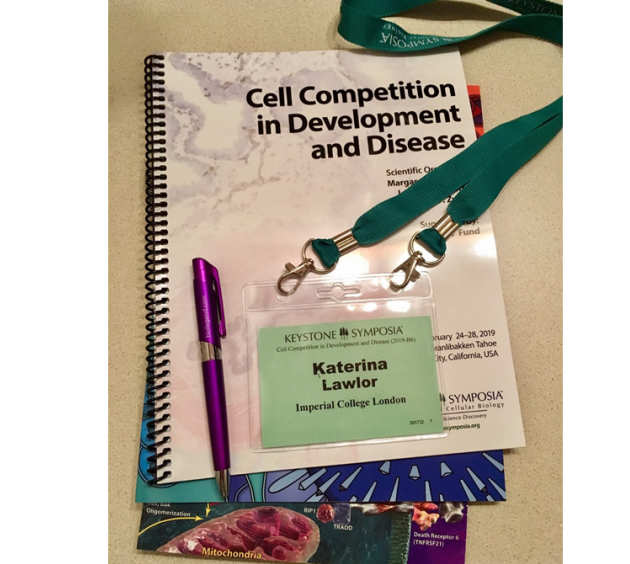 I had the opportunity to present a poster on my PhD project in the second session. The poster sessions at this conference I thought were particularly successful and well-attended. No more than 20 posters were up for presentation at each session, which therefore provided plenty of opportunity to discuss the posters in detail with the presenters. I was fortunate to have a lot of interest in my poster and spent the entirety of the two-hour session discussing my work with a variety of people. I therefore received a great deal of invaluable feedback. In particular, as I am currently writing my PhD thesis, the comments provided a great insight into the strengths and weaknesses of the project ahead of my viva voce defence. Furthermore, the interest in my work also allowed me to network and form connections with a number of researchers in the area, something which is particularly important as I begin to think about my next steps beyond the PhD.
I had the opportunity to present a poster on my PhD project in the second session. The poster sessions at this conference I thought were particularly successful and well-attended. No more than 20 posters were up for presentation at each session, which therefore provided plenty of opportunity to discuss the posters in detail with the presenters. I was fortunate to have a lot of interest in my poster and spent the entirety of the two-hour session discussing my work with a variety of people. I therefore received a great deal of invaluable feedback. In particular, as I am currently writing my PhD thesis, the comments provided a great insight into the strengths and weaknesses of the project ahead of my viva voce defence. Furthermore, the interest in my work also allowed me to network and form connections with a number of researchers in the area, something which is particularly important as I begin to think about my next steps beyond the PhD.
Not only did I receive highly useful feedback and ideas to improve my own project, but I was also able to report back to my laboratory group on the information that had been shared at the meeting. A number of members of our group work on cell competition and I therefore presented a meeting summary upon my return, highlighting talks and areas of discussion that I felt were of interest to the work of the laboratory more generally. In this way, other members of my group also benefitted from my attendance of the meeting.
Overall, the meeting was a fantastic experience, which greatly helped me to understand how my research fits into the wider context of the field. It will hopefully also help me to anticipate a little better the reviewers’ comments that we may receive as we work towards submission of this work. I am therefore very grateful to the NHLI Foundation for making my attendance possible.
Dr Kirk Taylor
Gordon Research Seminar and Conference on the Cell Biology of Megakaryocytes and Platelets
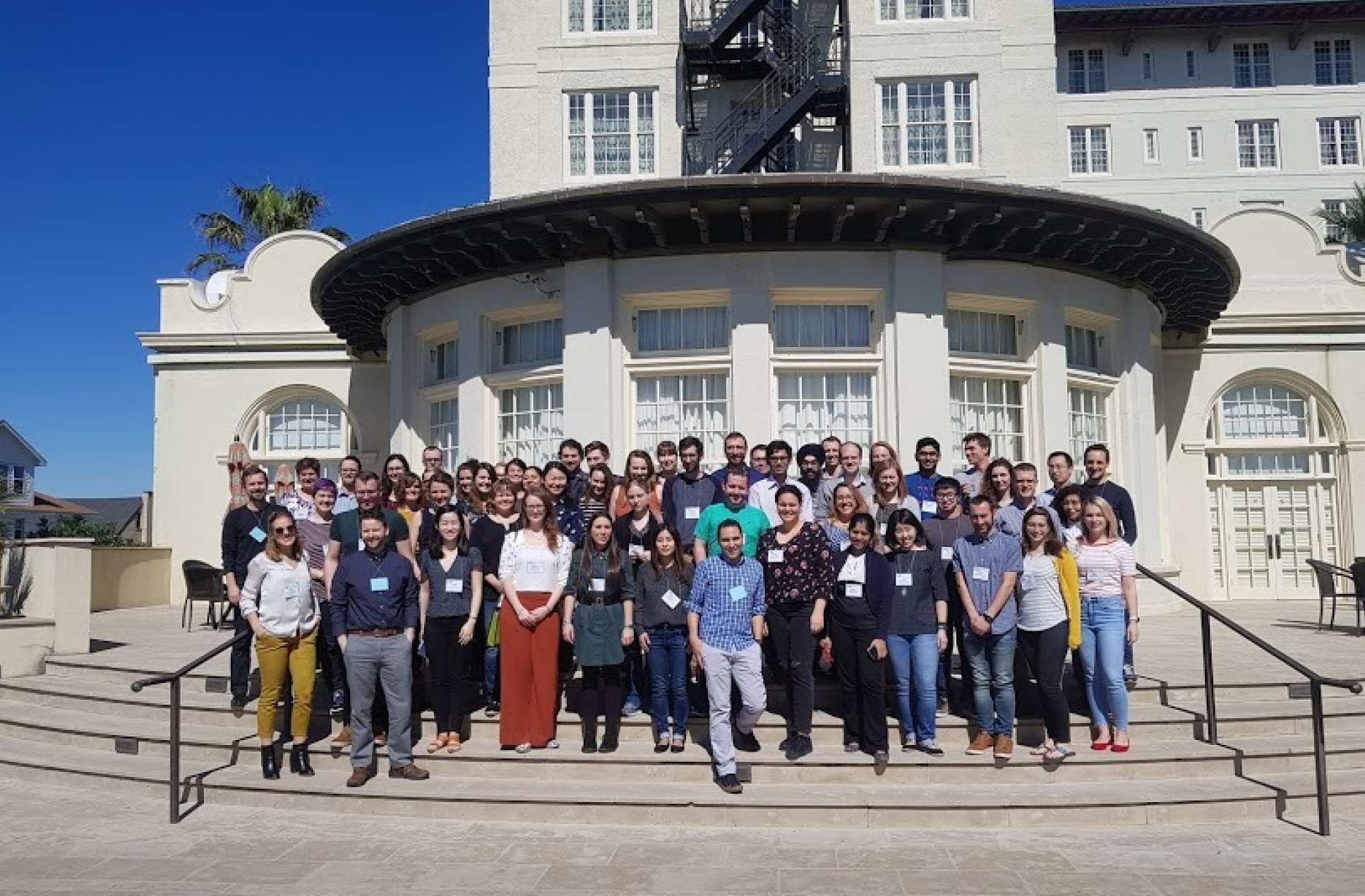
Designer platelets, space rockets and a surprise election!
What a week with cutting-edge science, new collaborations, reconnecting with old friends and some limited time to unwind. Thanks to a generous NHLI Travel Award I was able to attend the Gordon Research Seminar and Conference on the Cell Biology of Megakaryocytes and Platelets held in Galveston, Texas. The meeting showcased lots of unpublished data, pushing the frontiers of science and challenging some classical views of thrombosis research.
A 10 hour flight to Houston and I was reunited with friends from the University of Reading and it was time to hire a car and hit Galveston Island. We were promised a scenic drive down to the Island, but a delay meant it was getting dark and a storm was brewing. We made it to our nautical-themed beach house for the night, worked through the jet lag with margheritas and adjusted to Texan life. Come Saturday morning the mist had descended, and, despite being on Seawall Boulevardd, we couldn’t make out the sea!
The Gordon Research Seminar (GRS) was held over the weekend and was chaired by Dr Amanda Unsworth (Manchester Metropolitan University) and was targeted at early career researchers, with over 70 participants with twelve short talks, 33 poster presenters, a keynote talk and career mentoring session.
Proceedings were kickstarted with our keynote session from Dr Cédric Ghevaert (University of Cambridge). I had been asked to chair the session and ensure that we didn’t overrun and facilitating discussion afterwards (no pressure!). Cédric gave an engaging talk explaining the challenges associated platelet transfusions and ensuring adequate supplies, given that donated platelets only survive 7-10 days, compared with 40+ days for whole blood. One solution is to produce platelets ‘on-demand’ in the laboratory. Dr Ghevaert guided us through the steps that his lab had taken to achieve this aim, the safety and financial challenges we face and how we might be able to manufacture ‘designer’ platelets to manage specific bleeding disorders. A lively discussion followed, leading us into the first poster session of the week.
This was the first opportunity to discuss and present my latest data showing the effect of HIV medication on platelet function. We recently published our data showing that specific HIV drugs can lead to increased platelet activation, which may help explain a higher incidence of heart attack in people living with HIV. It is hoped that these findings will help inform treatment decisions helping people live longer healthier lives with HIV. Several other delegates had interests in HIV, which led to productive discussions, new experimental plans and hopefully some future collaborators.
After dinner, we were treated to the first of many late evening science sessions (19:30-21:30). Topics covered megakaryocyte, the platelet precursor cell, and platelet development and signalling pathways. The six presentations were of high quality and set the tone for the rest of the meeting. Presentations were followed by an informal networking and drinks reception.
Highlights from the morning session on day two included Dr Patricia Davenport (Boston Children’s Hospital) and Ujjal Sekhon (Case Western Reserve University, USA) who discussed their research into reducing deaths from neonatal sepsis and generation of synthetic platelets for transfusion. The final session of the GRS was the mentorship component, where we heard from Dr Kellie Machlus (Harvard Medical School) about her career pathway into academia and how to deal with the obstacles along the way. Professor Zhen Gu (UCLA) gave a lively tour through his career and how he has used his entrepreneurial spirit to spin-out his research into several companies. The session ended with a panel discussion and useful tips to get started! The final business was to elect the chairs for the next GRS to be held in Tuscany in 2021. I was fortunate enough to be elected by the delegates to co-chair this meeting with Dr Carsten Deppermann (University of Calgary).
The Gordon Conference was chaired by Professor Wolfgang Bergmeier (University of North Carolina at Chapel Hill) and vice-chair Professor Elizabeth Gardiner (Australian National University). There were many stimulating talks across the five days and plenty of opportunities to talk, have dinner or share a drink with the other 200 delegates. The highlights for me were the ongoing debates between leading researchers about how and where platelets are generated and equally hot discussions about how they are cleared from the circulation. Professor Karin Hoffmeister (Blood Center of Wisconsin) gave a keynote overview of her work to understand how platelets are cleared.
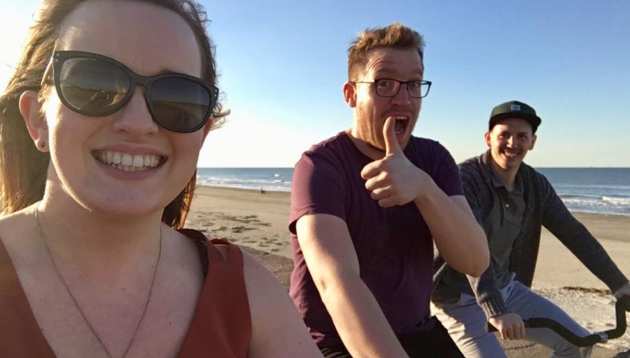 There was an opportunity to discuss the challenges facing women in research during a ‘Power Hour’ co-chaired by Dr Ilaria Canobbio (University of Pavia) and Professor Renhao Li (Emory University). We split into several groups to focus on specific challenges, which included the drop-off of women in positions along the academic career path, career mentorship and gender pay gap. Our group discussed unconscious bias and ways that we might move forward. It is worth noting that this session was optional and a common problem with unconscious bias training is that it is often the people outside of the room that would benefit the most. to see the diverse range of roles of platelets beyond thrombosis and haemostasis. I was particularly interested to see Benoit Ho-Tin-Noe (INSERM, Paris) highlighted this in his engaging talk about the contribution of platelets to inflammatory events and how antiplatelet therapy may influence the inflammatory response.
There was an opportunity to discuss the challenges facing women in research during a ‘Power Hour’ co-chaired by Dr Ilaria Canobbio (University of Pavia) and Professor Renhao Li (Emory University). We split into several groups to focus on specific challenges, which included the drop-off of women in positions along the academic career path, career mentorship and gender pay gap. Our group discussed unconscious bias and ways that we might move forward. It is worth noting that this session was optional and a common problem with unconscious bias training is that it is often the people outside of the room that would benefit the most. to see the diverse range of roles of platelets beyond thrombosis and haemostasis. I was particularly interested to see Benoit Ho-Tin-Noe (INSERM, Paris) highlighted this in his engaging talk about the contribution of platelets to inflammatory events and how antiplatelet therapy may influence the inflammatory response.
In between the presentations and gruelling schedule of 12 hour days, there were some opportunities to take time out, chill and get to know our peers. It was these moments that I tried to capture during my 48hr NHLI Twitter Takeover (give it a go!). Ok, I also tried to find some cute animal GIFs, but what is social media without clickbait? On the day the sun crept out we cycled to the end of the Island and back, took a walk along the beach and found a Ben & Jerry’s shop.
A major motivation for me to attend this conference was the opportunity to discuss plans and strategy as I transition to my own independent research career. I wrote my first research grant before Christmas and was awaiting the outcome. This meeting helped me grow in confidence and the collegiate, open atmosphere meant that people were approachable and supportive when discussing ideas and potential collaborations. However, it was on the way to NASA mission control HQ in Houston, home of the Saturn V Rocket and Shuttle Carrier, that my email pinged with the grant outcome. This was my first rejection, but thanks to the support of colleagues around me it was a good environment to turn my disappointment into ways to repackage my proposal.
Read more about Kirk and his research
Dr Akif Khawaja
American Heart Association (AHA) Scientific Sessions 2018
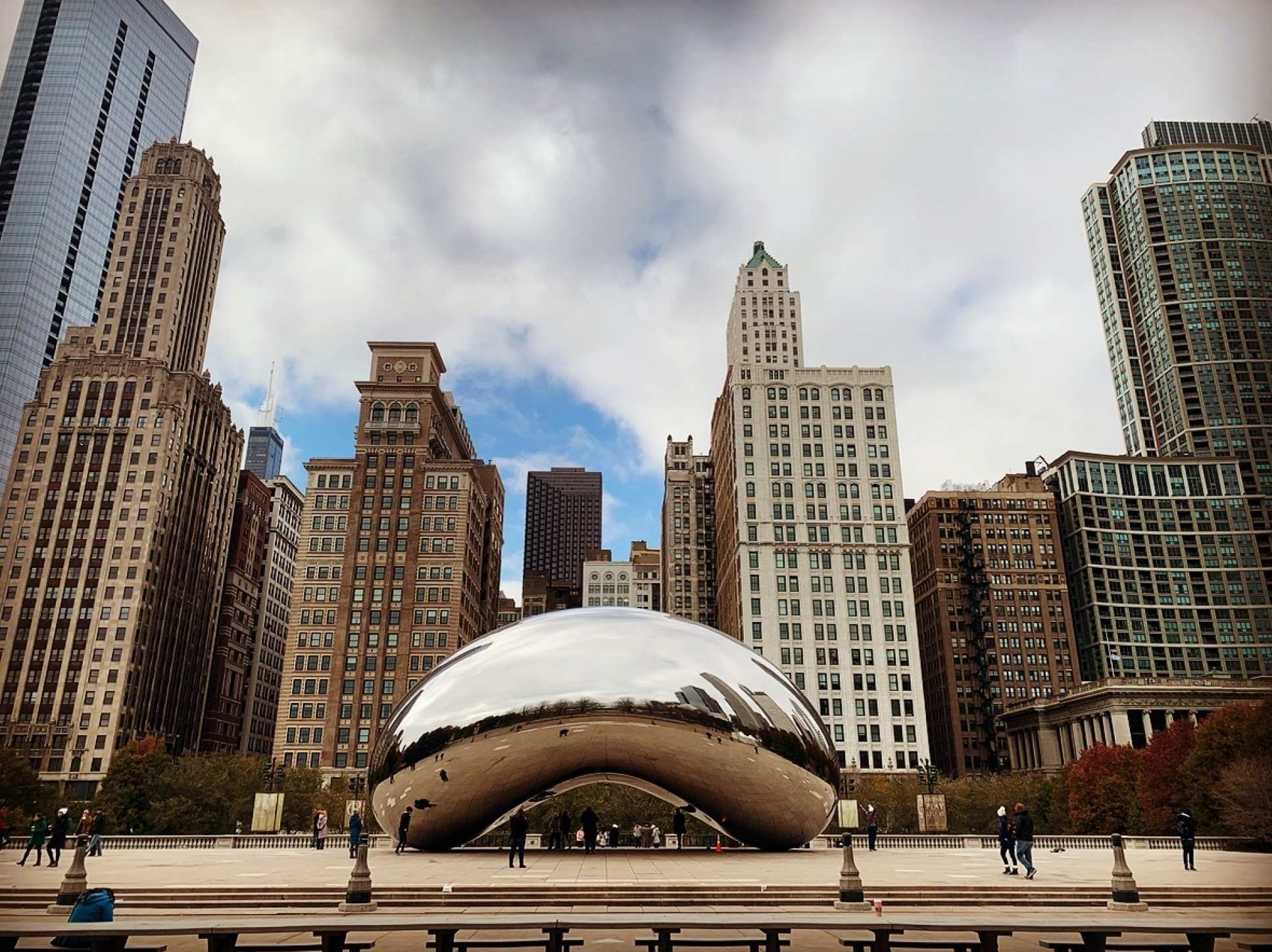
I am incredibly grateful to the NHLI Foundation for awarding me a Travel Award, which allowed me to attend and present my work at the American Heart Association (AHA) Scientific Sessions 2018 conference.
The AHA is one of the largest cardiovascular associations and supports a vast array of research into understanding and better treating cardiovascular disease (CVD). Their annual Scientific Sessions conference brings together clinical and basic scientists from across the world, and showcases the international cutting edge research being performed. The conference was held in Chicago, home to the deep-dish pizza, ‘The Bean’, and this year an early winter that saw wind chills bring temperatures down to as low as -12oC!
This was my first time at the AHA Scientific Sessions and I was lucky enough to present my work examining how HIV antiretroviral drugs modulate the thrombo-regulatory mechanisms of the vascular endothelium. Moreover, I was also invited to present at the Council for Atherosclerosis, Thrombosis and Vascular Biology (ATVB) Early Career Networking Reception, which provided an additional platform to showcase my work and allowed me to interact with internationally renowned cardiovascular scientists on a more intimate level.
In contrast to the frosty commute, the conference began with the hot topics dominating the cardiovascular science field. The plenary session showcased work ranging from how nanotechnology could be used to monitor patients within intensive care units, to the potential use of anti-atherosclerotic vaccines to prevent CVD. There was also a strong focus on how the gut microbiota affects cardiovascular health, with speakers highlighting potential microbiota targets to help treat and prevent CVD. The first day ended with the ATVB Early Career Networking Reception, which allowed me to present my work to a much smaller and more specialised audience. I found this reception to be incredibly useful as it not only highlighted interesting research avenues to explore, but also provided useful contacts to help pursue this work
The second day addressed the epigenetic and metabolic mechanisms underlying vascular health, all of which provided interesting insights into how altered cell metabolism drives CVD. My personal highlights were from the last day of the conference, which had many talks discussing the links between inflammation and thrombosis. The first session, ‘Frontiers in Thrombosis: Inflammatory Mechanisms in Thrombosis’ was my favourite of the day. There was a broad range of speakers, who discussed topics ranging from the role of fibrinogen and complement factors in thrombosis and as potential therapeutic anti-thrombotic targets, to how leukocyte-platelet crosstalk drives thrombotic pathophysiology. Whilst not directly related to my research, this session did provide a lot of translatable ideas that could build upon my current research.
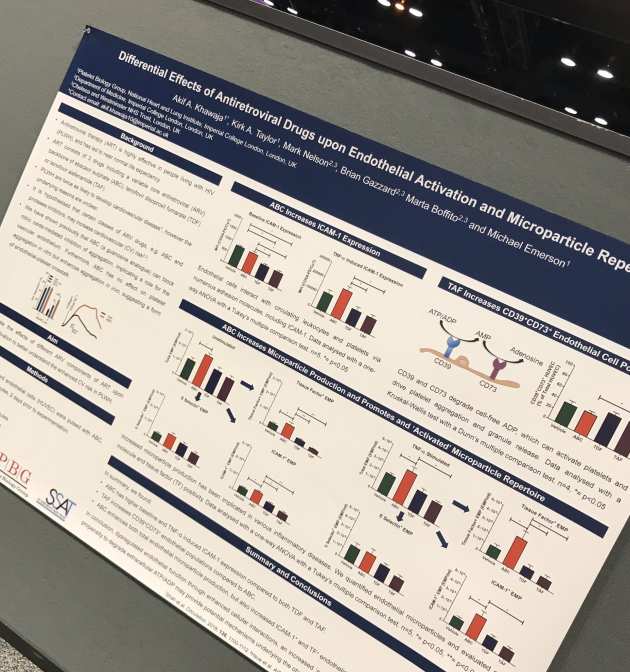
My poster session was also this last day, which opened up my work to a broader cardiology audience. Our poster gained a lot of interest from clinicians and basic scientists in both academia and industry, all of whom had insightful questions that I am taking on board whilst moving forward with my work. I was pleasantly surprised to find several other posters who examined CVD within HIV cohorts, as I was able to have lots of technical discussions specific to the HIV field. These talks were productive as there were several techniques and experiments I had considered exploring, so was able to get tips on how to take these further.
Overall, the conference was filled with a variety of cutting edge science spanning multiple disciplines, all of which were equally interesting and presented me with the opportunity to showcase my work with CVD experts from across the world.
Combined with the unique opportunity to present at the ATVB Early Career Networking Reception, this conference was an invaluable experience and I am truly thankful to the NHLI Foundation for making this experience possible.
Read more about Akif and his research
Patricia Ogger
International Colloquium of Lung and Airway Fibrosis

I would like to express my sincere thanks to the NHLI for supporting my attendance at this year’s International Colloquium of Lung and Airway Fibrosis (ICLAF) in Monterey, California with a travel grant.
The ICLAF meeting is a world-renowned conference held bi-annually, aiming to disseminate and advance research on pulmonary fibrosis, while bridging the gap between basic and clinical research. Being a small conference it fosters strong networks between research groups dispersed around the globe.
This year’s ICLAF meeting featured two poster sessions, one for general viewing and one with chaired poster discussions in small groups. I was pleased to present some of my data as a poster in both a general viewing as well as a small group discussion to leading experts in the field and fellow early career scientists, who provided invaluable feedback and constructive discussion. Immunometabolism, the study of metabolic changes and dysfunctions of immune cells, is a newly emerging field and especially relevant in a disease context such as pulmonary fibrosis, which has been shown to be in part caused by altered regulation of wound healing by airway macrophages. At the ICLAF meeting I presented my research on the metabolic phenotype of airway macrophages in idiopathic pulmonary fibrosis (IPF) and chronic hypersensitivity pneumonitis (CHP). Despite similar severities of lung fibrosis, the metabolic profile of IPF and CHP airway macrophages is distinctly different, both in terms of mRNA gene expression and global respiratory capacity. My poster was well received by both basic and clinical scientists and the session chairs led a discussion about implications of my findings, which could be relevant both for better differentiation between interstitial lung diseases and identifying new therapeutic targets.
Each conference day was kicked-off with a patient giving a short insight into life with pulmonary fibrosis. I thought it very valuable to have patients involved in the conference and to stay in touch with the big picture of pulmonary fibrosis research: improving patient lives. These insights were followed by presentations of state-of-the-art research findings. Two trends in pulmonary fibrosis research discussed were the role of metabolism in disease pathology and implications of new technologies, such as artificial intelligence to analyse CT scans. Another overarching-theme was the role of monocyte-recruited macrophages and their implications in the pathology of pulmonary fibrosis.
As ICLAF is a comparably small conference, shared meals and excursions provided ample opportunity to speak to other IPF researchers. In this context I spoke to Professor Dan Chambers (University of Queensland, Australia) about his research on transplant lungs in IPF to determine suitable markers to distinguish between recruited and resident pulmonary macrophages and to Dr Ehab Ayaub (Harvard University), who has discovered a subset of monocyte-derived macrophages expressing the folate receptor and protecting against development of pulmonary fibrosis, both of whom are interested in a collaboration.
The ICLAF meeting 2018 has allowed me to get a bigger picture of the state-of-the-art research of pulmonary fibrosis. It was great to meet clinicians, scientists and patients from all over the world and receive feedback on my research by world-leading experts. None of this would have been possible without the support of the NHLI travel grant, so again I would like to thank you for giving me the opportunity to attend this leading conference for pulmonary fibrosis.
Catherine Wrench
European Respiratory Society Annual Congress 2018
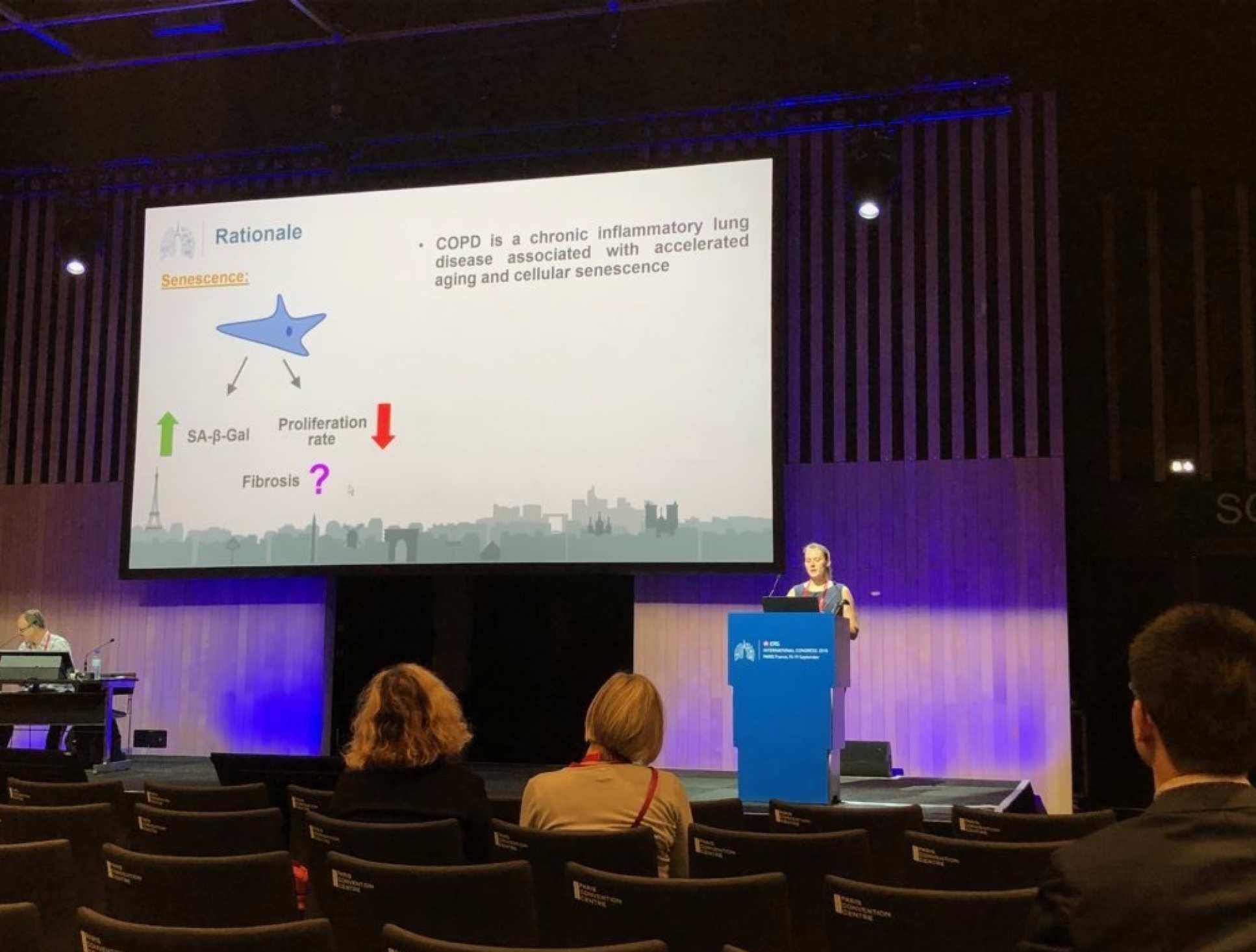
I am very grateful to have received the NHLI Foundation Travel award to enable my attendance at the European Respiratory Society (ERS) International Congress in Paris, France.
The ERS is one of the largest respiratory conferences, attracting more than 23 000 delegates including both basic scientists and healthcare professionals. Over the 5-day conference, a range of research was presented comprising of laboratory-based studies, clinical trials and translational research.
The NHLI award enabled me to present my work investigating the senescent and fibrotic characteristics of small-airway derived fibroblasts from Chronic Obstructive Pulmonary Disease (COPD) patients. I was part of a poster discussion session focused on novel pathways and therapeutic targets in chronic lung disease. This session promoted discussion on these new pathways that influence many different lung diseases; as well as the practicalities and current issues surrounding targeting some of these pathways as therapeutics. This poster session also allowed me to practice my presentation skills and gain helpful feedback and advice from other researchers. As well as attending my own poster discussion session, I also attended other poster and oral presentations, which allowed me to experience and develop ideas to apply to my own work and discuss the application of new techniques with other presenters.
My research project has applications across many disciplines such as, cellular senescence, fibrosis and COPD. The ERS provided an excellent opportunity to attend presentations on a wide variety of areas, including all of these. There were many exciting sessions relating to COPD and Idiopathic Pulmonary Fibrosis (IPF), as both are diseases of ageing relevant to my project. I particularly enjoyed the talk by Serge Adnot (from the Institut Mondor de Recherche Biomedicale) about novel pathways in lung cell senescence in COPD; as well as the talk from Philip Hansbro (from The University Of Newcastle, Australia) on Gut-Lung crosstalk and how using the gut microbiome could be used to treat lung disease in the future.
At the ERS, early-career support and networking is strongly encouraged. I attended the ERS “Young Scientist Networking Evening”, which most importantly provides the opportunity for early-career scientists to interact with other early-career scientists and experts in the respiratory field, but also provided free wine to aid the networking process. I gained helpful advice on finalising my PhD and on my future career in research from Paul Schumacker (from Northwestern University); and discussed how I could get more involved in the ERS with Sabine Bartel and Melanie Königshoff (from the Research Centre Borstel and the University of Colorado, respectively). This was an invaluable opportunity for myself to gain advice, support and to form collaborations and networks.
Overall, attending the ERS International Congress was great fun and an amazing opportunity for me to meet the researchers whom are experts in my field of research, gain new insights into my research project and make connections with scientists around the world. I am excited to return to the lab and implement this knowledge in my future work; particularly as I enter the final year of my PhD! Thank you again to the NHLI Foundation for providing funding to allow me to attend this fantastic conference.
Margarita Gorodezky
Annual Meeting of the International Society for Magnetic Resonance in Medicine

I am very grateful to have received a NHLI Foundation Postdoctoral Travel Award, allowing me to attend the Annual Meeting of the International Society for Magnetic Resonance in Medicine (ISMRM) in Paris, France.
The ISMRM Annual Meeting is the largest and most important scientific meeting of the magnetic resonance community. The six day long meeting, with over 6,000 MRI scientists and technicians attending from around the world, to present and discuss their work is a platform for knowledge exchange and networking. The meeting consists of educational and scientific sessions, the presentation of new hard- and software by the vendors and networking opportunities. There are eight educational tracks running parallel throughout the weekend and sunrise lectures during the weekdays, providing young scientists with an opportunity to deepen their knowledge either in their own field or obtain a wider knowledge of MRI. They also provide a good overview which eases the introduction to many new topics in the field. The scientific sessions run over the weekdays, with up to nine sessions offered at the same time. Parallel to these sessions thousands traditional and electronic posters are presented. The poster presentations, the breaks between the sessions, as well as the meetings for lunch and dinner, are all used to discuss the work on a personal level and establish new collaborations.
I used the opportunity to hear many of the educational courses and would like to point out only a few of them which were most relevant to my work or impressed me most. One of these courses was a course on deep learning, which provided a structured overview of the different methods, demonstrated the opportunities they might provide for the MRI and how to use them best, but also pointed out the pitfalls of this evolving technique. Another course provided a well prepared how-to on arbitrary sampling trajectories. For my project I’m using a spiral trajectory, which falls into this category and the course helped me understand the challenges involved with this technique. There was a half a day session on cardiac imaging which covered the widely used applications as well as highlighting new development in this field. This session was especially relevant for my project, which aims to develop a novel cardiac MRI technique known as diffusion tensor cardiovascular magnetic resonance (DT-CMR).
I had the opportunity to present two abstracts. During my oral presentation, I presented the novel methods I have developed to increase the spatial resolution of DT-CMR, which was well received. While the oral presentation was a good opportunity to address a wider audience, the electronic poster session was ideal to talk to interested people individually and go further into the details of one method I have used to reduce image artefacts. The combination of the oral presentation and e-poster was ideal for practising my presentation skills by both talking to a bigger audience and on a one-to-one basis, but also by answering questions concisely on the stage or by providing a longer, more tailored response at the e-poster.
My highlights of the abstracts presented by other groups included the work from ETH Zurich where DT-CMR was proposed as a contrast-free tool to characterise cardiac involvement in amyloidosis patients. The groups from University of Leeds verified DT-CMR results in diseased mouse hearts using synchrotron phase contrast CT, and the works from the groups from Wuerzburg and Oxford demonstrated high resolution ex-vivo or in-vivo results using very high magnetic field strengths.
Attending this meeting enabled me to widen my knowledge of the DT-CMR techniques used in my PhD and deepen my general understanding of MRI, as well as bringing the work done at NHLI to the attention of an audience of specialists. It provided me with new ideas for my project and expanded my network of contacts. I am very grateful to the NHLI for providing me the opportunity to participate in this conference.
Viktoria Kalna
EMBL Conference: Transcription and Chromatin, Heidelberg, Germany
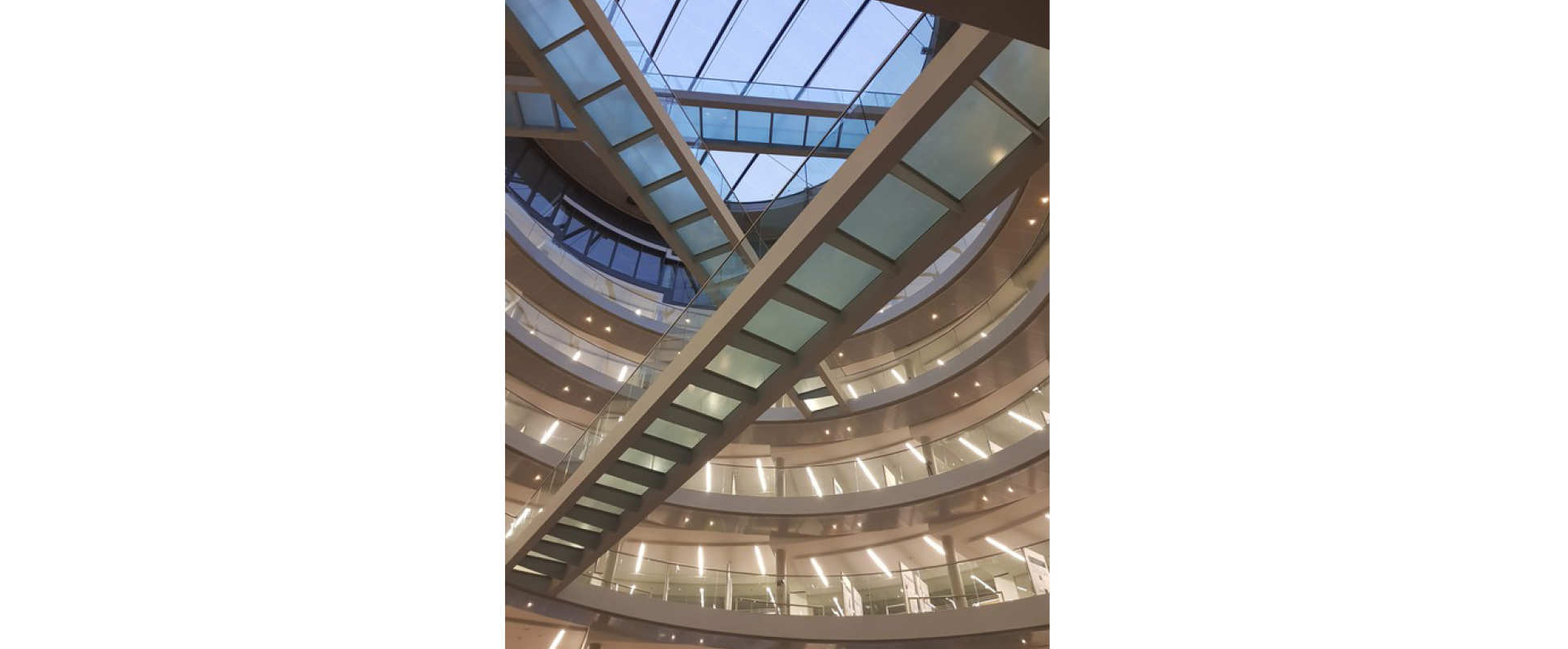 I am highly grateful for the funding from the NHLI Foundation Travel Award to allow me to attend the EMBL Conference on Transcription and Chromatin at Europe’s flagship molecular biology laboratory at EMBL in Heidelberg.
I am highly grateful for the funding from the NHLI Foundation Travel Award to allow me to attend the EMBL Conference on Transcription and Chromatin at Europe’s flagship molecular biology laboratory at EMBL in Heidelberg.
This is one of, if not the, most renowned meetings on transcriptional regulation and chromatin organisation held biannually and this year’s meeting was beyond my expectations. The meeting was attended to full capacity with around 500 scientists from all across Europe, United States and Australia. The meeting is held in the elaborate EMBL Advanced Training Centre made distinct by its DNA double helix inspired stairway. The four days comprised of a packed programme of talks, poster sessions and networking opportunities.
The breadth of research spanned a vast array of fields including cell biology, biochemistry, bioinformatics and structural biology. All these approaches are targeting the common goal of deciphering the process of transcriptional regulation in an epigenetic context. This theme underlies the entirety of my PhD project which investigates the transcription factor ERG in endothelial cells of blood vessels and specifically its fundamental role in transcriptional regulation of gene expression that maintain a healthy endothelial cell. I presented my research in a poster and gained positive feedback that has given me new avenues for driving my project further.
There were many highlights from the meeting, including those relevant to my research. Of note, Dr Charles Roberts from St. Jude Children's Research Hospital reported his findings regarding the SWI/SNF (BAF) complex and showed changes in histone modifications and co-factor recruitment to enhancers in the genome akin to a number of my findings. This has made me consider SWI/SNF as a potential player to further investigate in the context of cardiovascular disease. Another interesting and unpublished finding presented by Professor Ellen Furlong, from the host institute EMBL, was that enhancer-promoter contacts are intrinsically specific so that enhancers do not induce the expression of a gene from another promoter. Furthermore, the meeting showcased the scale of the latest cutting-edge techniques and to highlight just one was an electron microscopy method that allows 3D chromatin ultrastructure to be visualised called ChromEM tomography.
The conference had approximately 300 posters and three sessions to meet and speak to researchers. This was particularly valuable to explore the prospects for my future in research, especially as I am entering upon my final year of PhD. Indeed, it was the first conference I have been able to meet the scientists whose publications I have been citing for the last three years!
Attending this meeting has truly been one of the highlights of my PhD, especially to witness the current breakthroughs regarding our understanding of the genome. I have returned feeling more enthusiastic than ever about my project and my future in science. I once again greatly thank the NHLI Foundation for supporting my attendance to this exceptional meeting.
James Bolaji
American Thoracic Society 2018
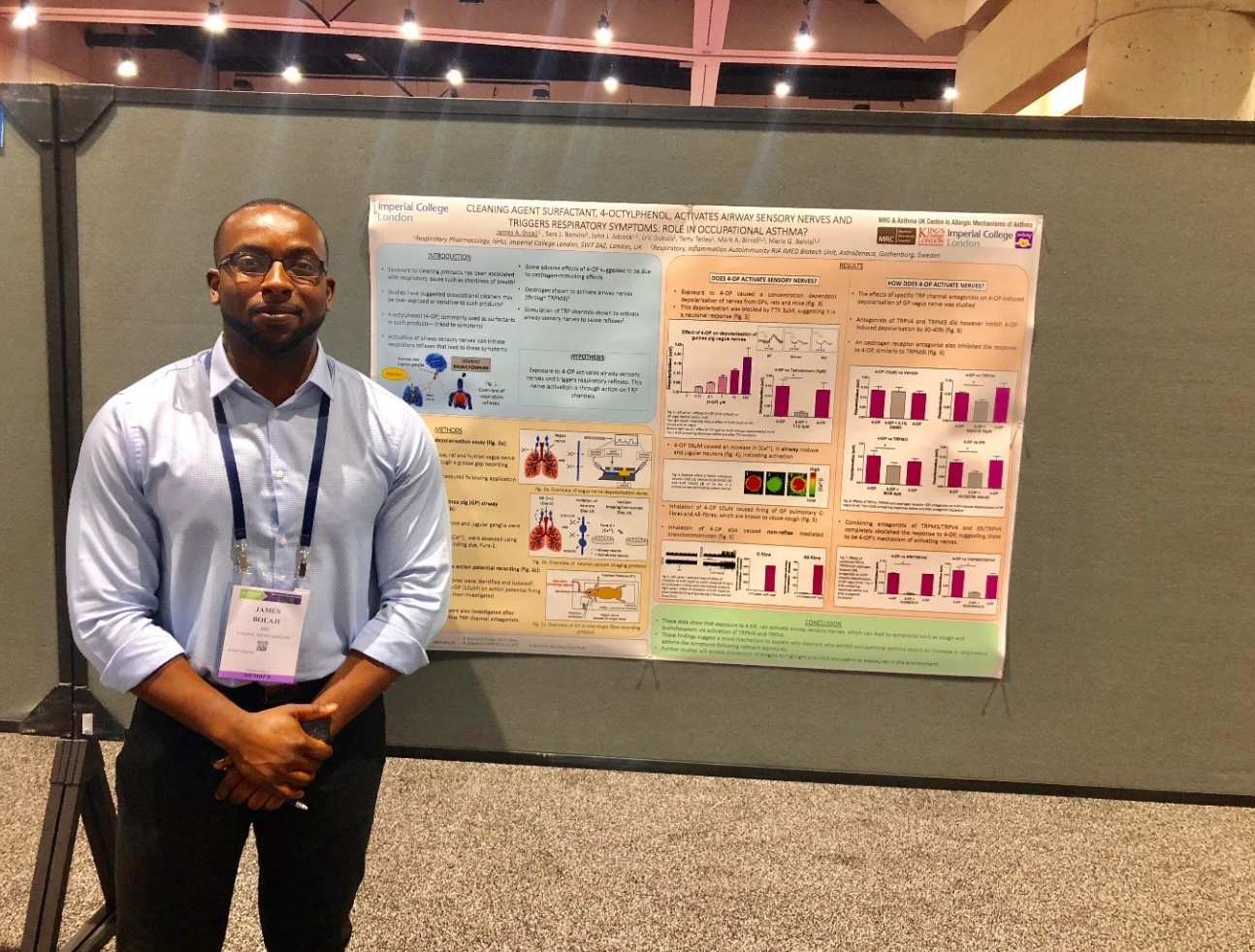 I’m extremely grateful to the NHLI foundation for their travel award that allowed me to attend this years’ American Thoracic Society (ATS) conference in San Diego.
I’m extremely grateful to the NHLI foundation for their travel award that allowed me to attend this years’ American Thoracic Society (ATS) conference in San Diego.
The ATS annual conference is a world-renowned meeting of both clinical and non-clinical professionals that provides an unparalleled international platform for attendees to present and discuss their research. It was a great opportunity to attend this conference as there is no equivalent respiratory meeting in the UK that can provide such an invaluable opportunity to present to, and hear from, experts from across the world, whom I would not otherwise have had the opportunity to speak to.
I presented some of the research from my PhD in the form of a thematic poster. My poster focused on environmental pollution and occupational asthma which are “hot topics” in respiratory research at the moment. Presenting at this conference not only allowed me to contribute to the wider scientific community, but also allowed me to gain novel insights and new ideas that can help further my own research.
Although my main research interest lies in environmental pollution as an asthma trigger, attending the ATS allowed me to attend many sessions that looked more broadly at other aspects of asthma. I was happy to discover newer trends of research, such as investigation into biomass fuels for their impact on asthma. One poster I particularly liked was an elegantly designed study by a group from India that looked at how the particles in biomass cook stoves can be toxic when inhaled. It was interesting to see that indoor air pollution is becoming just as important to look at as outdoor air pollution, and has given me more ideas about new pollutants I can look at in my experimental systems.
As it was also my first time attending ATS, I got to know a bit more about the structure in the society and signed up to an “assembly” (smaller society within the society) that specifically focuses on the environment and its contribution to lung disease. Attending the assembly meeting put me in touch with some of the major scientists in this area and speaking with them gave some valuable feedback for my research.
As a final year PhD student, being at this conference gave me a chance for networking with other attendees and this was helpful to set up and discuss collaborative work with colleagues I wouldn’t normally see. This environment was also quite useful for looking for post-PhD career prospects.
Overall, the conference was jam-packed with a variety of cutting edge science and data, but it was also a very enlightening and enjoyable experience. I’m extremely grateful to the NHLI foundation for this travel award that allowed me to go. Thank you!
Dr Ishita Marwah
Introduction to RNA-Seq data analysis course - Cambridge University
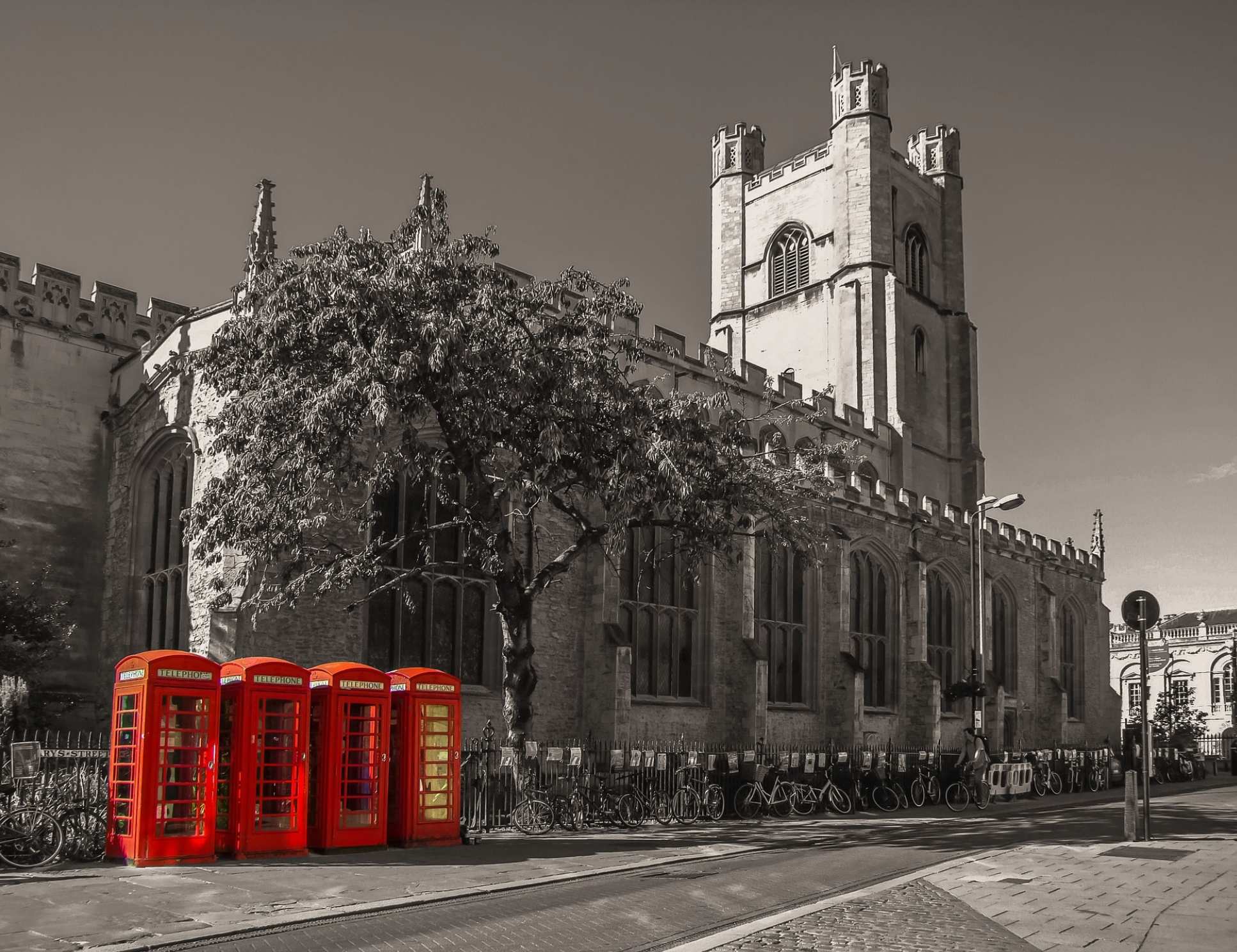
I would like to thank the NHLI Foundation for providing me with an opportunity to attend a course on RNA sequencing (RNA-Seq) data analysis at the University of Cambridge.
My PhD project investigates lung-based transcriptomic signatures of immune control (or the loss of it) across the tuberculosis (TB) exposure-infection spectrum. Having spent the first two years of my PhD focusing on study participant recruitment and optimisation of protocols for processing potentially infectious TB samples in the Biosafety Level 3 laboratory, I have now begun to generate large amounts of RNA-Seq data from my samples. Coming from a medical background, I have been especially intimidated by this big data and the complicated analysis required to make sense of it, not to mention the mysterious code languages spoken by data scientists! My trip to Cambridge to attend the 3-day Introduction to RNA-Seq data analysis course has helped me feel more confident about mining data from my very interesting study participants to make sense of TB pathogenesis.
The course was held in the Bioinformatics Training Room (50 high-performance computers and a bunch of ready-to-help experienced data analysts in one room!) at the Downing Site of the University of Cambridge, and run in two parts. The first one-and-a-half days covered quality checking and manipulating raw data from Illumina sequencers for ultimate alignment to reference genomes followed by transcriptome assembly and annotation; we performed these steps hands-on and used a variety of programs for alignment (HISAT2, STAR and Salmon), while focusing on StringTie for transcript expression. The other half of the course involved the study of linear models and statistics for, and the annotation and visualisation of, differential expression, finished off by an introduction to geneset analysis and gene ontology testing. These two course parts were previously run as separate courses and this was the first time they were run together- rightly so, as they formed a neat little package and walked one through RNA-Seq analysis right from raw data to biological interpretation.
One of the highlights of the course for me was that the instructors were drawn from a variety of backgrounds and institutes across Cambridge, including the Wellcome Sanger Institute and the Cancer Research UK Cambridge Institute. This meant they had a variety of research interests and ranged from wet-lab biologists to pure statisticians- so there was always someone in the room that spoke the same ‘language’ as you, which I consider really essential when talking bioinformatics!
Requirements for the course include a basic knowledge of R and the UNIX command line (which can be learnt online through tutorials). The next edition is being run in September 2018, and I recommend anyone interested in RNA-Seq data analysis go for it. The group also run a variety of other bioinformatics training courses, both for beginners and advanced participants, so if RNA-Seq is not your cup of tea, there are plenty other options to explore!
Read more about Ishita and her research
Anne-Marie Russell
American Thoracic Society 2018
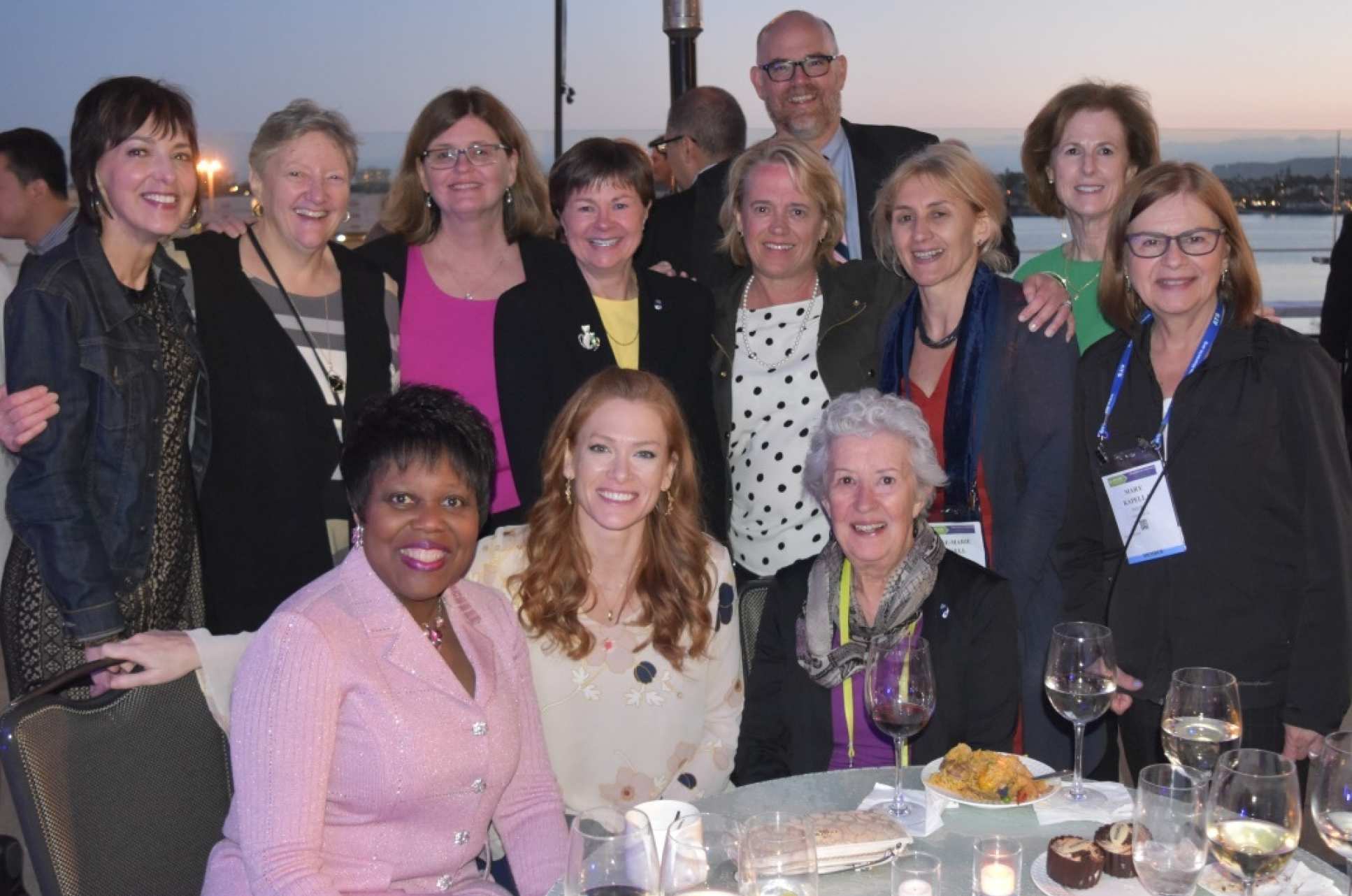
I am immensely grateful to the NHLI foundation for their support which enabled me to attend the American Thoracic Society (ATS) International meeting held on May 18 - 23, 2018 in San Diego, USA.
The ATS International Conference is the largest gathering of pulmonary, critical care, and sleep professionals. It supports early stage researchers as well as leading experts in the field. Attending the conference afforded me the opportunity to present my doctoral work on the preliminary testing of the Idiopathic Pulmonary Fibrosis (IPF) Patient Reported Outcome Measure (PROM) in a Rapid Abstract Poster Discussion Session. The IPF-PROM has 12 items and is a reliable and valid measure for use in populations with IPF. The presentation generated much discussion and has led to new joint working with Research Assistant Professor of Medicine, Kathy Lindell at the Simmons Centre for Interstitial Lung Disease, University of Pittsburgh and further translation work of the IPF PROM with Brenda Varela of Hospital Alemán, Buenos Aires.
Work on an existing collaboration with patient Mpower Ltd was also presented in a thematic poster session: Patient Reported monitoring of symptoms and spirometry via the patientMpower platform in IPF. Patients using the app found electronic completion of the IPF-PROM acceptable and feasible in addition to home spirometry monitoring.
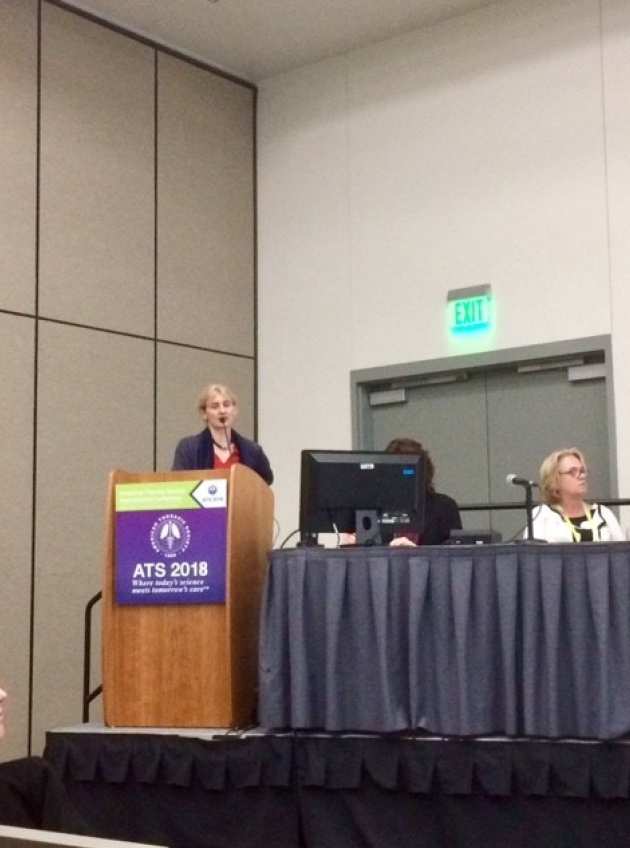
I was privileged to participate as a mentor in the ATS nursing community this year and support emerging clinical academics. I was also appointed as the programme chair elect to the Nursing Assembly giving me the opportunity to shape content of the ATS interdisciplinary programme over the next two years. Lots of work to do but we also had fun. International collaborative working is exceedingly important in rarer lung conditions such as IPF, particularly in symptom management and palliative care.
I had the opportunity to present on the transitions across the continuum of care in interstitial lung disease in a symposium session ‘Yes, your pulmonary patient is ready for palliative care’. This was a lively symposium and led to inter-disciplinary discussions affording insights into shared practice that will ultimately improve patient care. Given that the clinical academic nursing community is so small opportunities to network face to face are rare and therefore of great value.
ATS is a highlight in the academic calendar for both the nursing and the Interstitial Lung Disease (ILD) communities, enabling us to share research ideas from around the world and recalibrate our priorities. It is refreshing and inspiring to have the opportunity catch up with international colleagues to engage in enriching conversations and shape new collaborations.
Thank you to the NHLI Foundation Trustees for this NHLI Travel Award and supporting my clinical academic career development in the international community.
Read more about Anne-Marie and her research
Dr Michael Wortley
American Thoracic Society 2018

I am very grateful to the NHLI foundation for their travel grant which allowed me to attend the ATS conference this year in San Diego.
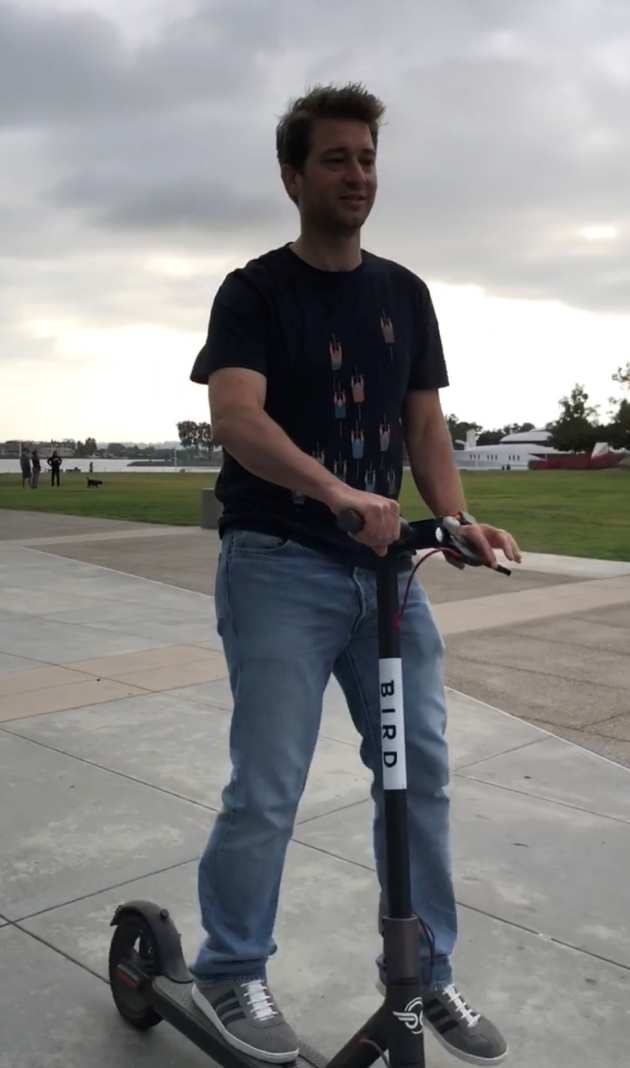 The ATS conference is one of the most important meetings of the year for respiratory scientists and clinicians, with over 16000 delegates attending, including leaders in various fields within respiratory science and medicine. It is also a great place to meet up with colleagues from across the world, to catch up with them and see their latest work, exchange ideas and get feedback on my work.
The ATS conference is one of the most important meetings of the year for respiratory scientists and clinicians, with over 16000 delegates attending, including leaders in various fields within respiratory science and medicine. It is also a great place to meet up with colleagues from across the world, to catch up with them and see their latest work, exchange ideas and get feedback on my work.
The NHLI travel award enabled me to present my work investigating the direct activation of sensory nerves by bacteria in a session on bacterial viral and fungal lung infections. I had some great conversations about the work with other conference-goers and received positive feedback from the chairs of the session.
As at other ATS conferences I have attended, there was loads of interesting cutting edge science on display. I attended as many oral and poster presentations as possible, picking up useful information and hearing about the latest data pertinent to my work in the area of sensory nerves and cough in respiratory diseases such as asthma, COPD (chronic obstructive pulmonary disease) and Idiopathic Pulmonary Firbrosis (IPF). For example, of particular interest to me were presentations on air pollution and its adverse effects on the lungs. This included a talk by Laura Paulin (Johns Hopkins University) examining the link between real-world air pollution exposure and respiratory symptoms such as cough and dyspnoea, finding a positive correlation between PM2.5 exposure and cough/sputum in COPD patients (from the SPIROMICS cohort). Colleagues in my group have previously shown a mechanism for diesel exhaust particulate to cause cough via activation of sensory nerves, and it is great to see clinical data showing a similar correlation between particulate air pollution and cough. And of course, it all adds to the weight of evidence in calling for cleaner air for us all!
I also got to see a variety of interesting talks and posters on a wide variety of topics, such as how oral contraceptives increase the lifetime risk of asthma, reports on the long-term efficacy and safety of thermal bronchoplasty as a therapy, a role for the ion channel TRPV4 in macrophages in allergic asthma, and how eosinophils can stimulate sensory nerve growth and how this might impact bronchoconstriction in asthma. Indeed, one of the good things about the ATS conference is that it always useful getting exposure to people in a variety of fields, giving me ideas and inspiration that I can bring home to my lab, from new new experimental methods and techniques to study aspects of respiratory diseases, to simply new ways to display data to better communicate my work in future.
The conference programme is packed, with many parallel oral and poster discussion sessions as well as thematic posters over lunch. Additionally the conference centre is quite large, so I certainly raised my daily step count trying to get to all the presentations I was interested in! I had been to San Diego once before (ATS 2014), and there is one change it was hard to miss; the bicycles and electric scooters available for hire by smartphone app dotted around everywhere. I managed to get a minute to test out the electric scooters, which were great fun, and useful to traverse the conference centre!
Overall attending this ATS was great fun, providing plenty of opportunities for me to learn, get inspired with new ideas, and catch up with colleagues from around the world. Thank you again to the NHLI foundation for helping to make it possible for me to attend!
Arianna Ferrini
10th Symposium on Biologic Scaffolds for Regenerative Medicine

It was truly an honour to be awarded the NHLI Travel Award to present my PhD work at the 10th Symposium on Biologic Scaffolds for Regenerative Medicine in Napa, California. This highly interdisciplinary symposium is held bi-annually in the beautiful location of Silverado Resort, surrounded by the world-famous vineyards of the Napa Valley, just an hour outside San Francisco. The format of the meeting included a series of presentations describing the potential benefits and risks associated with the use of biologic-derived scaffolds, time for networking and engaging discussions during the poster session.
The meeting started with an extremely inspiring keynote lecture delivered by Professor Mina Bissel from the Lawrence Berkley National Laboratory. For a taste of her presentation I highly recommend her TED Talk which you can watch online. Day two started in earnest with a welcome from the Scientific Director and organiser of the meeting, Professor Stephen F. Badylak, who is the deputy director of the McGowan Institute for Regenerative Medicine at the University of Pittsburgh and whom I was really excited to meet. I learnt from every session and from the mix of basic science and clinical studies presentations. However one of the talks that I particularly enjoyed was the one from Professor Christopher Breuer from The Ohio State University College of Medicine, who gave an interesting update on his team’s work on the development and the translation of tissue engineered vascular grafts for congenital heart surgery. Similarily Professor Karen Christman from the University of San Diego who presented her results on using injectable extracellular-matrix derived hydrogel for treating cardiovascular diseases was particularly enjoyable. At the end of day two, together with a wine reception to let us taste the local specialities, there was an interesting poster session, where I presented my work entitled “Acidity in the heart: strategies to harness it for therapeutic intervention” and I got some useful feedback, which I will treasure in preparation for publication.
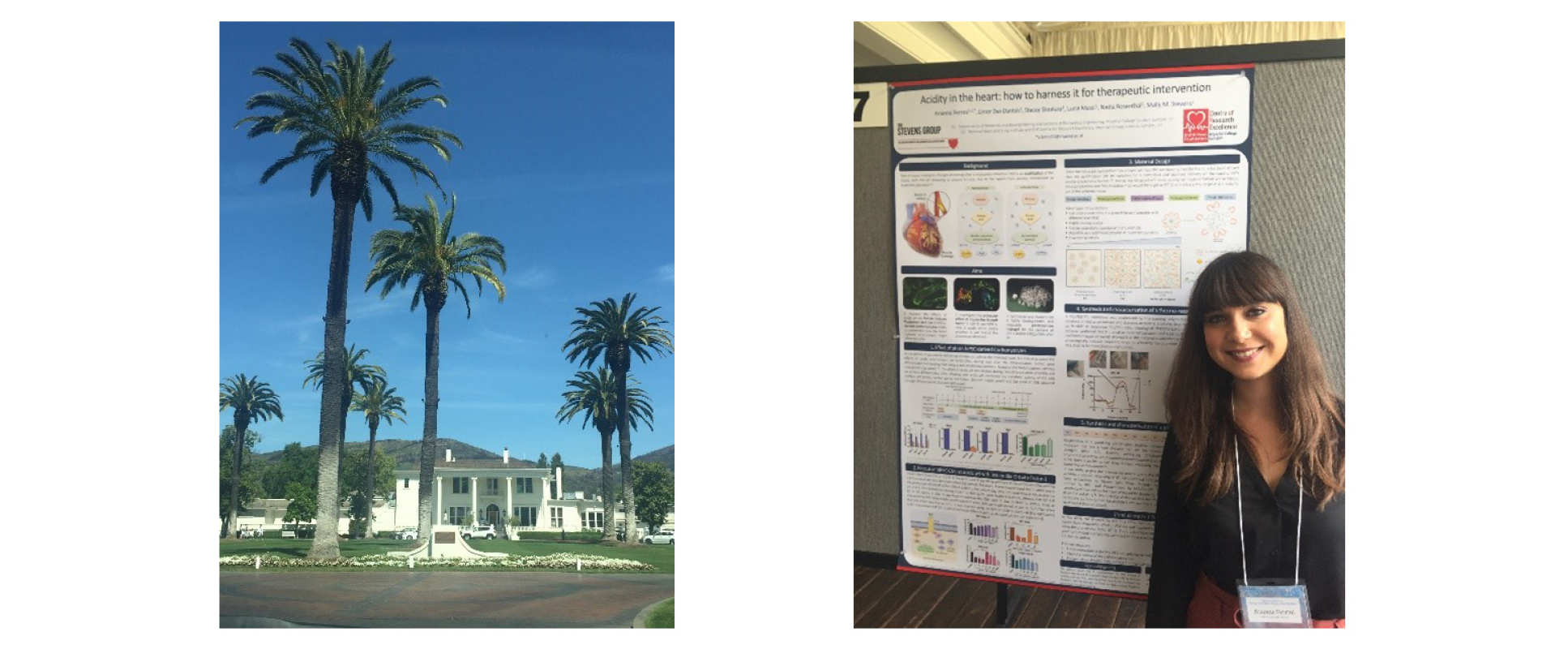 On day three, the plenary session was delivered by Professor Alberto Mantovani from Humanitas University in Milan, a world-famous immunologist who gave a comprehensive overview of the interplay between macrophages and humoral innate immunity in tissue repair and remodelling. Amongst others, talks that I found particularly interesting were given by Professor Lauren Black, Dr Harald Ott and Dr Helen Berry, who are all studying tissue engineered strategies to tackle cardiovascular diseases.
On day three, the plenary session was delivered by Professor Alberto Mantovani from Humanitas University in Milan, a world-famous immunologist who gave a comprehensive overview of the interplay between macrophages and humoral innate immunity in tissue repair and remodelling. Amongst others, talks that I found particularly interesting were given by Professor Lauren Black, Dr Harald Ott and Dr Helen Berry, who are all studying tissue engineered strategies to tackle cardiovascular diseases.
An aspect that I particularly enjoyed about this symposium was its interdisciplinary nature, with topics ranging from the basic science of cell-matrix interaction to preclinical and clinical studies in different fields of application, such as cardiovascular diseases or cartilage and bone regeneration. Moreover, I particularly enjoyed the practical perspective given by many of the speakers who were clinicians, and the small format of the meeting (around 100-110 attendees) that maximised interaction and networking.
As a final year PhD student, attending this conference was a great opportunity not only to present my work and receive valuable feedback about it, but also to meet the scientists doing cutting-edge discoveries in the exciting and fast developing fields of tissue engineering and regenerative medicine. Since this is the topic that really fascinates me and in which I intend to continue my academic career, this conference also gave me a precious opportunity to establish a network for my future and I am deeply grateful to NHLI for covering my expenses with the NHLI Travel Award.
Navneet Bhogal
European Society of Cardiology’s Winter Heart Failure Meeting 2018
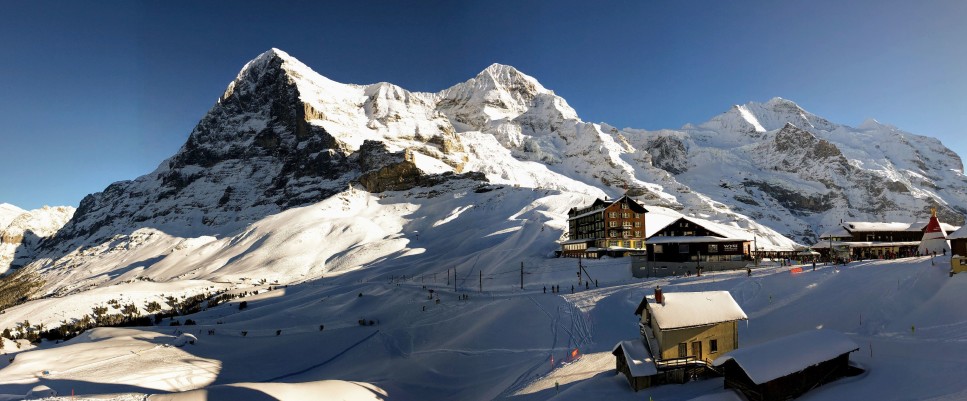
I was very happy when I received the news that the NHLI were funding my attendance to the European Society of Cardiology’s Winter Heart Failure Meeting 2018. This particular conference has been running for 10 years, and takes place in Les Diablerets in Switzerland. It’s a small conference, consisting of approximately 200 people, many of whom are internationally recognised Professors. The conference provides both scientists and clinicians, with an opportunity to learn about the latest published and unpublished discoveries.
The focus of my PhD is atrial arrhythmias, and in particular the roles of Caveolin-3 and Popeye-domain containing genes. Attending this conference was great as it gave me the chance to discuss and present my work to many Professors. Given that Popeye-domain containing genes are not well studied, it allowed me to present the importance of this gene by showing the abnormalities that occur when genetically ablated. In addition, I was able to gain some feedback on my work in preparation for publication.
The conference was well organised to ensure people could attend as many talks as possible. Oral presentations were generally an opportunity for scientists to present unpublished work in various areas including: ‘The hidden secrets of longevity’, ‘From RNA to Proteins- New translational control mechanisms’ and my particular favourite ‘Insights into nero-hormonal-inflammatory activation in heart failure’. Special speakers included David Kass who spoke about “cGMP/PKG Signaling in the Failing Heart: New Targets and New Therapy Options” and Denise Hilfiker-Kleiner who conducted the Brutsaert lecture and spoke about ‘The story of Peripartum Cardiomyopathy: How it all began, where we are and what could be?’. This conference also presents an award for the highest ranking abstract - Guido Tarone Award. It was awarded to Maarten van den Hoogenhof for "RBM20 mutations induce an arrhythmogenic dilated cardiomyopathy related to disturbed calcium handling”. I also got a chance to see exciting data presented by Burns Blaxall, Dobromir Dobrev, and Mika Delphine, all of which people whose work I follow. Discussions after presentations brought together a lot of the science to better understand the way in which heart failure is being understood.
As well as the opportunity to learn, network and connect with laboratories abroad, attending this conference has given me automatic acceptance to present at the Heart Failure 2018 meeting in Austria later in the year. As a final year PhD student the experience and opportunity of visiting an elite conference like this, where you are able to sit to discuss your work as well as socialise with some of the best scientists in your area is invaluable to accelerating ones career.
I am very grateful to the NHLI for allowing me the opportunity to attend this conference and to represent Imperial College London.
Dr Chloe Bloom
British Thoracic Society Winter Meeting 2017
--tojpeg_1517397607393_x2.jpg)
I would like to thank the NHLI Foundation for allowing me to attend the 2017 British Thoracic Society (BTS) Winter Meeting in London, UK.
The annual BTS Winter Meeting is one of the largest single respiratory society conferences in Europe. The meeting promotes dissemination of the very best scientific and therapeutic advances in lung disease and lung health from the UK and worldwide. As a respiratory physician I have attended this conference previously, but this time I was attending as a clinical academic. I recently changed career path to focus on respiratory epidemiology, in particular the use of large data in the form of electronic healthcare records. This conference gave me an opportunity to hear an array of clinical and epidemiological talks, including a focus on European mortality studies, as well as symposiums such as Sir Michael Marmot talking on ‘Social justice and the lungs’.
Attending this meeting was also of great value to my research and allowed me to showcase my latest work with two spoken presentations on my UK asthma study and COPD palliative care study. It also provided the opportunity to discuss my current findings, establish collaborative networks and consider my academic career with senior academics that I would not normally get a chance to confer with. Furthermore, the press coverage through attending the conference resulted in some media work and then dissemination of my findings beyond scientific publication to GPs (through GP magazine, Pulse), nurses (through Nursing Times) and general public (through The Evening Standard and Daily Express).
Attendance at the meeting was a great experience and I am very grateful to the NHLI Trustees for the award of an NHLI Foundation Postdoctoral travel award that allowed me to attend this meeting.
Read more about Chloe and her research
Dr Peter Wright
Scientific Sessions of American Heart Association 2017
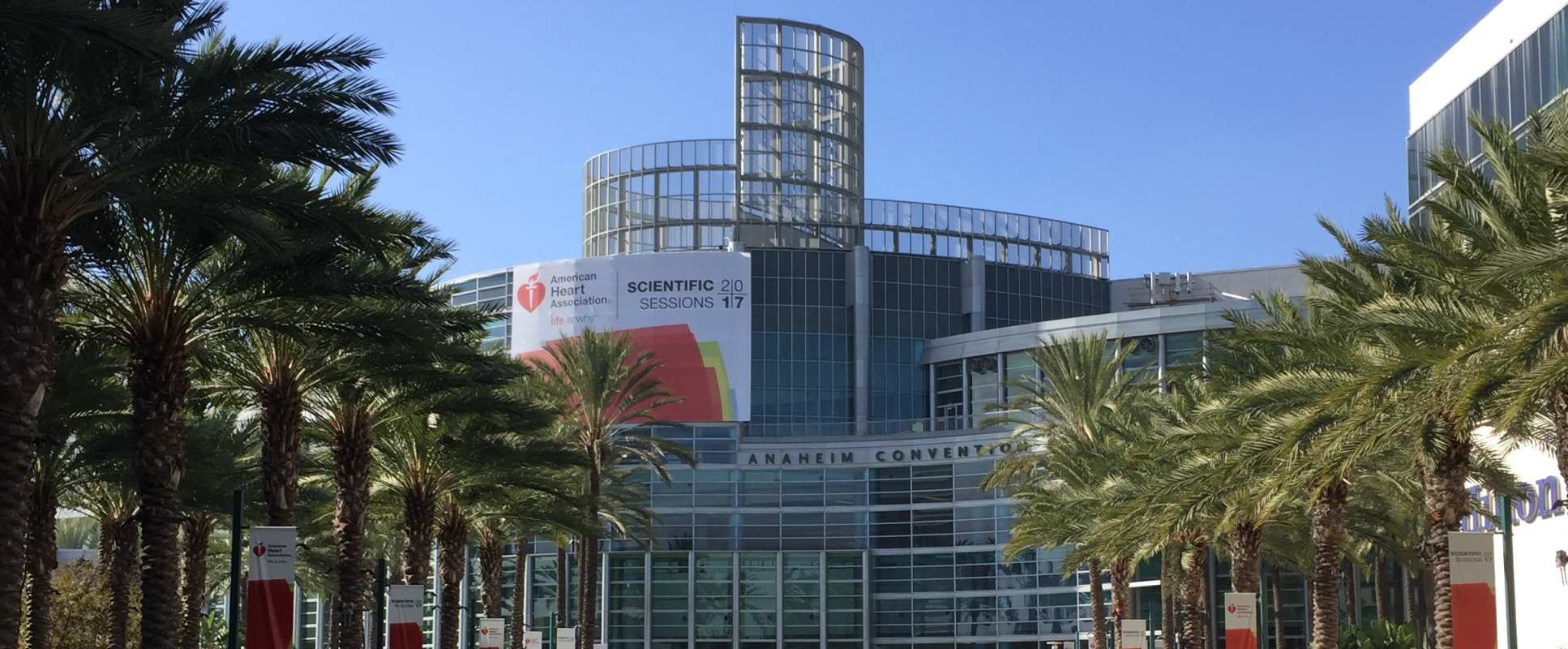
I am deeply grateful to the NHLI for funding my attendance at the Scientific Sessions of American Heart Association this year. The conference took place at the Anaheim convention centre and was attended by nearly 18,000 clinicians and scientists from over 100 different countries. The sessions comprise poster and oral sessions. There are also a multitude of demonstrations and a vast technology exposition with delegations from many global scientific equipment and pharmaceutical manufacturers.
My research is focused on the effects of mechanical load upon cardiomyocyte membrane signalling microdomains. Mechanical unloading is now a significant therapeutic route for patients with heart failure. I attended this conference specifically to present my new data to the widest audience possible. The US cardiovascular science community generally show up at this meeting en masse so it represents a great networking opportunity. I presented a poster entitled ‘Mechanical Unloading Suppresses Localized Beta-2 Adrenoceptor and L-type Calcium Channel Function in Healthy and Failing Cardiomyocytes‘ in the Cardiac, Development, Structure and Function session. I was also co-author on another poster presented by a clinical visitor whose project I supervised. During the conference I was able to meet with various collaborators of my research group including Professor Tim Kamp (University of Wisconsin-Madison) with whom we are submitting a paper for publication.
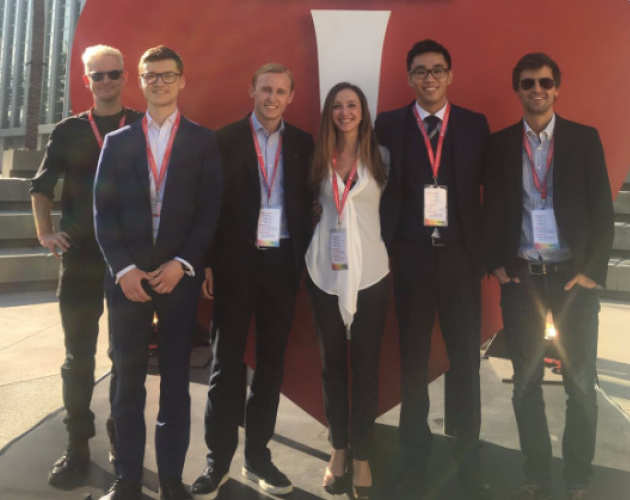 I attended many illuminating sessions on novel science regarding various forms of heart failure. I heard new findings about microRNAs and their role in cardiomyocyte differentiation. There were also symposia concerning new types of left ventricular assist devices (LVAD) and their employment in the clinic. The SS of the AHA is a great conference to attend if you have a clinical background but also if you are from a basic science background and would like to find out about the current trends in cardiovascular science. After all with our focus on translational science as an institute this could be considered to be an effective market research exercise. As an example, globally, clinical researchers appear to have changed their minds regarding the clinical outcome of sufferers of takotsubo cardiomyopathy. This is a relatively rare form of acute heart failure. When I began my career it was believed to be reversible with little morbidity and mortality, however it is now recognised as a disorder with severe ramifications for the patient's quality of life and a poor general prognosis. It was interesting to see this synthesised and echoed by groups from the US, Japan and Australia. For researchers interested in this disorder this also changes the trajectory of their research somewhat.
I attended many illuminating sessions on novel science regarding various forms of heart failure. I heard new findings about microRNAs and their role in cardiomyocyte differentiation. There were also symposia concerning new types of left ventricular assist devices (LVAD) and their employment in the clinic. The SS of the AHA is a great conference to attend if you have a clinical background but also if you are from a basic science background and would like to find out about the current trends in cardiovascular science. After all with our focus on translational science as an institute this could be considered to be an effective market research exercise. As an example, globally, clinical researchers appear to have changed their minds regarding the clinical outcome of sufferers of takotsubo cardiomyopathy. This is a relatively rare form of acute heart failure. When I began my career it was believed to be reversible with little morbidity and mortality, however it is now recognised as a disorder with severe ramifications for the patient's quality of life and a poor general prognosis. It was interesting to see this synthesised and echoed by groups from the US, Japan and Australia. For researchers interested in this disorder this also changes the trajectory of their research somewhat.
Attending this conference was made possible by the NHLI postdoctoral travel grant as I am currently working on a contract extension awaiting my next career move and as a result had no other funds to support me.
Read more about Peter and his research
Ann Morgan
Annual Congress of the European Respiratory Society (ERS)
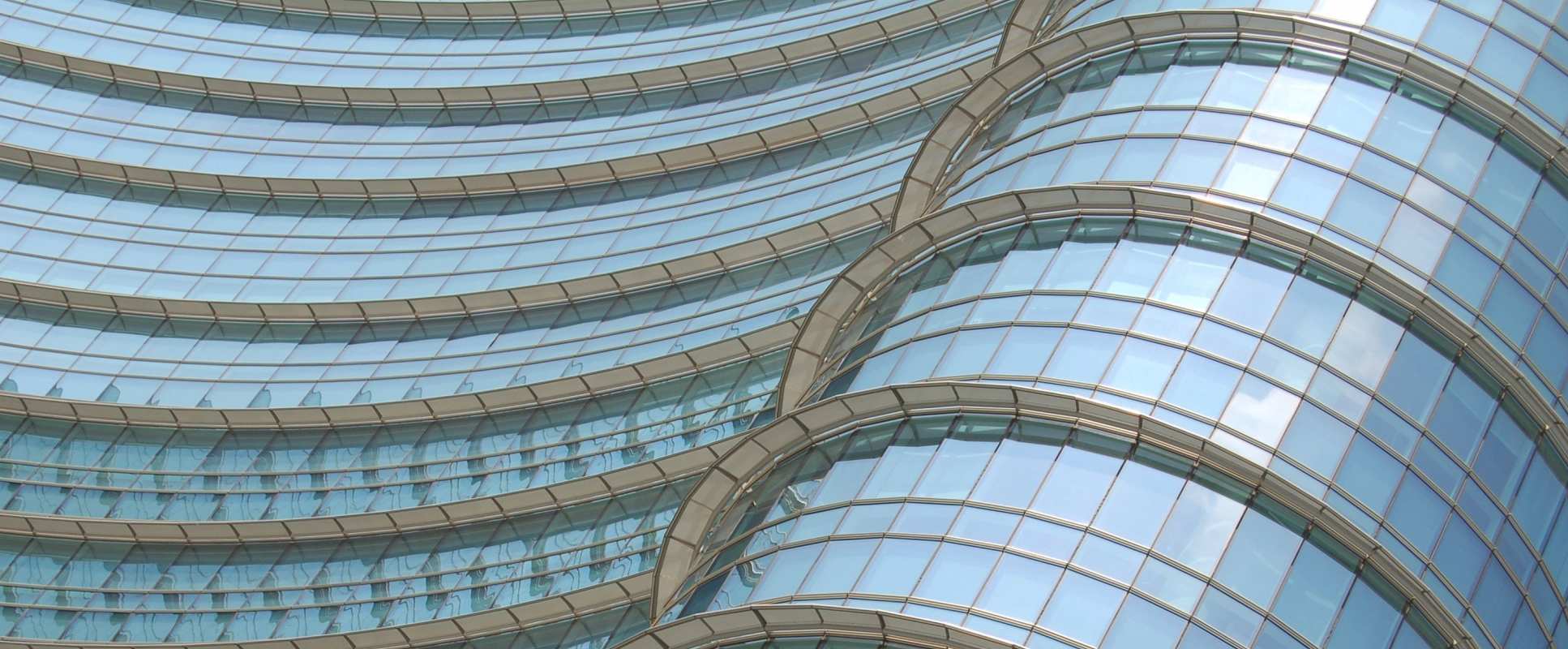
I am extremely grateful to the NHLI for their award of a travel grant which allowed me to attend this year’s ERS meeting in Milan. As on previous occasions (I attended the ERS in both 2015 and 2016), I found the meeting to be extremely informative and pertinent to my current area of research. At this year’s congress I presented a part of my PhD work on the epidemiology of cardiovascular disease comorbidities in COPD in a poster discussion session; I received kind words of support for this work from both chairs and enjoyed the open discussion of both my work and that of fellow presenters that took place during the session.
While I enjoyed and learnt much from the mix of sessions I attended over the course of meeting, there were two (The Latest Gold update; and COPD and Comorbid Vascular Diseases) that made a more lasting impression and served to cement my current understanding and thinking about COPD as a disease. While I have only been engaged in COPD research since the start of my PhD, it is becoming increasingly apparent that even in this short time frame perceptions about this disease are changing. Traditionally viewed as a self-inflicted disease caused by smoking that is characterised by a rapid decline in lung function decline with age, COPD is increasingly being seen as the pulmonary component of a complex multi-organ pathological process that occurs in genetically-susceptible individuals exposed to a lifetime of stressors as they age.
This broader view of COPD places more emphasis on other potential causes of COPD, in particular, exposures to lung irritants in early life (e.g. from maternal smoking and air pollution). It also implies that there may well be a distinct group of individuals who develop COPD in late middle age, not as a result of rapid lung function decline (as previously assumed), but as a result of a more modest rate of decline in lung function – but because they started from a lower baseline, that is to say, a relatively low maximally-attained adult lung function – their albeit slower mid-life lung function loss still brings them to the same place, namely a diagnosis of COPD.
This alternative “path” to COPD was first proposed in a paper published in 2015. It was repeatedly referred to at ERS, in a variety of sessions, and appears to be informing many aspects of current COPD research. It is of interest to my research because it provides the basis for thinking differently about the relationship between COPD and comorbid cardiovascular disease. Until very recently considerable attention, and research effort, was devoted to understanding the part played by lung and systemic inflammation as a pathobiology mechanism that links cardiac and pulmonary disease. This hypothesis implies that COPD plays a causal role in the development of cardiovascular disease. For some individuals this very probably is the case. However, there is likely another group of individuals in whom the factors which contribute to their low adult lung function (e.g. low birth weight and early life environmental exposures) may very well also be contributing to an increased risk for cardiovascular disease in middle age. These individuals will develop both diseases concurrently.
What I took from this year’s ERS is that there is still much to learn about the multiplicity of mechanisms that link COPD and its extrapulmonary manifestations. Much more still needs to be done in order to translate this understanding into clinical guidance for treating the increasingly common complex comorbid elderly patient. What is emerging from the current debate is that COPD is a disease of considerable complexity and heterogeneity, both at the clinical and biological level. Yet this complexity and heterogeneity are not reflected in the current treatment for COPD. COPD is still diagnosed and treated according to simple clinical measures rather than on the basis of the underlying mechanisms. New approaches to improving the effectiveness of treatments based on systems biology and network medicine, eloquently proposed by Alvar Agusti, seem to be the way forward and perhaps will help to raise the profile of the importance of lung disease, which for too long has been a rather poor cousin to heart disease.
Dr Sarah Dwyer
The American Thoracic Society (ATS) annual conference
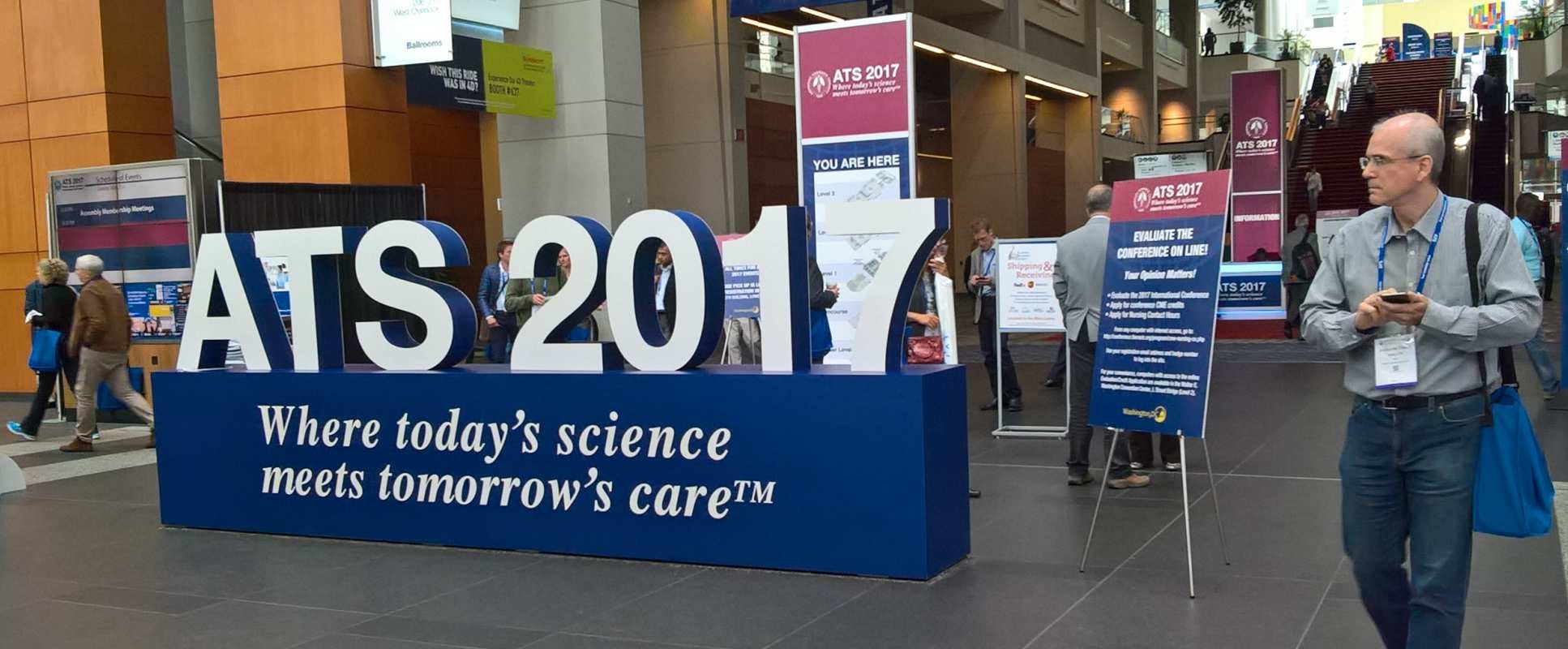
Firstly I would like to thank the NHLI Foundation for supporting my attendance at The American Thoracic Society (ATS) annual conference in May 2017. This year’s ATS, held in Washington D.C., included poster sessions and presentations on approximately 6,700 abstracts and case reports over the course of 5 days, with more than 16,000 Clinicians and researchers in attendance.
The focus of my research is the genetics and transcriptomics of asthma, which is perfectly suited to the conference program that included topics such as paediatric and adult pulmonary disease, allergy research, as well as methodology topics relevant to current and future projects such as RNA-Seq and single cell sequencing.
During the course of the conference I attended a number of excellent forums, including a symposium reviewing the evidence for and against early environment allergen exposure preventing asthma, and a session discussing the many uses of the excellent open access web based resource LungMAP. There were also a number of outstanding posters displayed including those presented during my rapid poster discussion session entitled “Omics in Lung Disease”. My presentation for the session described a gene expression study of childhood asthma and atopy. During the session, each presenting author was required to describe the main findings of their study for a maximum of 90 seconds followed by viewing time and a discussion session that stimulated many interesting talking points amongst presenters and delegates.
As a part time member of staff with two young children, I am often unable to attend conferences due to my childcare responsibilities. I am very grateful to the NHLI foundation for awarding me the Postdoctoral Travel Award, which included funding to cover the costs of childcare that allowed me to present my data at an international level and attend presentations by leaders within my field of research.
Dr Sara Bonvini
Young Investigators Meeting (YIM) in Smooth Muscle and Fibroblast Biology, and American Thoracic Society’s (ATS) annual meeting
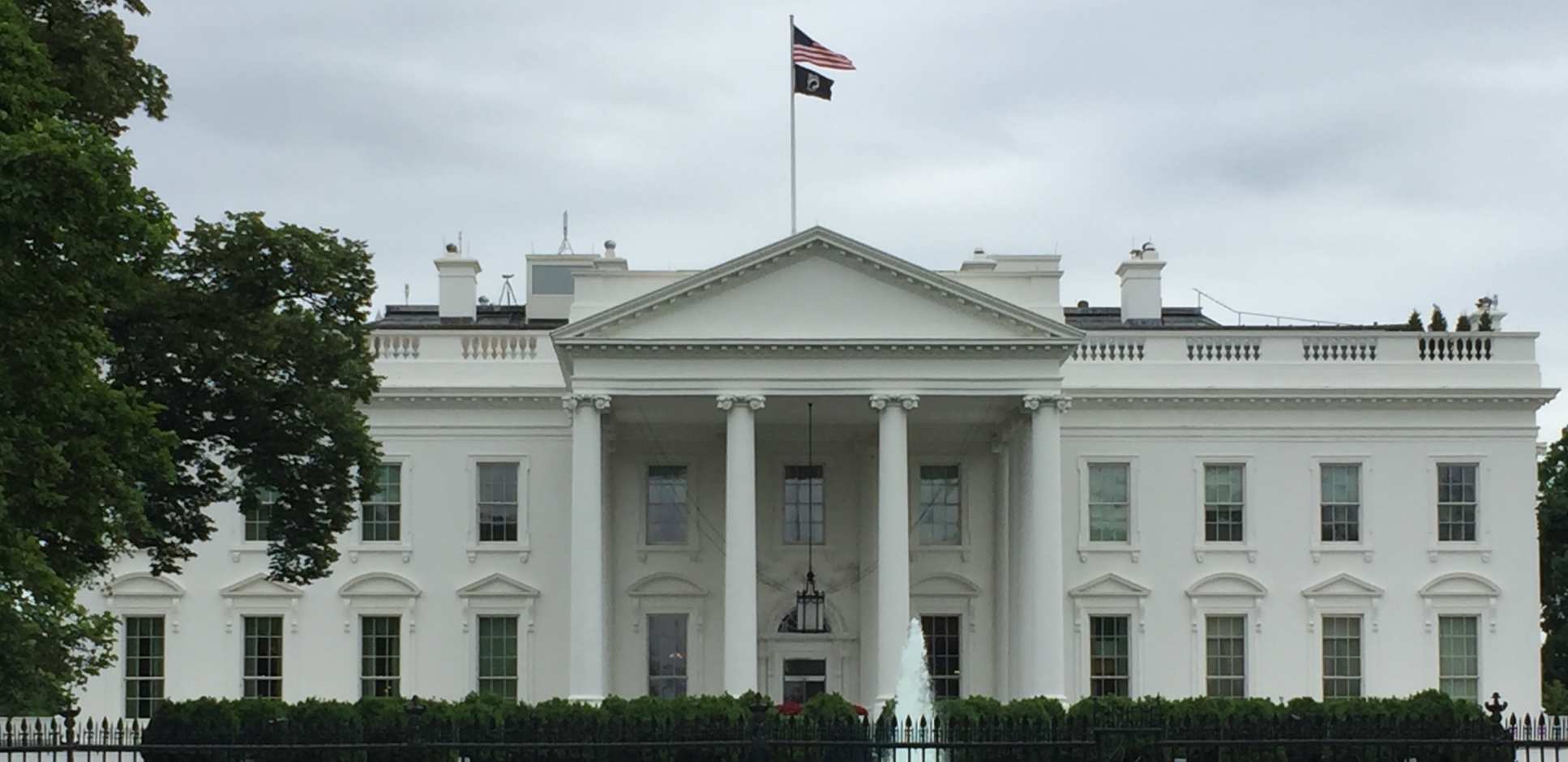
I would like to thank the NHLI foundation for supporting my attendance at the Young Investigators Meeting (YIM) in Smooth Muscle and Fibroblast Biology in Philadelphia and also the American Thoracic Society’s (ATS) annual meeting in Washington DC. My research focusses on mechanisms of smooth muscle contraction and airway nerve activation in airway disease, and as such these conferences were a perfect fit with my research interests. This was a great experience to experience two conferences where I could hear from leaders in the field, discuss my work and establish future collaborations.
 The YIM meeting in Philadelphia was a small focused conference where the work of young investigators was at the forefront. This allowed for a more informal atmosphere and future collaboration was strongly encouraged. In addition I was able to hear keynote talks from innovators in the smooth muscle field such as Dr Raymond Penn and Dr Deepak Deshpande. I had the opportunity to present my poster ‘Identification of endogenous, disease relevant, activators of TRPV4 in the airways’ and received some valuable feedback for future publications.
The YIM meeting in Philadelphia was a small focused conference where the work of young investigators was at the forefront. This allowed for a more informal atmosphere and future collaboration was strongly encouraged. In addition I was able to hear keynote talks from innovators in the smooth muscle field such as Dr Raymond Penn and Dr Deepak Deshpande. I had the opportunity to present my poster ‘Identification of endogenous, disease relevant, activators of TRPV4 in the airways’ and received some valuable feedback for future publications.
The ATS is one of the most important meetings of the year in respiratory science and covers a wide range of topics in clinical and basic science. It was a great opportunity to hear from the leaders in the field and attend symposia on cutting edge research including; ‘The exposome concept: understanding the impact on lung health and disease’ and I was also able to attend a sunrise seminar on the ion channel TRPV4, which is of particular interest in my current research. On the final day of the conference I presented my talk entitled ‘TRPM3: a regulator of airway sensory nerves and respiratory reflexes via distinct mechanisms’. This was a great experience, and my talk was well received with some thought provoking questions at the end.
Attendance at both meetings was a fantastic experience and of great value to my research and I would like to once again thank the NHLI foundation for supporting me.
Read more about Sara and her research
Mr Merlin Fair
International Society for Magnetic Resonance in Medicine (ISMRM)
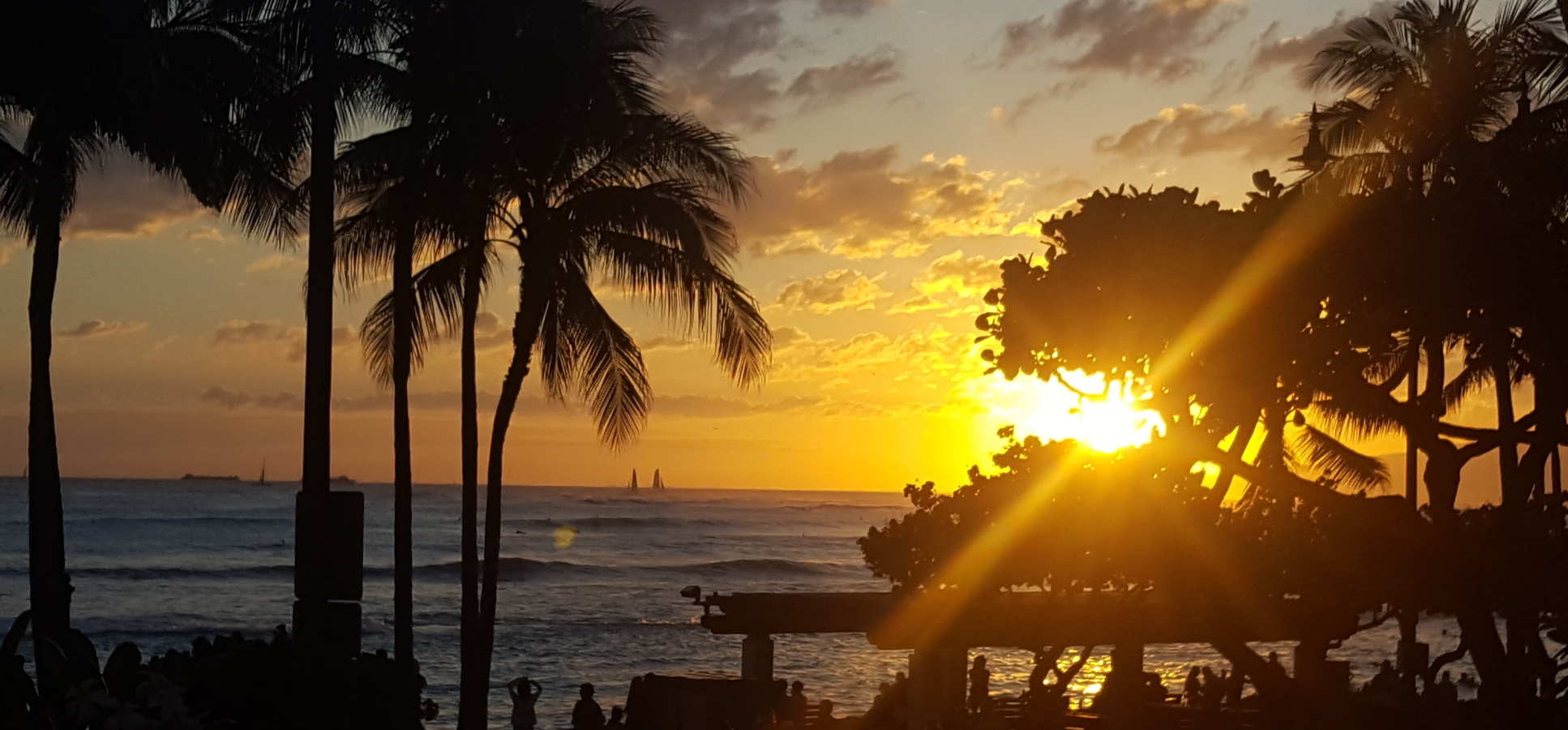
I am very grateful to have received a NHLI Foundation Postdoctoral Travel Award, allowing me to attend the 25th Annual Meeting of the International Society for Magnetic Resonance in Medicine (ISMRM) in Honolulu, USA.
The ISMRM meeting is one of the largest and most important annual conferences for technical developments within the Magnetic Resonance Imaging community, drawing scientists, engineers and clinicians from across the globe. This year was no exception, showcasing exceptional research from a wide range of scientific disciplines. The meeting, mixing educational and scientific talks of varying formats, was both highly informative as well as being an exciting experience for presenting.
With cardiovascular applications of MRI being the focus of the Royal Brompton group, it was particularly pleasing to see cardiac MRI given centre stage at the opening plenary. Professor Leon Axel (NYU) gave the ‘Lauterbur Lecture’, entitled “MRI as a window into cardiac function”, discussing the exciting advances in cardiac MRI, with particular focus on novel functional imaging strategies.
Highlighting the importance of multidisciplinary efforts, there was also the special “Gadolinium Deposition” plenary, organised in response to recent reports of Gadolinium (MRI contrast agent) deposition in the brain. Question marks have been raised over what this discovery means in terms of long term safety for differing types of contrast agent. Leading chemists, clinicians and physicists all presented their perspectives to help place any potential causes for concern in the proper scientific context and to advise on questions still needing to be explored.
Machine Learning was the ‘topic of the conference’, interwoven into traditional sessions and as part of a ‘late-breaking abstracts’ joint scientific-educational session. It is certainly currently the hot topic in this field and beyond, and it will very interesting to see the future developments that will arise from application of machine learning to medical imagaing.
With up to 12 parallel sessions running at any one time for 6 days almost every major topic of MRI was covered and cardiovascular applications were very well represented in all formats. Both my presentation in the ‘Myocardial Perfusion & Viability’ session and my e-poster presentation led to many positive discussions. Alongside increased understanding in a range of topics, I believe I have come away from this meeting with many new ideas and hopefully new useful contacts.
I would again like to thank the NHLI Foundation Postdoctoral Travel Award committee for supporting my attendance of this meeting.
Read more about Merlin and his research
Dr Jua Iwasaki
British Society for Immunlogy / Dutch Society for Immunology Annual Congress 2016
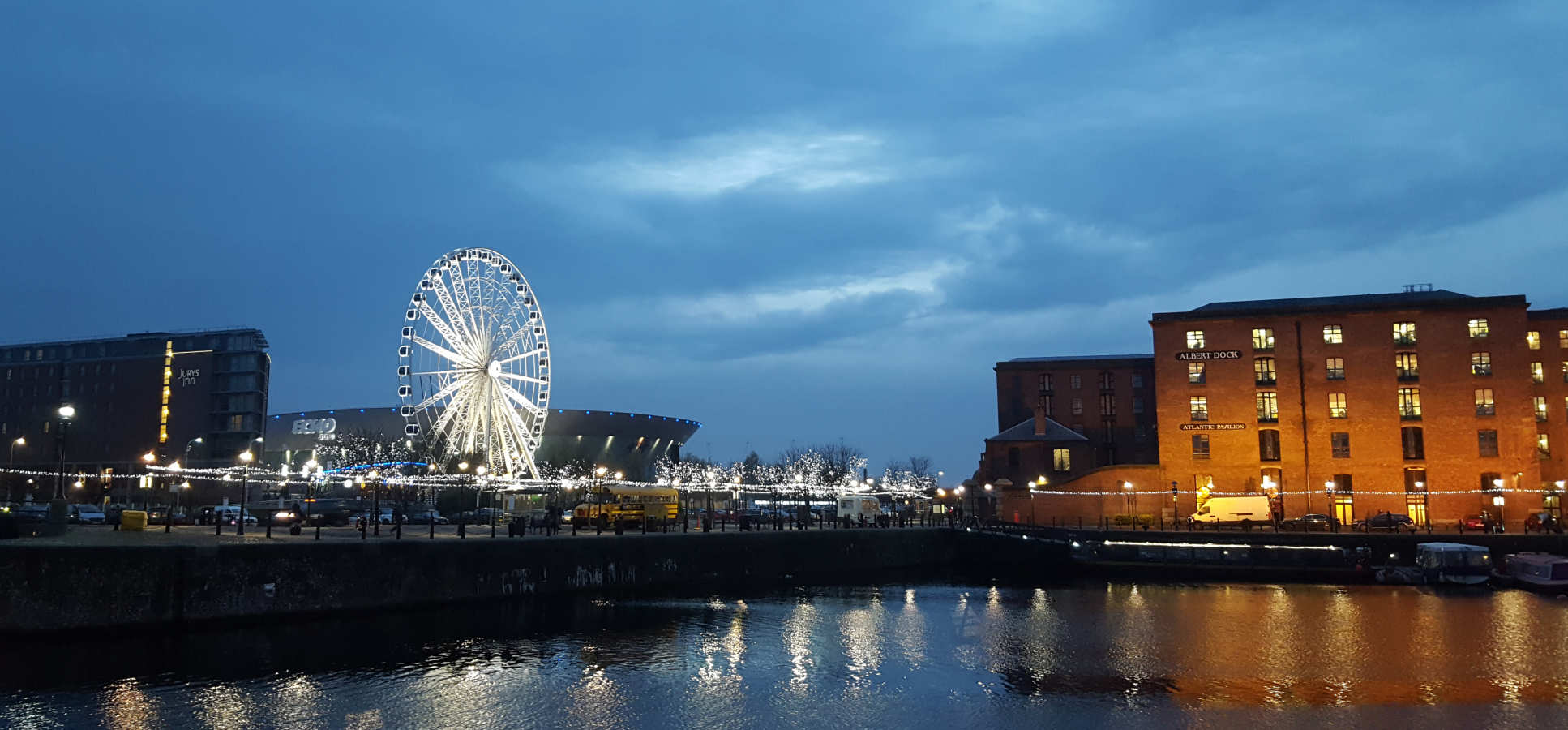
I would like to thank the NHLI Foundation for supporting my attendance at the BSI/NVVI Annual Congress. The travel award gave me the opportunity to present and discuss my work, network with other researchers and hear about the latest research in immunology, for which I am very grateful for.
The British Society for Immunology (BSI) is one of the oldest, largest, and most active immunology societies in the world and the annual congress this year was again held jointly with the Dutch Society for Immunology (NVVI) in Liverpool, UK. The meeting was held over four days and the programme covered key areas in the vast field of immunology. There were sessions on different immune cell types, diseases and organs, as well as vaccinations, immunity and metabolism, innate and adaptive immunity, tumour immunology, immunotherapy – and much more! My research is investigating the genes that are important in the immune response to an influenza virus infection so I found the sessions on “Lung Immunology: from asthma to infectious diseases” and “Shaping Immunity at the host-microbial interface” particularly interesting and useful.
The highlight of this meeting for me was hearing the keynote lecture by Professor Akiko Iwasaki from Yale University. Professor Iwasaki’s research is at the cutting edge of understanding how immunity is initiated and maintained against viruses at mucosal surfaces. She is a world leader in influenza virus research so I have always wanted to attend one of her presentations and she did not disappoint! Her lecture began by dissecting the innate recognition pathways that lead to viral control, as well as adaptive control using mouse models of influenza infection. She then went onto describe the impact of aging in innate viral defence using human samples to answer the question: Why are older adults more susceptible to flu? In addition to hearing about her research, it was also a great opportunity to hear about her background and career as I felt like I could relate to some of her experiences, particularly in regards to her upbringing in Japan, so it was overall a truly inspiring lecture.
I would like to once again thank the NHLI Foundation Postdoctoral Travel Award committee for supporting my trip to Liverpool to attend the meeting.
Dr Adam Byrne
19th International Colloquium on Lung and Airway Fibrosis
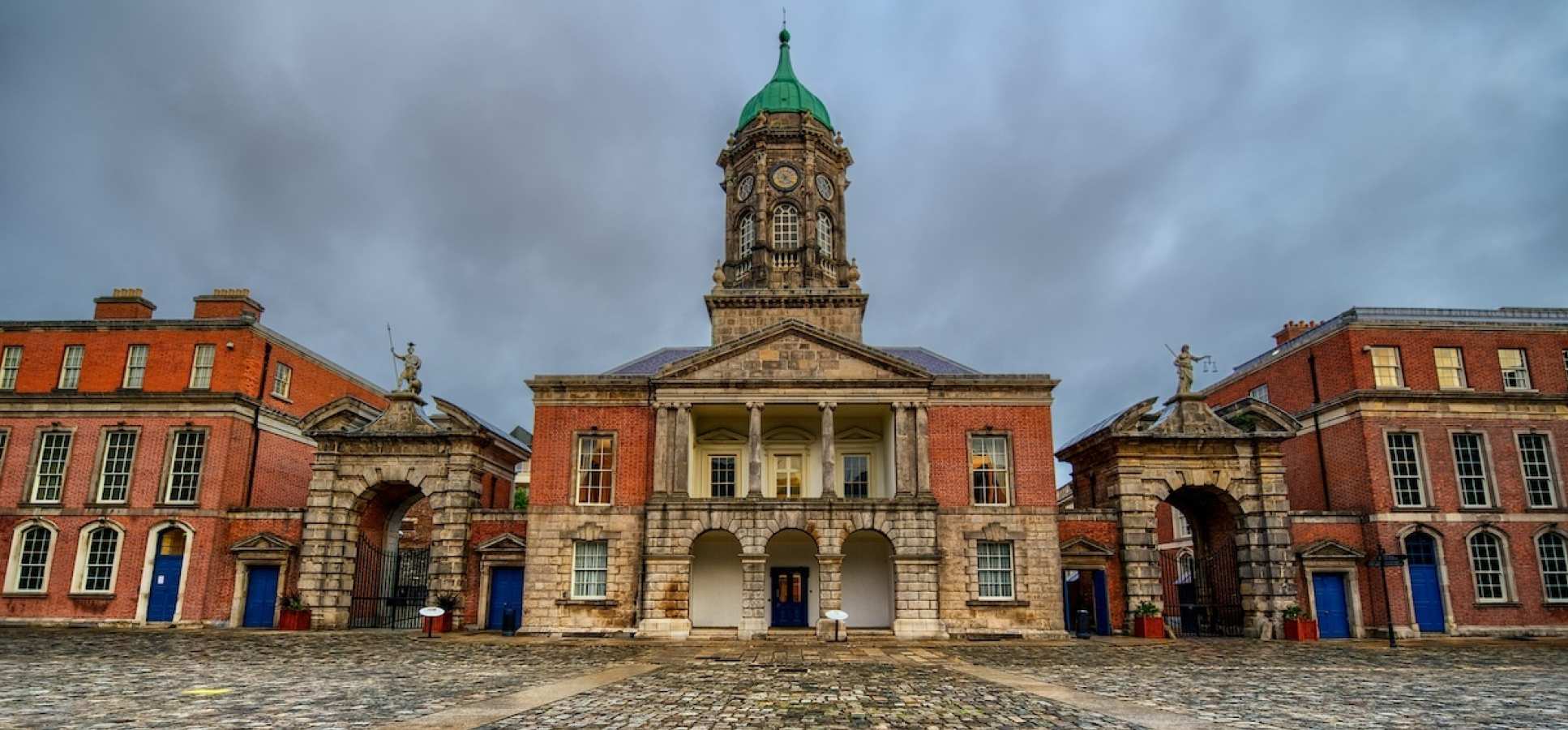
I wish to thank the NHLI Foundation for a travel award to attend the 19th International Colloquium on Lung and Airway Fibrosis (ICLAF) in Dublin Castle, Ireland. My research focuses on the cellular and molecular mechanisms involved in idiopathic pulmonary fibrosis and as such, the conference programme fitted perfectly with my research interests. The conference hosted world leaders in the field, and provided the opportunity for lively debate and discussions regarding the standardisation of idiopathic pulmonary fibrosis diagnosis and new frontiers for research.
A key theme of the conference was biomarker identification for disease stratification and the assessment candidate therapies. The first talk, by Han Collard, ‘Possible IPF: How we got in this mess and how we got out' challenged some of the dogmas of IPF diagnosis. In addition to talks with a clinical slant, there were many speakers focusing on basic research. In particular, Prof. Luke O’Neil and Rachel Chambers (UCL), each discussed immune-metabolism in lung fibrosis. Cory Hogboam (Cedar Mount Sinai) presented data regarding innate immune mechanisms regulating progression to IPF. Fernando Martinez (Weill Cornell Medical College) argued that RNA Sequencing might be used for the diagnosis of IPF in transbronchial Biopsies.
Attending this meeting was of great value to my research and provided me the opportunity to discuss my current findings and establish new collaborations. Many thanks to the NHLI Foundation Postdoctoral Travel Award committee for supporting my trip Ireland.
Read more about Adam and his research
Photo by Jim Nix used under Creative Commons license
Dr Nicholas Kirkby
International Conference on Systems Biology
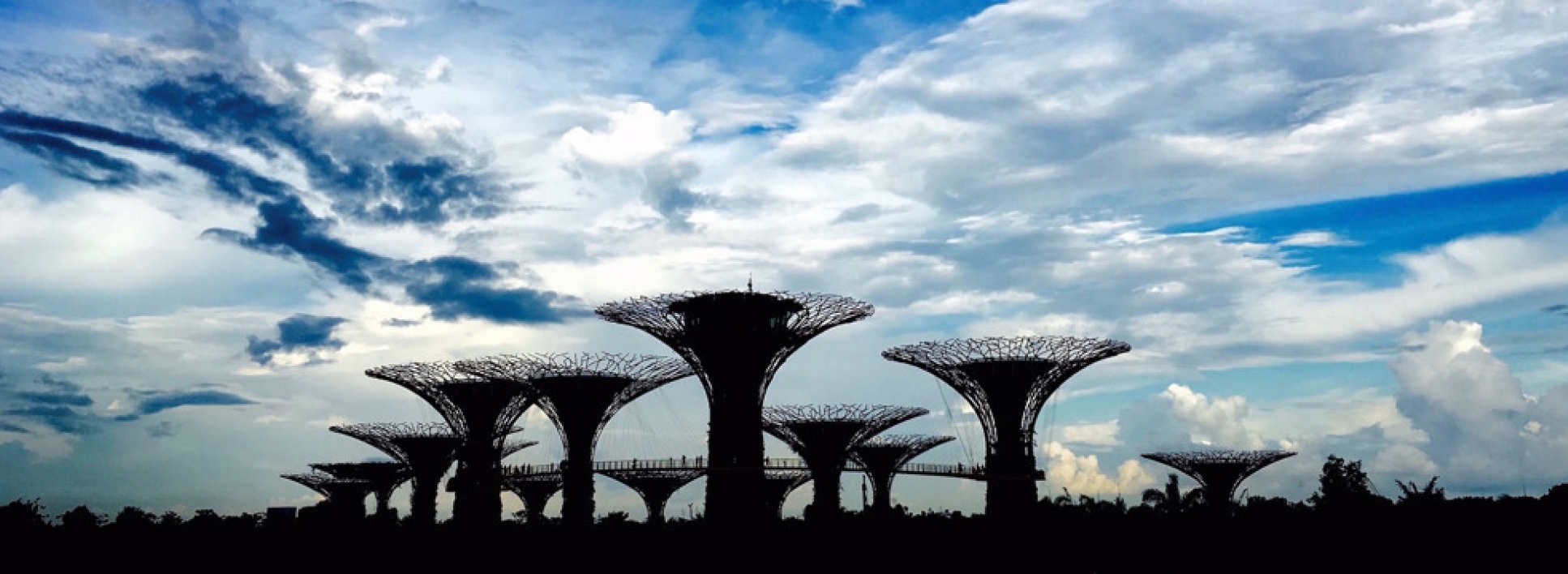
My research work with the Vascular Biology group focuses on how endothelial hormones regulate of cardiovascular health and disease. Once of the most important pathways in vascular hormone biology is cyclo-oxygenase (COX) which generates eicosanoid lipid mediators. COX is present in a constitutive form, COX-1 and an inducible form, COX-2, that is expressed during inflammation. Anti-inflammatory drugs such as diclofenac, ibuprofen and celecoxib, which are amongst the most widely used medications worldwide, all work by blocking COX-2 at the site of inflammation. However, these drugs cause cardiovascular adverse events which amount to an increased personal risk of around 30%. These side effects not only represent a significant risk factor for having heart attacks and strokes but have also resulted in an arrest by drug companies in the development of new drugs that work on this pathway and the withdrawal of their use for the prevention of cancer. Solving the problem of cardiovascular side effects caused by this class of drugs is therefore of great clinical significance. Currently there is little in the way of validated mechanisms or biomarkers to predict those individuals at risk and so I have taken a systems biology, ‘-omics’ approach to find new leads for to explain how COX-2 protects the cardiovascular system. My work so far as included transcriptomic, proteomic and lipidomic analysis of cardiovascular systems where COX-2 is manipulated.
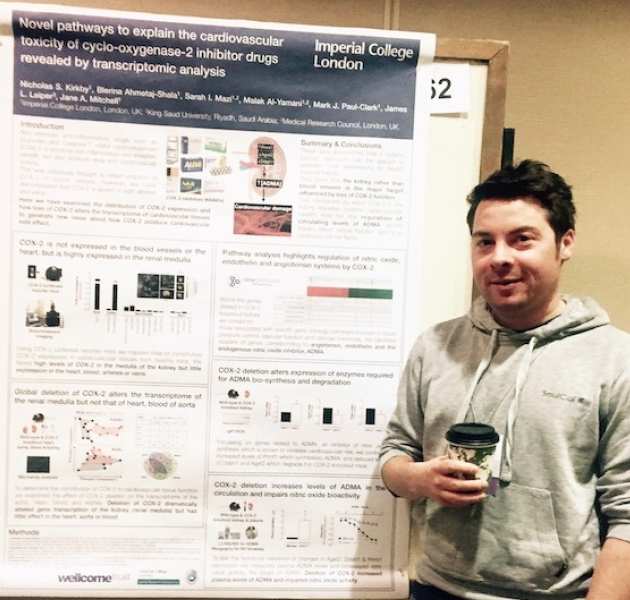 As a pharmacologist with no formal training in systems biology technology or bioinformatics I was fortunate to get my work accepted for presentation at the International Conference on Systems Biology held in Singapore in November 2015. This included transcriptomic data obtained from healthy volunteers receiving COX-2 inhibitors which identified novel cardiovascular and inflammatory pathways regulated by these drugs and lipidomic analysis of samples from a unique patient that lacks the ability to make eicosanoid mediators (now published as Kirkby et al. FASEB J. 2015). These presentations were well received and the feedback I got from experts was invaluable. The meeting also gave me the opportunity to see the latest data and technology for analyzing ‘-omics’ based readouts from world leaders in the field and see how these approaches have been applied to other biomedical research questions to guide drug development and improve clinical care.
As a pharmacologist with no formal training in systems biology technology or bioinformatics I was fortunate to get my work accepted for presentation at the International Conference on Systems Biology held in Singapore in November 2015. This included transcriptomic data obtained from healthy volunteers receiving COX-2 inhibitors which identified novel cardiovascular and inflammatory pathways regulated by these drugs and lipidomic analysis of samples from a unique patient that lacks the ability to make eicosanoid mediators (now published as Kirkby et al. FASEB J. 2015). These presentations were well received and the feedback I got from experts was invaluable. The meeting also gave me the opportunity to see the latest data and technology for analyzing ‘-omics’ based readouts from world leaders in the field and see how these approaches have been applied to other biomedical research questions to guide drug development and improve clinical care.
I am very grateful to the NHLI Trustees for the award of an NHLI Foundation Postdoctoral travel award that allowed me to attend this meeting.
Read more about Nick and his research
Dr Kylie Belchamber
The American Thoracic Society’s annual conference

I am very grateful to have received an NHLI Foundation Travel Award to support my attendance at The American Thoracic Society’s annual conference, held in the wonderful city of San Francisco, USA in May 2016. My research focusses on the cell biology of COPD, which fitted perfectly with the conference programme which addressed all aspects of lung biology, from clinical perspectives on lung treatment, to the basic biology of lung cells. Over 17,000 delegates attended the conference, which took place across 5 days.
To start the conference, I attended a full day post-graduate symposium on ‘Heterogeneity and plasticity of lung macrophages: towards precision medicine’. This symposium showcased the latest research on lung macrophage origin and function, which is ever evolving as our understanding of these important cells increases. This was followed by a lab meeting style discussion which focused on the discussion of technical methodologies for working with these cells, which is not a topic normally reviewed in such symposia and so was very helpful to young scientists attending.
The remainder of the conference sessions were exceptional, including my poster discussion session where I presented my work on ‘Defective phagocytosis of Aspergillus fumigatus by COPD macrophages’ which is part of a new collaboration we have with Darius Armstrong-James within the NHLI. This lead to an enthusiastic discussion session on the relevance of murine macrophage studies and models to human data and disease settings and was a very rewarding experience.
An important outcome of these meetings is to connect with other researchers, and I was lucky enough to meet with many key scientists in my field from across the world and gain some knowledge and career advice from them. I met and spoke with researchers from the USA and Australia and hope to establish collaborations that will enhance my career in respiratory cell biology. I also maintained an online twitter presence for my group throughout the meeting, and contributed to lively twitter discussions using the hashtag #ATS2016. Using twitter allowed me to connect with other groups in the US and across the world, which is a worthwhile outcome.
Overall, attending this meeting was a fantastic experience and I would again like the thank the NHLI Foundation for supporting me.
Read more about Kylie and her research
Dr Nicola Whiffin
Keystone symposium on Heart Failure: Genetics, Genomics and Epigenetics

I am very grateful to the NHLI foundation for supporting my attendance at the Keystone Symposia meeting on Heart Failure in April 2016. The conference was held in Snowbird resort, around half an hours drive up into the mountains from Salt Lake City in North Utah, a stunning and very inspiring setting.
The meeting focussed on the genetics, genomics and epigenetics of heart failure, which has great relevance to my field of study. Around 350 scientists attended this meeting and the joint symposium “Cardiac Development, Regeneration and Repair”, including many of the leading principle investigators and experts in the field. In addition to keynote and invited presentations, the setup of the meeting included short talks selected from submitted abstracts as well as social hours and associated evening poster sessions aimed to foster collaborations and networking. Furthermore, the talks themselves were scheduled to allow for questions, discussions and sharing of ideas, with a big focus on the involvement of more junior scientists.
The first day Keynote address was delivered by Lasker prize winner Professor James Spudich from Stanford University who gave a talk entitled “Mutations to Mechanisms and Therapies” detailing the interactions of beta myosin, actin and myosin binding proteins and how mutations in these genes are thought to contribute to disease. Other very inspiring talks included Eric Olson on using the CRISPR/Cas9 editing system to correct genetic alterations in Duchenne Muscular Dystrophy, and Christopher Chen who has been using 3D printing to create dissolvable scaffolds on which to seed cells into structures more resembling of human tissues.
On the 3rd day of the conference I presented a poster on my recent work entitled “Automating variant detection and interpretation of inherited cardiac condition genes”. I had many interesting discussions with delegates from around the world as a result of my poster and it was a very valuable experience.
Attending this meeting was very beneficial to my own research as it provided both valuable background and current thinking relevant to the interpretation of genetic variants in cardiac disease. It also gave me the opportunity to present my work, to network with leading scientists in the field and to hear about very inspiring and exciting cutting-edge science. Once again I would like to thank the NHLI foundation for supporting my attendance.
I am thankful to the NHLI Foundation for awarding me a travel grant so that I could present my work at the European Respiratory Society (ERS) annual congress, which this year was held in Amsterdam between 26 and 30 September. This is the largest European meeting for respiratory scientists and clinicians to present their findings and it covers topics from laboratory-based research to public health and translational science.
On the second day of the congress, I had the pleasure to chair a thematic poster session on “Prevalence of respiratory disease”. In this session, most reports were on chronic obstructive pulmonary disease and asthma, but there were also studies on allergen sensitisation, rhinitis and cough. This was an interesting experience as I could see what questions respiratory epidemiologists from different regions of the world are focusing their attention on and how they are trying to answer those questions.
On the third day, I have presented my findings on changes in sensitisation to common allergens in a cohort of European adults as they aged over the last 20 years. Although my talk was the last of eight on “New observations in respiratory epidemiology” I had a very nice audience of several dozens of researchers, and stimulating questions at the end.
During my stay in Amsterdam, I have also attended the meetings of two large epidemiological studies (European Community Respiratory Health Survey; Burden of Obstructive Lung Disease Study) that took place in parallel to the ERS congress.
Attending the ERS congress and these other two meetings was extremely beneficial to my own research and provided me the opportunity to discuss current findings, as well as my own ideas, with leading researchers in the field of respiratory diseases. Once again, I would like to thank the NHLI Foundation for supporting my participation in the above meetings.
Dr Michael Cox: May 2015
The American Thoracic Society’s annual conference
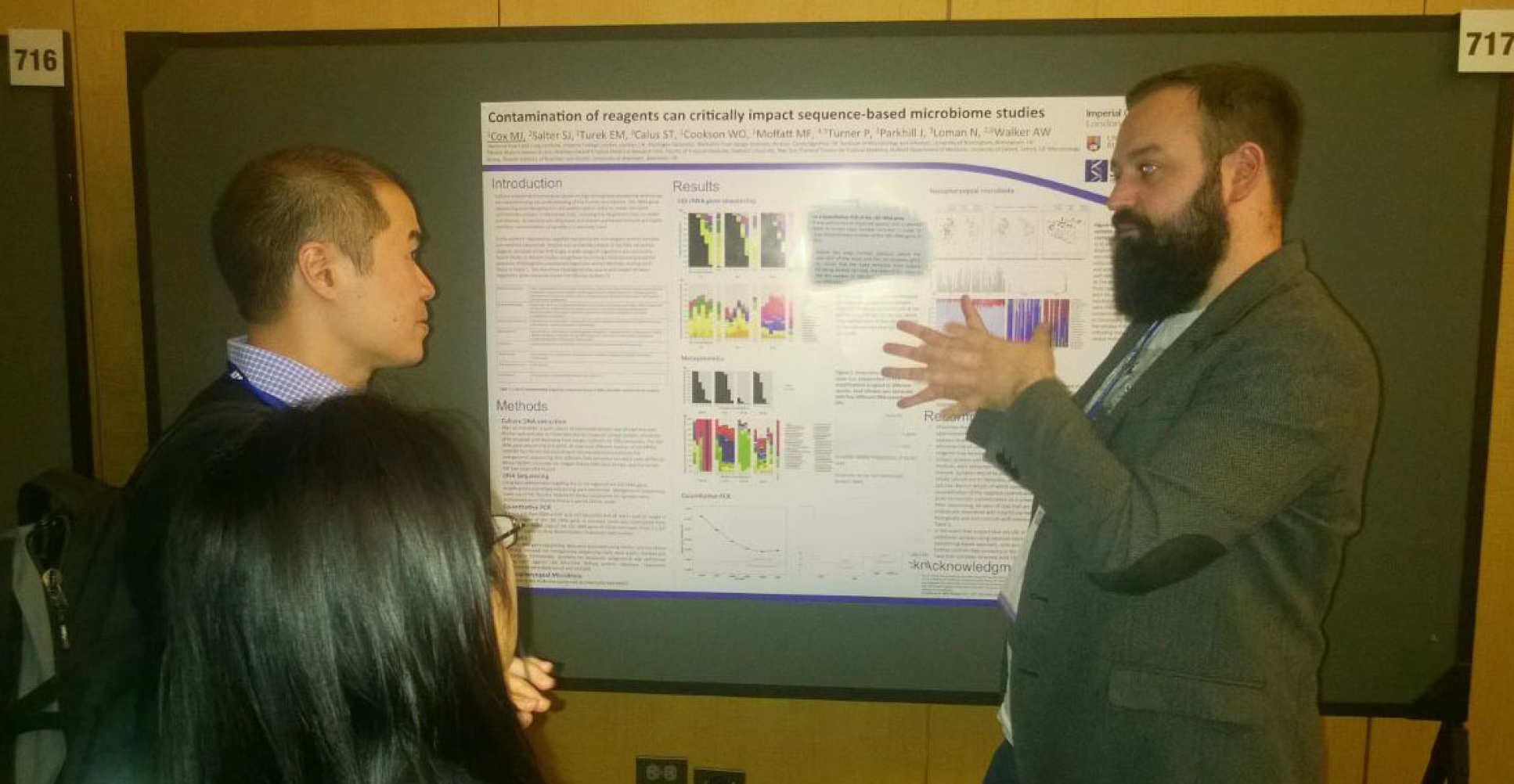
I am grateful to have received an NHLI Foundation Travel Award to support my attendance at The American Thoracic Society’s annual conference. My own interest is the human respiratory microbiome, which cuts across lung diseases and also brings in aspects of clinical infection and immunology.
Communication of the meeting to a wider audience is one of the conditions of the award, and in the past I have used Twitter to highlight interesting findings and discuss them with the wider scientific community. This is useful, but has limitations in that there is no permanent record. This time I planned to use Etherpad instead to capture the meeting which allows collaborative real time editing of a public site. In this way I could collate the microbiome sessions distributed across the meeting and maintain a public record. As Etherpad is a public communication tool other attendees could also contribute and I recruited some contacts to join the note-taking. Technology let me down somewhat and in most of the sessions local wifi couldn’t cope with maintaining an internet connection, and battery life combined with a dearth of power outlets. For the next meeting, a Mifi hotspot and battery packs are the order of the day.
Technology aside, it was an excellent meeting for microbiome research. Techniques are advancing and there was an awareness of the technical pitfalls and experimental design requirements that have been lacking at previous meetings. There was also a genuine excitement about the approach, with many people asking about the best way to set up the approach in their own groups. My talk on the Non CF bronchiectasis microbiome, of work carried out with Dr Michael Loebinger and others within the NHLI and the Brompton, was well received and highlighted in other sessions. Altogether a really useful meeting for me to have attended, with thanks to the NHLI Foundation.
Dr Jill Johnson: April - May 2015
Australia and New Zealand Microcirculation Society Conference

Dr. Jill Johnson is a former Imperial College Junior Research Fellow and a current MRC-funded Research Fellow within Leukocyte Biology. Jill was awarded a NHLI Foundation Postdoctoral Travel Award in the International Category to attend the Australia and New Zealand Microcirculation Society conference held from 29 April to 2 May, 2015.
The Australia and New Zealand Microcirculation Society conference was held in Leura, Australia, in the beautiful Blue Mountains, a short train ride away from Sydney. Leura is one of many small towns along the Main Western railway line that cuts through the Blue Mountains National Park. The meeting was held at the Fairmont Leura resort, located on the edge of the dramatic Jamison Valley. The views from the resort are supposed to be absolutely beautiful, but due to four straight days of rain, the majesty of the mountains could not be enjoyed by the meeting attendees. However, the meeting organizers arranged for a tour through the Megalong Valley, complete with beautiful scenery, a visit to a winery and sightings of wild kangaroo troops.
The major topics covered by this meeting were Omics and the Microvasculature, Angiogenesis/Lymphangiogenesis and Cancer, Tissue Engineering/Wound Healing, Inflammation, Microparticles and the Microcirculation, Microcirculation, Pregnancy and the Neonatal Period, Microcirculation and Ageing, Vascular Tone, and Mural Cells and the Microcirculation. I attended the meeting as an invited speaker in the final session, where I gave an update on my current research into pericytes, a type of progenitor cell associated with the microcirculation in the lungs and elsewhere in the body. The meeting was small and very well-organized, with talk focused on unpublished data. Attendees had many opportunities for networking and socializing.
Attending this meeting was quite beneficial to my own research, since I study the microvasculature of the lung in chronic inflammatory disease. It was great to have the opportunity to discuss cutting edge science on the microvasculature with leading researchers and to move outside of my comfort zone while establishing myself as a mural cell expert, which also contributed to enhancing my international reputation. In addition to attending this meeting, I was able to extend my trip to Australia to include a visit to the Woolcock Institute at the University of Sydney as well as to Monash University and the University of Melbourne, where I gave talks, met with colleagues and collaborators and provided some (hopefully) useful career advice to PhD students and junior postdocs at all three institutions. Thanks to the NHLI Foundation Postdoctoral Travel Award committee for supporting my trip to Australia.
Dr Laura Yates: November 2014
The Cold Spring Harbor Asia conference on Dynamics of Cellular Behaviors During Development and Disease
Suzhou, China

Dr. Laura Yates is an Imperial College Junior Research Fellow within Leukocyte Biology. Laura was awarded a NHLI Foundation Postdoctoral Travel Award in the International Category to attend a Cold Spring Harbor Asia conference held in Suzhou, China. Here, Laura gives a brief account of the meeting.
The Cold Spring Harbor Asia conference on Dynamics of Cellular Behaviors During Development and Disease was held in Suzhou, China located approximately 60 miles west of Shanghai. Suzhou is the second largest city in the Provence of Jiangsu, after its capital Nanjing. Suzhou belongs to the Yangtze River Delta region as it is situated on the Yangstze River and the Dushulake Conference Center gardens overlooked Lake Tai.
Due to the city's many canals, stone bridges, pagodas, and beautifully designed gardens, Suzhou is regarded as one of the top tourist attractions in China. We were fortunate enough to be taken on a tour of one of the classical gardens in old Suzhou, which is now registered as a UNESCO world Heritage Site, and a boat trip along the main canal at sunset provided first hand experience of why Suzhou is regarded as the “Venice of the East”.
The major topics covered by this meeting were; Cell Polarity and Development, Cell Polarity and Cancer, Dynamics of Cell - Cell interactions, Dynamics of Cell - Cell matrix and Vesicle trafficking, all of which are directly relevant to my own studies. The meeting was relatively small and very well organized, only new or unpublished data was presented and attendees had plenty of opportunity for discussion and to develop collaborations.
The conference brought together international experts such as; Senthil Muthuswamy, University of Toronto, who presented his recent observations that epithelial structures in vitro rotate 360 degress in a spinning motion, to weave their own basement membrane. This process appears to involve the cell polarity pathways and may have important implications in cancer. Martin Schwartz, Yale University, presented his most recent data on the relationship between integrin signalling, cell polarity and cytskeletal organisation in blood vessel formation and how flow forces and aberrant signalling can contribute to Athersclerosis (Baeyens et al., PNAS, 2014). The Keynote Talk, “Adhesive Mechanisms in multicellularity across scales from atoms to tissues”, was presented by James Nelson, Standford University. Dr Nelson’s laboratory have taken a structure-function approach to gain further insight in to the molecular mechanisms of cell-cell adhesion. This approach has identified some surprising differences in protein functions in diferrent tissues and organisms. My abstract was selected for a talk in which I presented some of my most recent data identifying a role for the cell polarity regulatory Scribble in lung tumourigenesis, which was well received (Elsum et al., Oncogene, 2013).
Attending this meeting was extremely beneficial to my own research, especially as I am currently establishing my own research group. The opportunity to discuss the current findings as well as my own ideas with leading scientists in my field was invaluable, and I would like to thank the NHLI Foundation Postdoctoral Travel Award committee for supporting my attendance at this meeting.
Dr Laura Denney: December 2014
The Cell Symposia – The multifaceted role of type 2 immunity
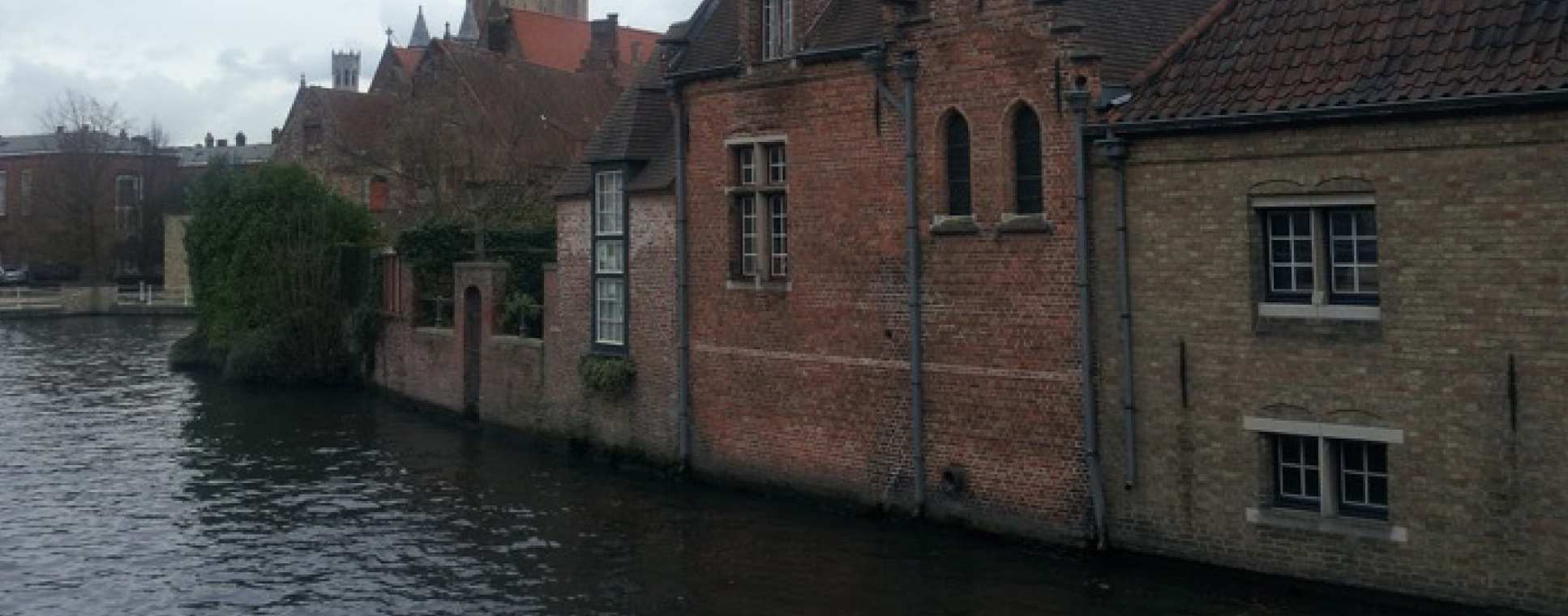
I gratefully acknowledge the award of NHLI Foundation Postdoctoral Travel Award which allowed me to attend The Cell Symposia – The multifaceted role of type 2 immunity held in the beautiful and historic city of Bruges in December 2014. The aim of this meeting was to bring leading scientists together to discuss new concepts and to allow delegates to network and share ideas. There were some outstanding talks presented during this meeting which shed light on the new directions and our broadening understanding of what type 2 immunity encompasses.
The opening keynote seminar was presented by Alan Sher (NIAID, USA) who took the audience on an entertaining tour of the history of type 2 immunity from description of mast cells by Paul Ehrlich to the latest developments in innate lymphoid cells. Sher questioned several deeply held immune concepts including the importance of IL-4 in the development of type 2 immunity, leading to a lively and good natured debate.
Hergen Spits (Tytgat Institute, The Netherlands) presented data illustrating the interrelationship between ILC1s (IFNg+) and ILC3s (IL-17+) describing the plasticity of these subsets in vitro and the rarity of ILC3s in early life. David Artis (Perelman School of Medicine, USA) presented data on the role of ILC2s in metabolic homeostasis, describing the how IL-33 and ILC2s promote beiging of white adipose tissue and limit obesity. Artis also discussed the wider implications of the find as a novel pathway for treating obesity and obesity-associated diseases.
The symposia also hosted two intensive poster sessions, these sessions held over lunch were very well attended and interactive. I presented a poster entitled ‘Pulmonary epithelial derived TGF-β1 is critical for the inception of innate lymphoid cell mediated allergic airways disease.’ We found that epithelial derived TGF-b has a central role in the generation of the pulmonary immune response. Mice which specifically lack epithelial TGF-b1 displayed a marked reduction in type 2 innate lymphoid cells (ILCs) resulting in suppression of IL-13 and hallmark features of the allergic response. The poster session generated many useful ideas and questions on the future directions of this work.
There was an extremely pertinent session at the end of the conference where the scientific organisers Bart Lambrecht, and David Artis summed up both the work presented over the last few days and the future direction of the field. They discussed the fundamental role of type 2 immunity in the maintenance of homeostasis. The shaping of the immune landscape via the co-evolution of multicellular organisms with both helminths and commensal bacteria was discussed as well as the role of factors secreted by helminths and bacteria which exert influence on the immune response. They also postulated that with new high definition techniques, namely mass cytometry (Cytof®) other as yet unidentified cell types may be defined and studied.
The symposia organisers made a special effort to show us the beautiful city of Bruges with guided tours and a civic reception hosted in the town hall. We even enjoyed samples from some of the 72 chocolate shops in the city. The symposia dinner was held at the famous De Halve Maan Brewery and was preceded by a brewer tour where we learned the art of Belgian beer making. These convivial and social surroundings made this ‘meet the speakers’ dinner (where each table of six was hosted by at least one speaker) the best I have attended, with senior academics offering advice and recommending next career steps for postdocs and PhD students. I would like to thank the NHLI Foundation for the travel award which enabled me to attend this inspiring and informative symposium and I look forward to the next meeting planned for 2016.
